


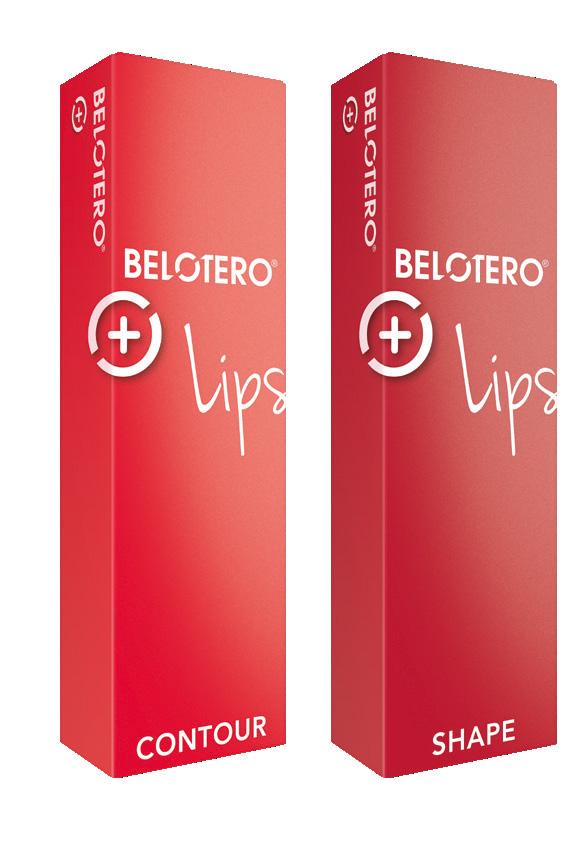
VOLUME 9/ISSUE 5 - APRIL 2022 ® M-BEL-UKI-1351 Date of Preparation March 2022 Merz Pharma UK Ltd, Ground Floor Suite B, Breakspear Park, Breakspear Way, Hemel Hempstead, Hertfordshire HP2 4TZ MERZ AESTHETICS and BELOTERO® are registered trademarks of Merz Pharma GmbH & Co. KGaA. @merzaesthetics.uki merz-aesthetics.co.uk Adverse events should be reported. Reporting forms and information for United Kingdom can be found at www.mhra.gov.uk/yellowcard. Reporting forms and information for Republic of Ireland can be found at https://www.hpra.ie/homepage/about-us/reportan-issue/mdiur. Adverse events should also be reported to Merz Pharma UK Ltd at the address above or by email to UKdrugsafety@merz.com or on +44 (0) 333 200 4143. Sponsored by Merz Aesthetics UK & Ireland Merz Aesthetics UK & Ireland A NATURAL LOOK IS AN EXACT SCIENCE Take artistry to the next level with BELOTERO® Lips Shape and Contour, the first combination approach to lip enhancement. AWARDSAESTHETICS ANNOUNCED!WINNERS Understanding Personality Types Julie Scott identifies different personality types in your clinic
and Ageing
Hannah Davies describes the various effects of menopause on the skin Introducing Wellness Services Practitioners provide advice for patient wellness in clinic
and Toxin CPD Dr Emmaline Ashley explores the use of botulinum toxin for depression
Menopause
Dr
Depression
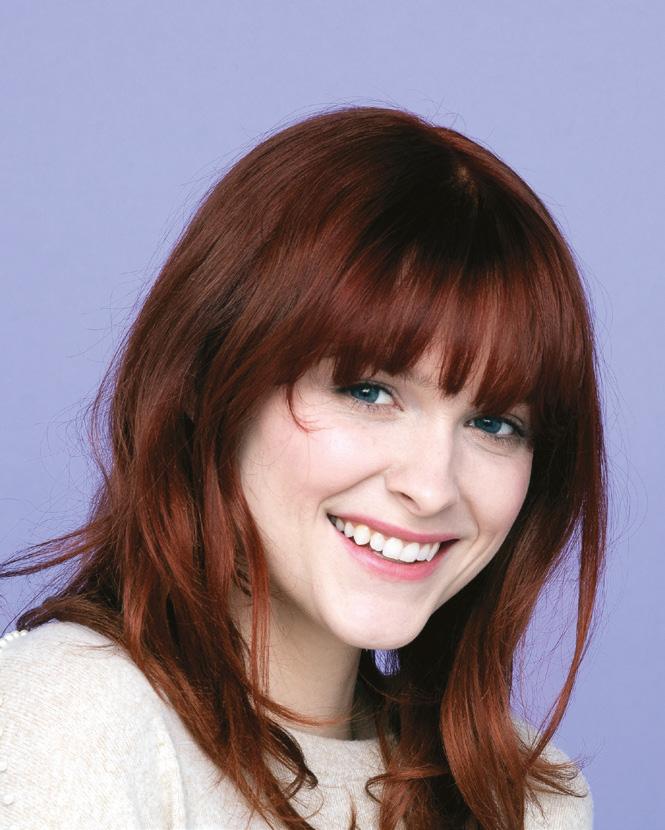



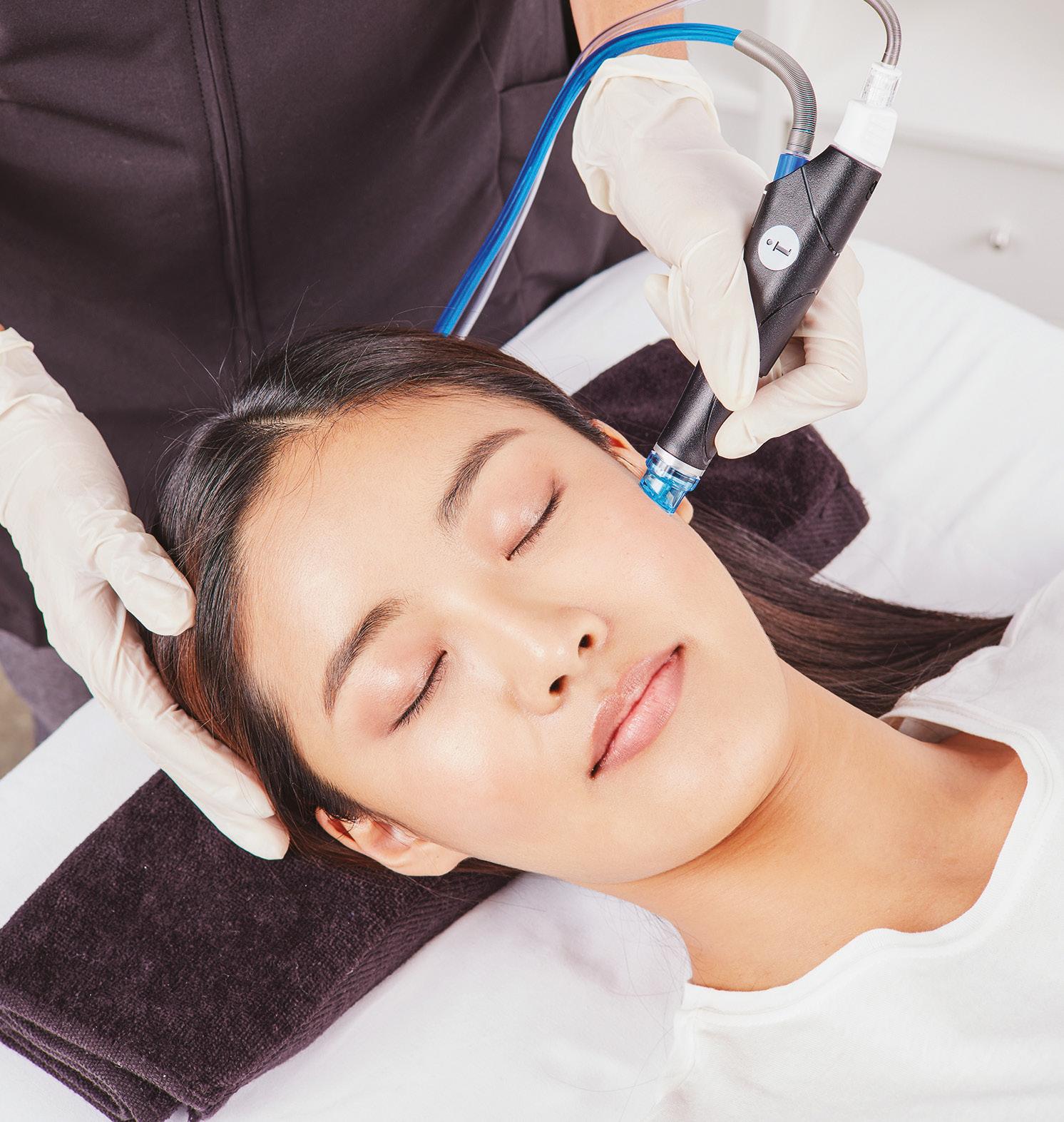
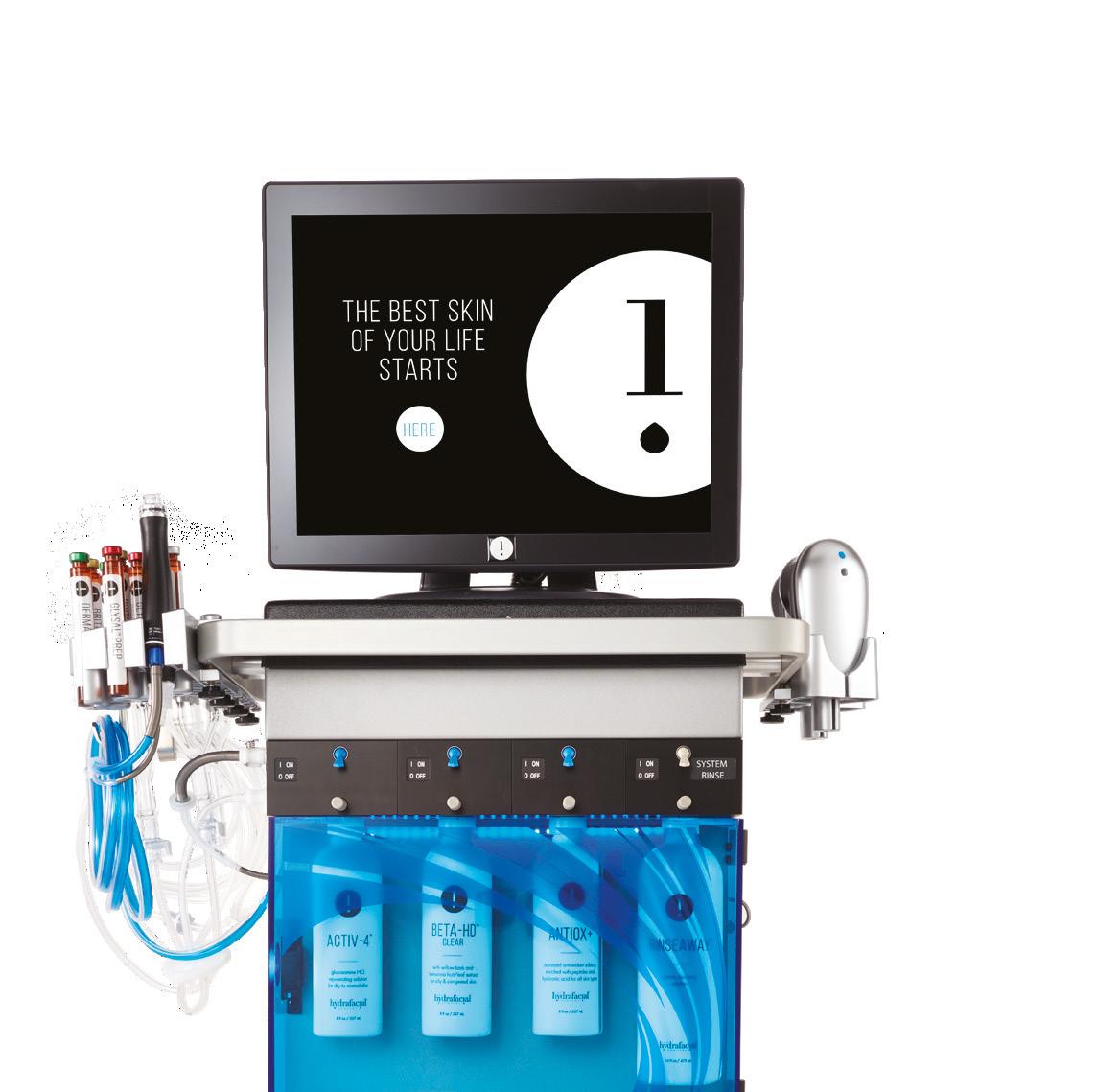
To see how one powerful device provides everything you need to power your business, contact us today:
Treatment. Endless Options. give your customers what they want! Simplification Multi-benefit solutions that save time1 Personalisation Treatments tailored to specific skin concerns2 RecommendatioN Skin health technology and regimen education1 HydraFacial is for everyone. It’s suitable for all skin types and addresses all skincare needs. HydraFacial delivers immediate, noticeable results, with no downtime, that keep your customers returning regularly. HydraFacial is your connection to millions of believers that know that beauty is more than a physical attribute – it’s a feeling. Consumers want to be pro-actively offered personalised solutions for skin health and provide them with education on their ideal, easy-to-follow skin health regimen1 And your clients needs are as individual as they are, which is why HydraFacial has partnered with the best brands in aesthetics to bring you advanced booster options that meet the emerging consumer trends, which are influencing our industry more than ever before. HydraFacial is scored as a ‘99% Worth It’ rating by www.realself.com and on average, somewhere in the world, a HydraFacial treatment is now carried out every 10 seconds! 1 EddieWouldGrow Facial Research 2018, n=2000; 2 Mintel Trends 2017 hydrafacial.co.uk infouk@hydrafacial.com @hydrafacialuk 01788 572 007
One
DESTINATION GLOW
HydraFacial opens immersive new Flagship in London.
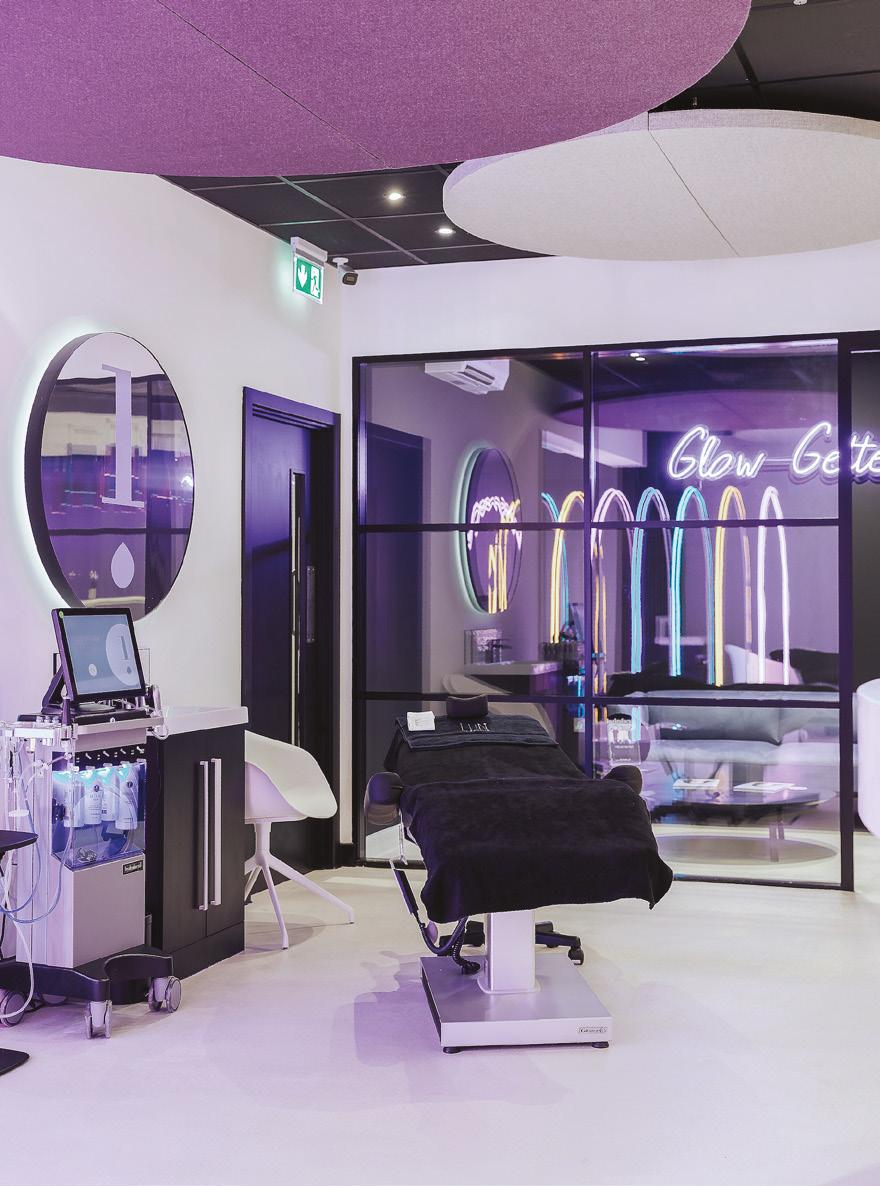
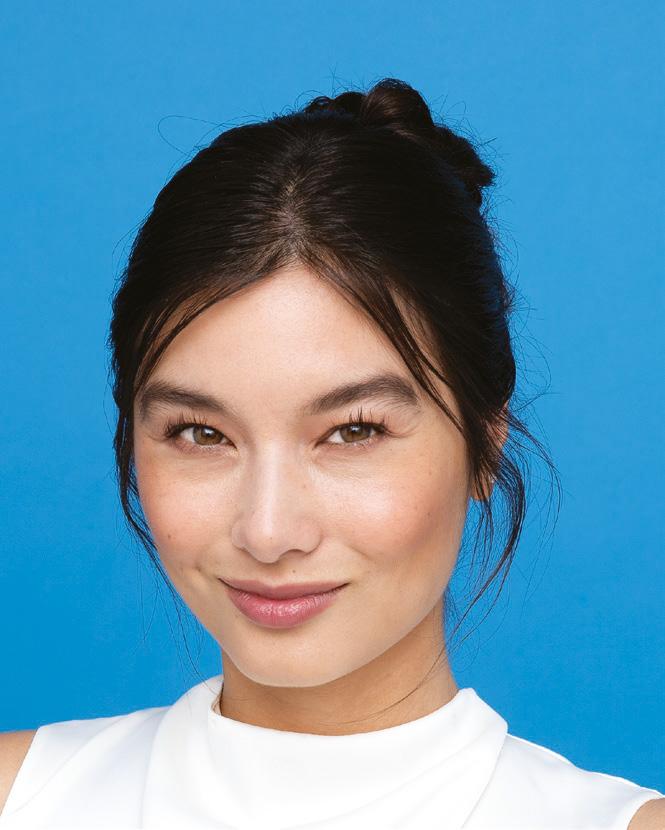

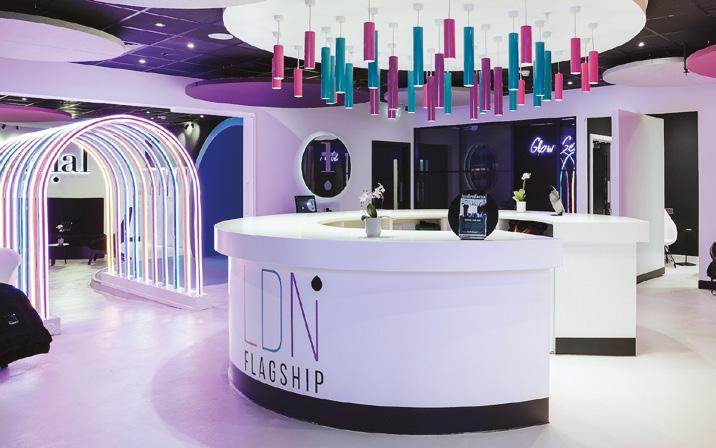
The doors are now open and aestheticians are assured a radiant reception at HydraFacial’s latest venture in the capital – HydraFacial LDN Flagship. Located on Portman Square in the bustling West End, the hybrid space has been designed to help drive consumer demand and connect the European-wide HydraFacial community with innovative training, education and marketing opportunities. Following a two-year renovation, the state-of-the-art LDN Flagship is HydraFacial’s largest investment to-date and underpins the company’s ‘skin health’ ambitions for the UK and EMEA markets.
“Our UK HydraFacial community is valued and everything about our new LDN Flagship has been designed to support their commercial success”, says UK & Ireland Country Manager, Lauren Gibson.
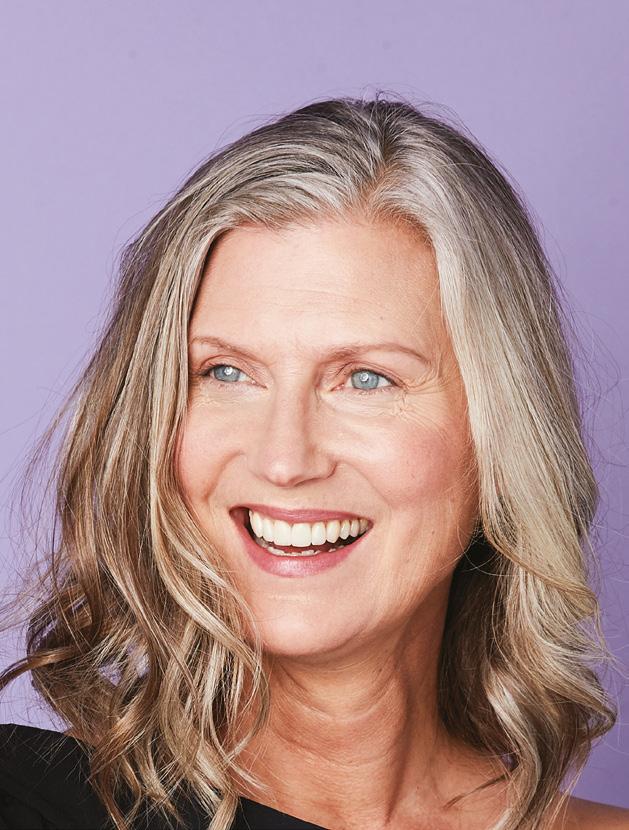

Every month, the LDN Flagship will deliver up to 750 deluxe treatments for registered members of the public, allowing the treatment-curious to - just once - ‘try before they buy’. This novel ecosystem is designed to socially-inspire and source new patient prospects, before converting them to a skin health programme with a recommended local provider.

In 2022, the new LDN Flagship will play a part in delivering more than 2.5 million treatments globally.
Alongside media masterclasses on trending wellbeing topics, the venue will play host to collaborative brand events and expert-led forums with doctors, facialists and makeup artists alike. A new VIP suite means celebrities and journalists can be treated in comfort and with West End stars and sporting legends already lined up to experience a radiance-reset.

To visit the new LDN Flagship, register for accredited CONNECT training or book a demo & learn how to enhance patient loyalty in your clinic or medispa, visit: www.hydrafacial.co.uk/london-flagship/
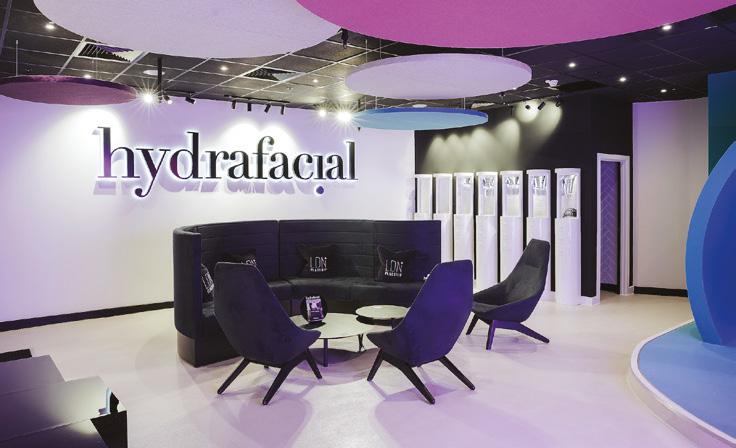
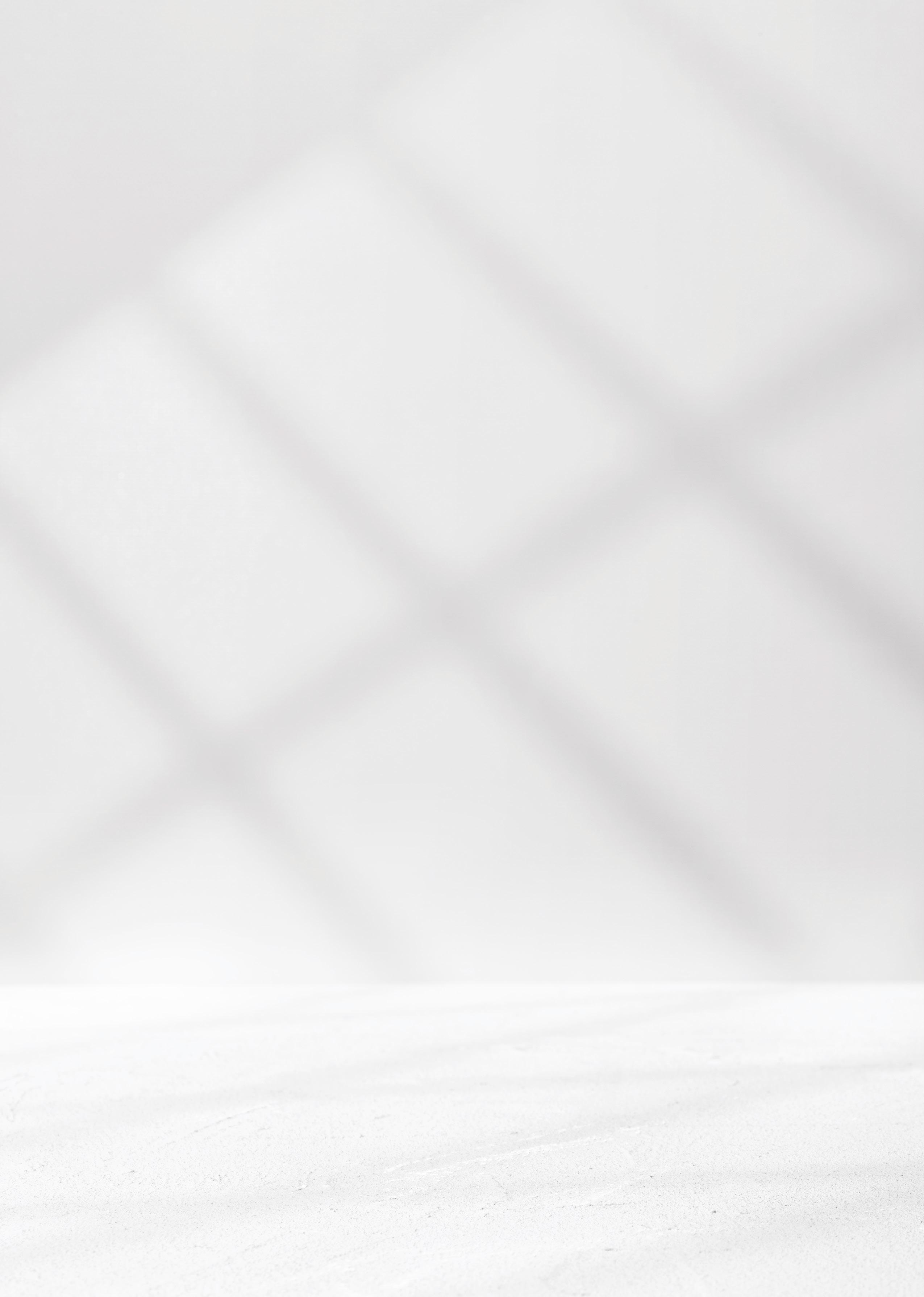











































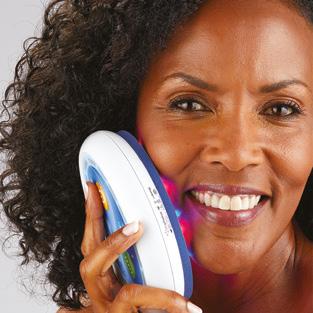
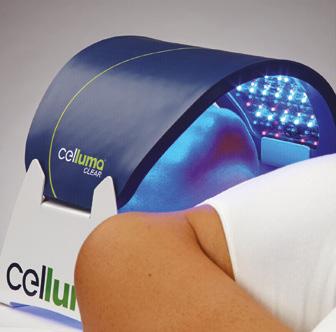
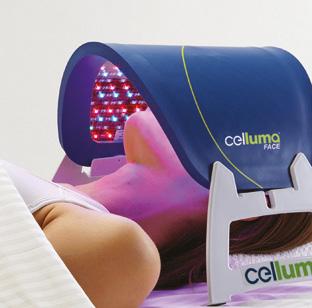
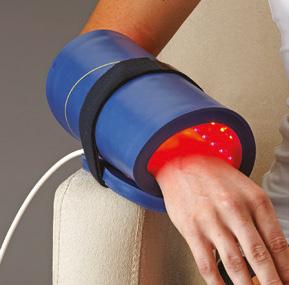
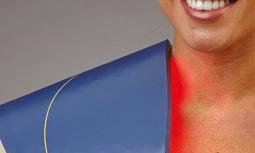
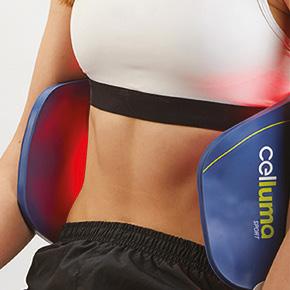







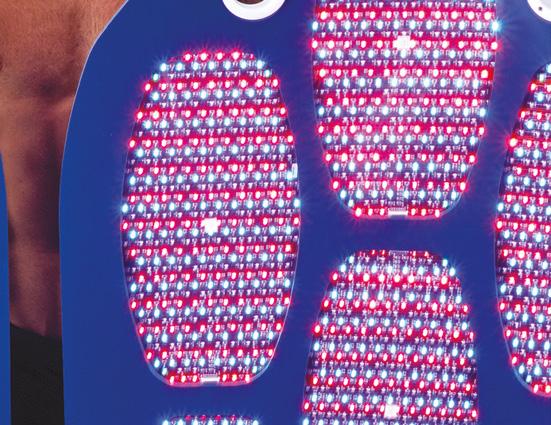



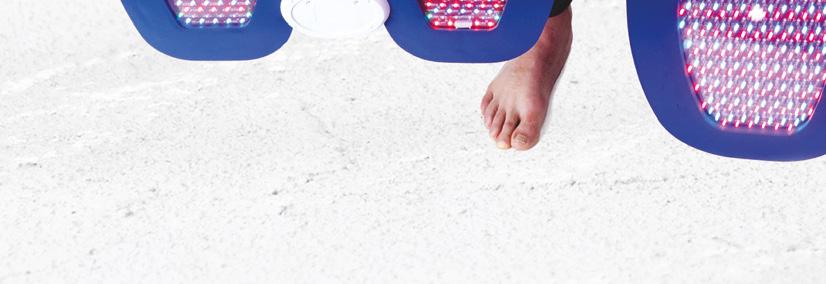










LED DEVICES CLINICALLY PROVEN Reduce inflammation and redness Speed post-procedure recovery Increase patient comfort levels Reduce patient downtime Enhance results ACNE | ANTI-AGEING | PAIN DERMAL WOUND HEALING Enquire about Celluma Reseller & Rental Programs CERTIFIED LIGHT THERAPY TRAINING BY WYNYARD AESTHETICS ACADEMY Please Ask About Our Ongoing Monthly Classes Contact: helen@Wynyard AestheticsAcademy.com FDA-CLEARED MEDICAL CE MARK
Aesthetics
your patients can expect from Beauty Uncovered LIVE CLINICAL PRACTICE 23 Special Feature: Adding Wellness Services to Your Clinic
Practitioners advise how you can integrate wellness into your practice 27 CPD: Treating Depression using Botulinum Toxin
Dr Emmaline Ashley explores the use of botulinum toxin for depression 31 No More Stiff Upper Lips
Julie Redmond outlines the growing popularity of lip enhancement 33
Understanding Menopause and Skin Ageing
Dr Hannah Davies describes the effects that menopause has on the skin 37
Introducing Body Contouring
Miss Jonquille Chantrey discusses body contouring indications and treatments 41 Discover the PicoSure Pro
The launch of the first 755 nm FDA-cleared laser to treat melasma pigment 42 The Aesthetics Awards Winners
Discover the 2022 Awards Winners 56

Learning in Layers Live: A Full-face Masterclass with REVANESSE
Canadian powerhouse Prollenium brought facial anatomy to life at ACE 59 Using HA as a Skin Booster
Dr Ahmed El-Houssieny explores how microinjections can boost skin quality 62
Understanding Dermaplaning
Dr Rabia Malik explains why dermaplaning has a place within aesthetics 66 Managing Needle Phobic Patients
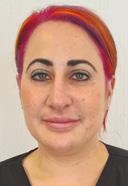

Claire Newman details how to deal with needle phobic patients 70 Integrating Skincare into Practice
Dr Jonquille Chantrey comments on integrating skincare into her clinic 71 Abstracts
A round-up and summary of useful clinical papers IN PRACTICE 72
Understanding Personality Types
Julie Scott explains different personality types in your patients 75 Setting up a Weight Loss Clinic

Dr Kam Lally and Dr Mayoni Gooneratne discuss adding weight loss services to your clinic 78 Building the Mindset of a Successful Clinic Owner
Alan Adams explains how to build a clinic that will survive and thrive 80 In Profile: Dr Simon Ravichandran
How Dr Ravichandran became part of the Merz Innovation Board 81 In The Life Of Dr Manav Bawa
The rising star describes how he feels to win an Aesthetics Award 82 The Last Word: Phone Numbers
Miss Sherina Balaratnam evaluates whether you should give your phone number to patients
Clinical Contributors
Dr Emmaline J Ashley completed her honour’s degree in medicine from University College Dublin, a Master’s in Surgery with the Royal College of Surgeons Ireland, and a Professional Certificate in Clinical Dermatological at University College Dublin.
Dr Hannah Davies has a Bachelor of Medicine and Bachelor of Surgery, as well as a first-class degree in Biomedical Science from the University College London. She currently works as a GP as well as leading her private aesthetic clinic, Dr Davies Aesthetics.

Miss Jonquille Chantrey is an aesthetic surgeon and founder of ØNE aesthetic studiø with more than 16 years’ scientific product development experience. She is a prominent global thought leader and has spoken throughout six continents.
Dr Ahmed El-Houssieny is a trained anaesthetist and an honorary lecturer at the University of Chester and an education provider on cosmetic procedures.

Dr El-Houssieny is a member of the British College of Aesthetic Medicine.


Dr Rabia Malik is an aesthetic practitioner and GP. Since qualifying from King’s College London, Dr Malik has worked at St Mary’s Hospital and in general practice in Notting Hill. Dr Malik was the resident aesthetic doctor at Grace Belgravia and she is now based at 51 Harley St.
Claire Newman is a mental health nurse prescriber and director at Soft Touches Aesthetics in Hertfordshire. She is a Level 7 assessor for Derma Medical and on the academic faculty for Intraline. She is passionate about mental health and promoting confidence and wellbeing.
Contents • April 2022 The Monumental Return of ACE Page 18 Special Feature: Adding Wellness Services to Your Clinic Page 23
NEXT MONTH
FOCUS:
•
the
•
08 News The latest product and industry news 17 Production and Research
Laboratories
IN
SUMMER
Caring for Black Skin in
Summer
Treating Cellulite
at
VIVACY
18 The
20 Beauty Uncovered LIVE brings Safety to the
look at what
visits Archamps, France, to learn more about Stylage dermal fillers
Monumental Return of ACE After the Conference & Exhibition, Aesthetics reflects on the highlights
Forefront Take a
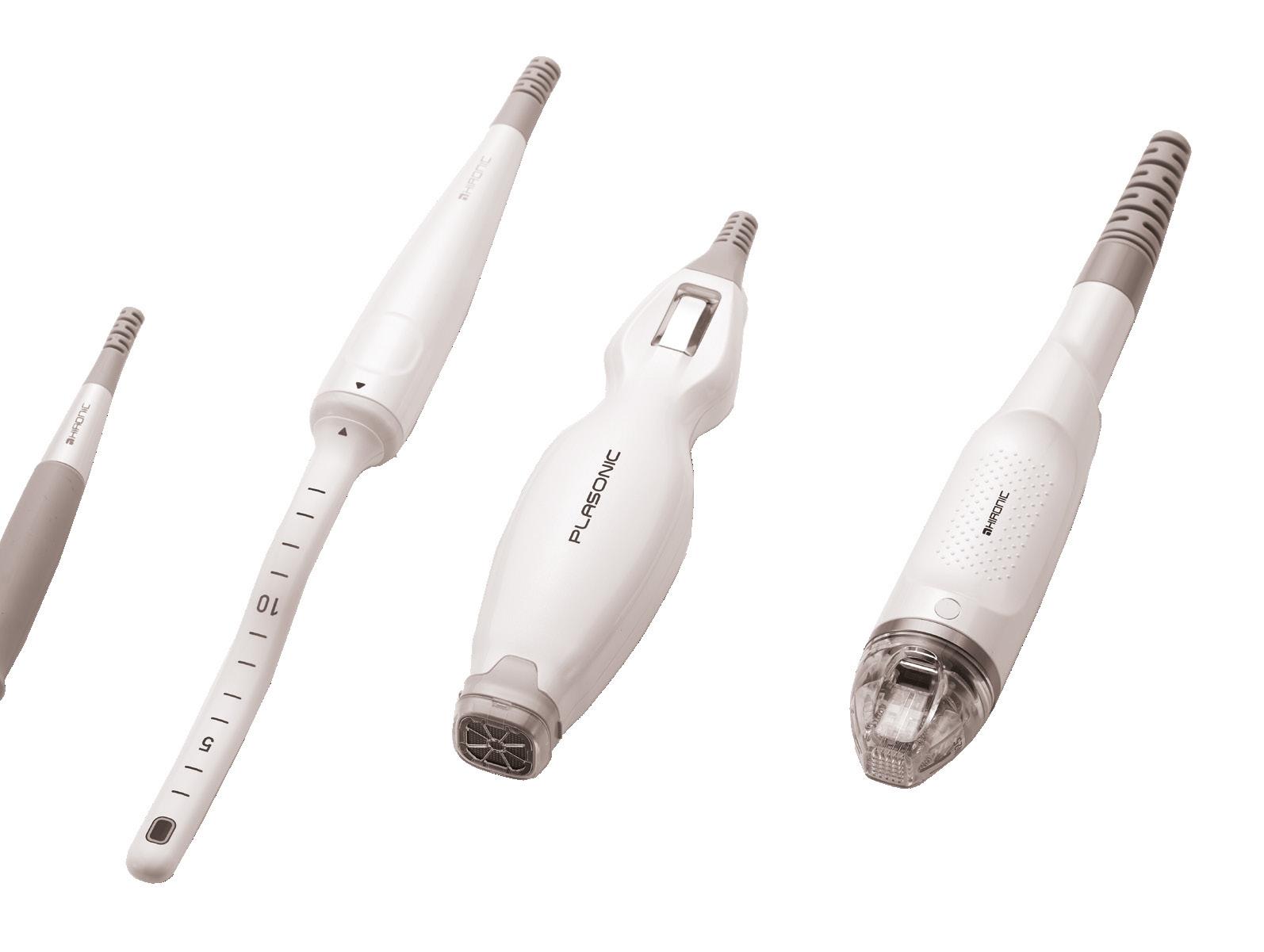


RC RF-Circle RN RF-Needle Scar & Stretch Marks | Skin Lifting & Tightening | Anti-ageing & Rejuvenating Acne Solution | Pore Refining | Vaginal Rejuvenation
medical aesthetic practitioners, we want to be able to give our patients treatment options, whatever their concern might be, and with Gentlo we can
skin concerns
patients.
Clinic The first innovative RF Microneedling device unified with Plasma technology. “ ” hello@beamwave.co.uk 0208 191 7117 Beamwavetech Beamwavetechnologies wwww.beamwave.co.uk The Gentle RF Solution
As
address most common
and help our
Dr Rehannna Beckhurst, Co-owner of iFab
We at Aesthetics are ecstatic that we were finally able to host the annual Aesthetics Conference & Exhibition (ACE) and The Aesthetics Awards over one weekend! And what a weekend it was... ACE was an absolute buzz, with more than 2,400+ professionals from across the aesthetics field attending to reconnect, network and learn about the latest treatment and technique developments. It was such a pleasure to see so many friends, colleagues and readers and meet some new faces! The Aesthetics Awards were a real highlight for me. With 400 entries, I would like to applaud all of those who made it as a Finalist, and special congratulations go to those who were Highly Commended, Commended and received Winner’s trophies (p.42). As you know, there are so many fantastic individuals, teams and companies doing wonderful things to improve safety and develop this field, so you really are all winners in my eyes! Now, to the journal! Health and wellbeing is becoming a huge focus, and this has really been gaining momentum
Shannon Kilgariff Editor & Content Manager @shannonkilgariff

throughout the pandemic. That’s why wellness is this month’s theme and we have some great articles for you to increase your knowledge in this area. I recommend reading the Special Feature on p.23 to get an overview of how and why you should consider adding wellness services into your practice, as well as how you can holistically manage needle phobic patients on p.66. You should also read about adding weight loss services into your clinic in our In Practice section (p.75) and you can also get an overview of body contouring treatments on p.37. The different uses of botulinum toxin outside of treating lines and wrinkles always fascinates me, and to coincide with our wellness theme we also have our CPD article looking at the literature around the relationship between toxin and improving depression – an interesting read on p.29 Finally, I can’t wait to see you all again very soon at our next event – Beauty Uncovered LIVE – on May 7-8 in London. This is a truly pioneering event, opening the world of aesthetic medicine to the public! You can get free tickets on p.20 and please do spread the word so we can improve education and knowledge amongst the public about all things aesthetics!
Clinical Advisory Board
Leading figures from the medical aesthetic community have joined the Aesthetics Advisory Board to help steer the direction of our educational, clinical and business content
Mr Naveen Cavale has been a consultant plastic, reconstructive and aesthetic surgeon since 2009. He has his own private clinic and hospital, REAL, in London’s Battersea. Mr Cavale is the national secretary for the ISAPS, president of the Royal Society of Medicine, and vice-chair for the British Foundation for International Reconstructive Surgery.
Jackie Partridge is an aesthetic nurse prescriber with a BSc in Professional Practice (Dermatology). She has recently completed her Master’s in Aesthetic Medicine, for which she is also a course mentor. Partridge is a founding board member of the British Association of Cosmetic Nurses and has represented the association for Health Improvement Scotland.
Mr Adrian Richards is a plastic and cosmetic surgeon with 18 years’ experience. He is the clinical director of the aesthetic training provider Cosmetic Courses and surgeon at The Private Clinic. He is also a member of the British Association of Plastic and Reconstructive and Aesthetic Surgeons and the British Association of Aesthetic Plastic Surgeons.

Miss Elizabeth Hawkes is a consultant ophthalmologist and oculoplastic surgeon. She is the lead oculoplastic surgeon at the Cadogan Clinic, specialising in blepharoplasty and advanced facial aesthetics. Miss Hawkes is a full member of the BOPSS and the ESOPRS and is an examiner and fellow of the Royal College of Ophthalmologists.
Dr Tapan Patel is the founder and medical director of PHI Clinic. He has more than 16 years’ clinical experience and has been performing aesthetic treatments for more than 14 years. Recently, he was listed in Tatler’s Top 30 Anti-Ageing Experts. Dr Patel is passionate about standards in aesthetic medicine.

Dr Souphiyeh Samizadeh is a dental surgeon with a Master’s degree in Aesthetic Medicine and a PGCert in Clinical Education. She is the founder of the Great British Academy of Medicine and Revivify London Clinic. Dr Samizadeh is a Visiting Teaching Fellow at University College London and King’s College London.
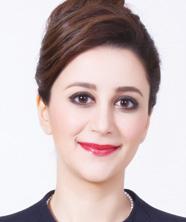


Sharon Bennett is chair of the British Association of Cosmetic Nurses (BACN), previous UK lead of the BSI committee for aesthetic non-surgical standards, and member of the Clinical Advisory Group for the JCCP. She is a trainer and registered university mentor in cosmetic medical practice, and is finishing her MSc at Northumbria University. Bennett has won the Aesthetics Award for nurse practitioner of the year and the Award for Outstanding Achievement. ARTICLE PDFs AND REPRO
Dr Raj Acquilla has more than 12 years’ experience in facial aesthetic medicine. In 2015 he won the Aesthetics Award for Aesthetic Medical Practitioner of the Year and in 2012 he was named Speaker of the Year. Dr Acquilla is a UK ambassador, global KOL and masterclass trainer for botulinum toxin and dermal fillers.

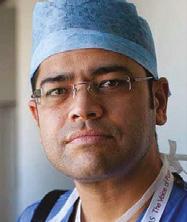
Dr Stefanie Williams is a dermatologist with a special interest in adult acne, rosacea and aesthetic medicine. She is the founder and medical director of multi-award winning EUDELO Dermatology & Skin Wellbeing in London, and creator of Delo Rx skincare. She is the author of three books and has published more than 100 scientific articles, book chapters and abstracts.
Courtney Baldwin • Event Manager
T: 0203 196 4300 | M: 07818 118 741
courtney.baldwin@easyfairs.com
Judith Nowell • Business Development Manager T: 0203 196 4352 | M: 07494 179535

judith@aestheticsjournal.com
Chloe Carville • Sales Executive
T: 0203 196 4367 | chloe.carville@aestheticsjournal.com
Emma Coyne • Sales Executive T: 020 3196 4372 | emma.coyne@easyfairs.com
MARKETING
Aleiya Lonsdale • Head of Marketing T: 0203 196 4375 | aleiya.lonsdale@easyfairs.com
Aimee Moore • Marketing Manager T: 020 3196 4370 | aimee.moore@easyfairs.com
Abigail Larkin • Marketing Executive T: 020 3196 4306 | abigail.larkin@easyfairs.com

Editor’s letter
DISCLAIMER: The editor and the publishers do not necessarily agree with the views expressed by contributors and advertisers nor do they accept responsibility for any errors in the transmission of the subject matter in this publication. In all matters the editor’s decision is final. PUBLISHED BY Aesthetics Journal @aestheticsgroup Aesthetics @aestheticsjournaluk
Material may not be reproduced in any form without the publisher’s written permission. For PDF file support please contact Chloe Carville, contact@aestheticsjournal.com © Copyright 2022 Aesthetics. All rights reserved. Aesthetics is published by Aesthetics Media Ltd, which is registered as a limited company in England; No 9887184
Aesthetics Media PORTFOLIO MANAGEMENT Alison Willis Director T: 07747 761198 |
Kilgariff Editor & Content Manager
|
359 257
Carver
|
Holden Content
|
Johnson •
Designer
Sharon Bennett, Clinical Lead
Do you have any techniques to share, case studies to showcase or knowledge to impart? Email: editorial@aestheticsjournal.com WE WANT TO HEAR FROM YOU!
alison.willis@easyfairs.com EDITORIAL Shannon
T: 0203 196 4351
M: 07557
shannon@aestheticsjournal.com Holly
Journalist
T: 0203 196 4427 holly.carver@easyfairs.com Ellie
Writer
T: 0203 196 4265 ellie.holden@easyfairs.com DESIGN Peter
Senior
T: 0203 196 4359 | peter@aestheticsjournal.com
ADVERTISING & SPONSORSHIP
Talk #Aesthetics
Follow us on Twitter @aestheticsgroup
#AestheticsAwards
Dr Uliana Gout
@ulianagout
Hip hip horray – so grateful we’ve been awarded ‘Best Clinic London’ at the Aesthetics Awards 2022!


#Conference
Dr MJ Rowland-Warmann
@dr_mj_smileworks
What a weekend! It was an absolute pleasure being invited to speak at ACE about facial ultrasound #ACE2022
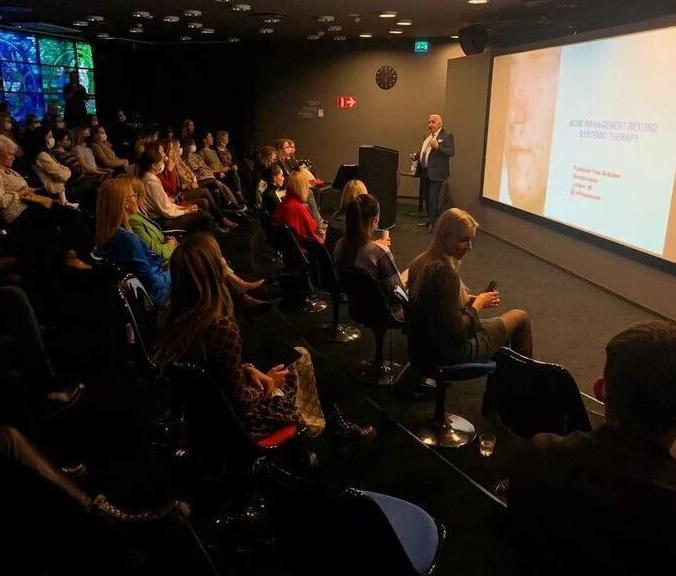
#Education
Dr Vincent Wong
@drvincentwong Throwback to the most incredible trip with the amazing @teoxaneofficial

Government approves new licensing scheme for injectables
The UK Government will introduce a new system of licensing in England for cosmetic procedures. The amendment highlighted in the Health and Care Bill will give the Secretary of State for Health and Social Care powers to introduce a license to perform non-surgical cosmetic procedures such as botulinum toxin and dermal filler injectables. The scope and details of this will be determined through extensive engagement including a public consultation. The licensing scheme will introduce consistent standards which individuals carrying out cosmetic procedures will have to meet, as well as hygiene and safety standards for premises. Sajid Javid, Secretary of State for Health and Social Care, said, “While most of those in the aesthetics industry follow good practice when it comes to patient safety, far too many people have been left emotionally and physically scarred after botched cosmetic procedures. I am committed to protecting patient safety by making it an offence for someone to perform these cosmetic procedures without a license. I urge anyone considering a procedure to take the time to think about the impact on their physical and mental health and ensure they are using a reputable, safe and qualified practitioner.” Professor David Sines, executive chair and registrar of the Joint Council of Cosmetic Practitioners (JCCP), commented, “The JCCP was delighted to receive confirmation that the Secretary of State is now introducing a national system of licensing for non-surgical cosmetic procedures in England, following his decision to introduce an amendment to the forthcoming Health and Care Bill. The JCCP places patient safety and public protection at the heart of all of its activities and has campaigned relentlessly over the past four years for the implementation of a nationally approved system of licensing for the aesthetic sector underpinned by mandated standards for education and training for all practitioners.”
Complications
#Skincare
Dr Martin Kinsella
@drmartinkinsella
I am so proud to finally announce the official launch of my brand-new luxury skincare range #skin
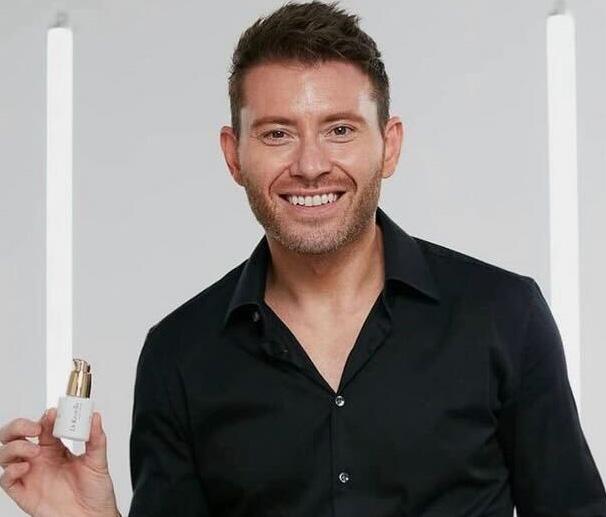
#Dermatology
Professor Firas Al-Niaimi
@drfirasalniaimi_
Loved my time in Estonia doing a mixture of dermatology presentations and exploring the beautiful sights
ACE Group World conference available to watch online
The Aesthetic Complications Expert (ACE) Group World conference, held at ExCeL, in conjunction with CCR in October, is now available to view online. The conference had nearly two and half hours of content, providing education and guidance for the diagnosis, prevention and management of complications in aesthetic medicine. Speakers included aesthetic practitioners Dr David Eccleston, Dr Xavier Goodarzian, Dr Martyn King, Dr Beatriz Molina, and oculoplastic surgeon Mrs Sabrina Shah-Desai. The conference is available to purchase and stream on iOS, Android, Apple TV, Roku, Chromecast or PC via Vimeo. If you do not have a Vimeo account, you will be required to create one in order to purchase and stream. ACE Group World members who did not pay to attend the conference and want to watch it online should contact ACE Group World.
Regulation
@aestheticsgroup @aestheticsjournaluk Aesthetics aestheticsjournal.com Reproduced from Aesthetics | Volume 9/Issue 5 - Apirl 2022
Free VIP tickets available for Beauty Uncovered LIVE
Tickets to attend consumer-facing event Beauty Uncovered LIVE are now available for healthcare professionals working in medical aesthetics. Patients will be able to learn and talk to healthcare professionals, companies and clinics about the aesthetics specialty as well as watch live demonstrations, and network at the Collagen Bar. There are 1,000 free VIP tickets available for healthcare professionals so make sure to use the code VIPHCP at the checkout. Event manager Courtney Baldwin said, “We are so excited to launch our first ever event aimed at the public! This is the perfect opportunity to gain an insight into the wonderful world of aesthetics. Don’t forget to tell your patients all about the event!” Beauty Uncovered LIVE will be taking place on May 7-8 at the Business Design Centre, London. If you would like marketing materials, email hello@beautyuncovered.com
Healthxchange launches Clever Patient
Aesthetic supplier Healthxchange has released a new online store called Clever Patient. Clever Patient gives practitioners the option to integrate with Clever Clinic to assist with patient management, interactions and Healthxchange accounts to provide an easy shopping experience for patients. The store allows practitioners to connect securely with patients, manage pricing and identify top sellers and trends, understand who the practitioners’ most valuable customers are with statistics as well as easy payment and delivery.
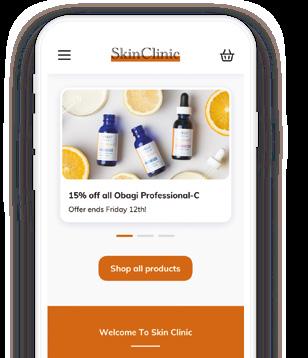
Skin
mesoestetic unveils range for sensitive skin
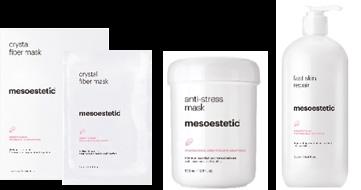
Pharmaceutical company mesoestetic has added the new sensitive skin solutions range to its portfolio. The range is designed to treat permanent and temporary skin sensitivity and restore the skin’s balance, with maximum skin tolerance. There are five products in the range including skin balance, a concentrate designed to reduce reactive skin signs such as reddening, itching and irritation. The couperend cream is a moisturising cream which aims to reduce the capillary fragility and redness of sensitive skin that is prone to rosacea. The fast skin repair is a soothing cream aimed to restore skin balance. The melan recovery is a balm with soothing and repairing effects. The anti-stress mask is an intensive mask that soothes and relieves skin with redness whilst the crystal fiber mask aims to improve the process of cell renewal, and moisturises the skin.
Vital Statistics
In a survey of 3,541 patients with vitiligo, 58.7% reported anxiety and depression because of the skin condition (VALIANT, 2022)
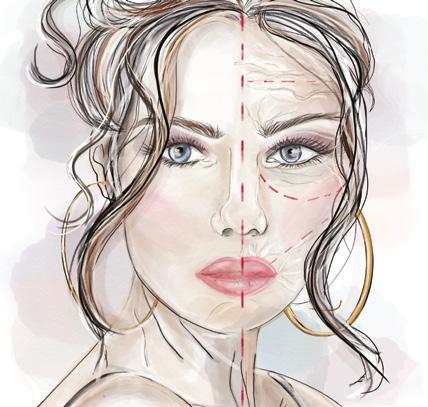
‘Hair transplant’ was the most sought-after cosmetic surgery in the UK in 2021, with 35,000 average monthly Google searches (Longevita, 2022)
98% of 1,124 US-based consumers read online reviews for local businesses (BrightLocal, 2022)
An estimated 1.4 million surgical and non-surgical procedures were performed in 2021, with plastic surgeons performing an average of 600 more procedures than in 2020 (AAFRPS, 2022)
In a survey of 10,000 people, 70% elected to call a clinic directly rather than send an enquiry to the clinic through the website’s online form (WhatClinic, 2021)
According to 35 million global Instagram posts, Saturday and Sunday at 6am were the best times to post (LaterBlog, 2021)
Digital
Patient
education
@aestheticsgroup @aestheticsjournaluk Aesthetics aestheticsjournal.com Reproduced from Aesthetics | Volume 9/Issue 5 - Apirl 2022
Events Diary
7th-8th May
Beauty Uncovered LIVE beautyuncovered.com
15th-16th September
The BACN Autumn Aesthetic Conference bacn.org.uk
13th-14th October CCR ccrlondon.com
9th September
IAPCAM iapcam.co.uk
Recruitment
Deputy editor position opens at Aesthetics

New training academy to open
Aesthetic practitioners
Dr Raul Cetto, Dr Lee Walker and Dr Jeremy Isaac are opening two new training sites located in Liverpool and London. The Aesthetic Medicine Pathways (AMP) aims to offer professional pathways tailored to the stages of a practitioner’s development. This includes an intensive mentorship programme over six months incorporating all injectable modalities and complications management, explains Dr Cetto. In both the Current Concepts Course and mentorship programme, delegates will have support in the form of webinars, forums and be a part of the research community. Dr Cetto said, “AMP is a collaboration between three experienced leaders in the aesthetic industry with a passion for evidence-based education. Dr Walker and I have lectured in more than 40 countries over the last few years and Dr Isaac is an experienced medical educator who trains across the UK. Our website will be live soon and we will be making announcements via our Instagram account, so keep an eye out.”
The new sites will be launching in May.
Development
Sinclair acquires Viora Group
Pharmaceutical company Sinclair Pharma has acquired the group of companies which form the Viora Group. Viora provides non-invasive products including laser, IPL and radiofrequency technologies. The company has solutions which are suitable for aesthetic practitioners, dermatologists, cosmetic and plastic surgeons, general practitioners and dentists. The company has direct commercial operations in the US and manages a global distribution network of more than 60 countries. Viora’s brands include V-series technology platforms Reaction, Infusion and Pristine.
An exciting deputy editor position is currently open to join the Aesthetics portfolio. The role involves producing the monthly Aesthetics journal and quarterly Beauty Uncovered magazine for patients as well as being involved in the content for the Aesthetics Awards, Beauty Uncovered LIVE, ACE and CCR conferences. Editor and content manager Shannon Kilgariff said, “I am so excited to be recruiting for a new deputy editor to join the Aesthetics portfolio. Having been a deputy editor myself for two years, it is a fantastic role to be in as it involves working with an amazing community and team, as well as learning so much about the aesthetics specialty, attending events and producing two publications. If you know anyone who might be suitable for this role, then please get them to head to the Easyfairs website and apply online.”
Chris Spooner, CEO of Sinclair, commented, “I am excited to announce the Viora acquisition. We believe that we can expand Viora’s operations by leveraging Sinclair’s global marketing and geographical presence through our direct commercial affiliates in China, Korea, Russia, UAE, Europe and Latin America. Furthermore, Viora’s presence in the US provides an excellent platform to launch our energy-based device division’s products under the cocoon brands.”
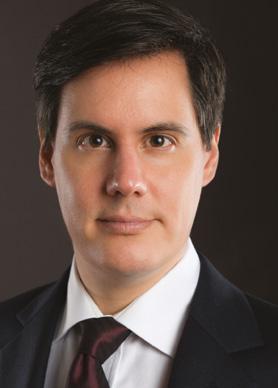
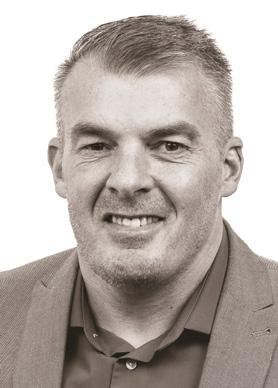
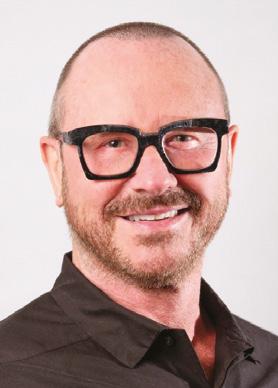 Skincare
Skincare
PCA Skin unveils new lip treatment
Cosmeceutical brand PCA Skin has launched its new overnight lip mask. The company explains that the leave-on treatment aims to hydrate and condition dry, chapped lips whilst helping to retain moisture overnight. Ingredients include shea butter to help soften and maintain moisture on the skin; vitamin E to protect the skin from free radical damage; squalane to retain essential moisture to improve hydration and medicago sativa extract to help overnight repair and protection. In an in vitro study conducted by PCA Skin, 50mg of Overnight Lip Mask was applied to porcine skin and exposed to ozone pollution for 40 minutes. The results indicated that the mask reduces skin damage from ozone oxidation by more than 45%.
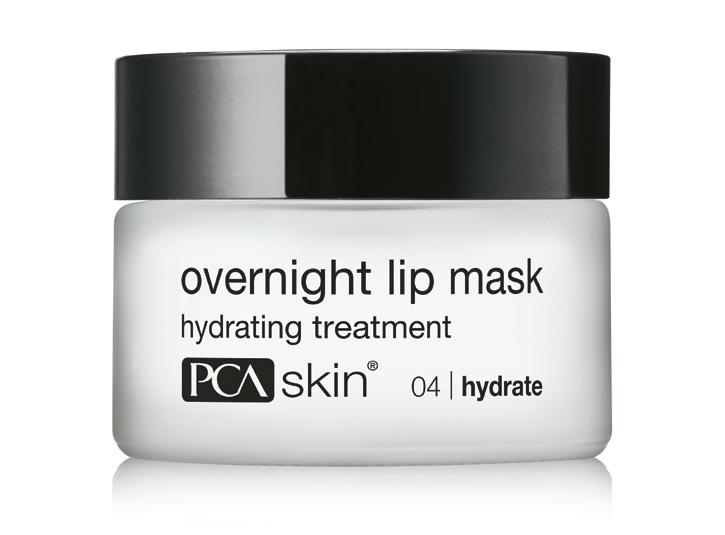
Education
@aestheticsgroup @aestheticsjournaluk Aesthetics aestheticsjournal.com Reproduced from Aesthetics | Volume 9/Issue 5 - Apirl 2022
Practitioners reunite at ACE 2022
The Aesthetics Conference & Exhibition (ACE) took place on March 11-12 at the Business Design Centre with more than 2,400+ delegates in attendance. The venue was buzzing with excitement, as delegates networked, learnt and discovered the latest products and innovations in the field of aesthetic medicine.

Event manager Courtney Baldwin said, “ACE 2022 was a huge success! With Headline Sponsor Teoxane providing world-class education and speakers, and the event featuring so many reputable brands and products, it was packed out with delegates. We are so happy to bring the specialty together once again and look forward to seeing everyone again next year.” You can read the ACE highlights on p.18 and find out the 2023 dates for your diary. Advisor
Aesthetics announces new Clinical Advisory Board member
Consultant, plastic and reconstructive surgeon Mr Naveen Cavale has joined the Clinical Advisory Board (CAB) for the Aesthetics and CCR portfolio.
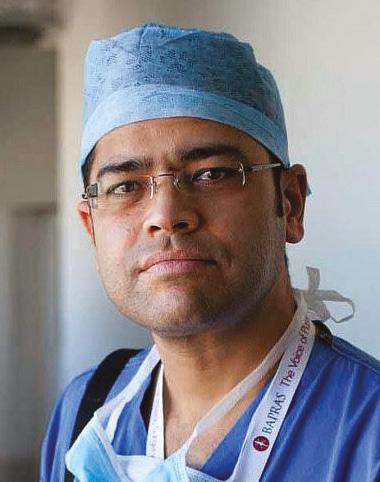
The CAB comprises of members of various professions within the aesthetics specialty, who share their expertise and experiences to ensure the latest clinical updates and standards are passed onto readers and event attendees.
Mr Cavale is the UK national secretary for the International Society of Aesthetic Plastic Surgeons (ISAPS) and is a full member of the British Association of Aesthetic Plastic Surgeons (BAAPS) and the British Association of Plastic, Reconstructive and Aesthetic Surgeons (BAPRAS). Mr Navale is vice-chair for the British Foundation for International Reconstructive Surgery and Training (BFIRST) charity which was the chosen charity at the Aesthetics Awards. He has a plastic and reconstructive practice in King’s College Hospital as well as practising at the Cadogan Clinic in Harley Street. Mr Cavale has recently opened Real Clinic in Battersea where non-surgical and surgical procedures take place. Mr Cavale commented, “I am so pleased to join the Aesthetics Clinical Advisory Board and portfolio. I have worked with the Aesthetics team for a long time and am excited to progress the brand further and to enhance education within the aesthetics specialty. The Aesthetics Awards, CCR, the Aesthetics Conference & Exhibition (ACE) and the brand new Beauty Uncovered LIVE events have all been organised and executed so well and I hope to continue this success with my own surgical input.” Editor and content manager of Aesthetics, Shannon Kilgariff said, “I’m so excited to welcome Mr Cavale to the CAB and I can’t wait to hear his thoughts and ideas on how to progress the Aesthetics portfolio further. I have worked with Mr Cavale for a number of years, and he has taught me so much about the industry, particularly in plastic surgery. I look forward to working with Mr Cavale more closely and progressing the portfolio in 2022.”
BACN UPDATES
A round-up of the latest news and events from the British Association of Cosmetic Nurses
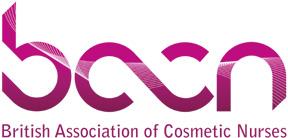
ACE
We had a fantastic time exhibiting at ACE 2022 and want to thank everyone who came by the stand and said hello to the BACN team! It’s always so lovely to see some familiar faces, as well as welcoming new members to the association and talking about all our exciting upcoming events.
SPRING SYMPOSIUM
Our next big event is now only weeks away, with our first-annual Spring Symposium taking place on April 29. The event will be hosted at the prestigious Royal College of Physicians in London, and after an incredible day of speakers, the day ends with evening drinks and canapés held in the Royal College gardens.
New speakers for the event have been announced, including the renowned Dr Tapan Patel and Dr Tristan Mehta, as well as a panel discussion on botulinum toxin from BACN members who have completed their Master’s degrees in Aesthetic Medicine. The full agenda is on the BACN website now, including timings and talk descriptions!
Tickets are selling quickly, but as a special thank you to the Aesthetics journal and ACE 2022, we have an exclusive discount code for those of you who haven’t made an order yet! You can get £55 off your order using the exclusive code JOURNAL55
THE AESTHETICS AWARDS
The BACN team want to say thank you to all our amazing members that took the time to vote for our Code of Professional Conduct at this year’s Aesthetics Awards. Winning The Beauty Uncovered Award for Professional Initiative of the Year is an absolute honour. The BACN Code of Professional Conduct is an overarching document underpinning many of the key principles of medical aesthetic practice. The extensive update was published in June 2021 and was made possible by the hard work of its project leader Anna Baker, BACN Chair Sharon Bennett and several experienced BACN members. Finally, a HUGE congratulations to all the amazing BACN nurses that were part of this year’s Awards – Susan Young, Julie Scott, Áine Larkin and Emma Heaney – we are so very proud! Thank you to the Aesthetics journal for putting on a fantastic event.
This column is written and supported by the BACN
Conference
@aestheticsgroup @aestheticsjournaluk Aesthetics aestheticsjournal.com Reproduced from Aesthetics | Volume 9/Issue 5 - Apirl 2022
Aesthetics Awards raises record amount for charity
Training Acquisition Aesthetics introduces new scheme
Training company Acquisition Aesthetics has launched an Ambassador Scheme for aspiring practitioners. The scheme offers
opportunity
The Aesthetics Awards winners were announced on March 12 at the Royal Lancaster Hotel in London and more than 800 attendees donated a record £9,000 for the British Foundation for International Reconstructive Surgery and Training (BFIRST) charity.

Mr Naveen Cavale, vice-chair at BFIRST and Mr Anthony Barabás, a trustee at BFIRST, said, “BFIRST is an excellent charity that trains surgeons across the developing world to effectively manage devastating injuries. Throughout the evening, we managed to raise more than £9,000! Thank you to everyone who donated, especially to our top donators Healthxchange, Clinisept+ Skin and owners of Skinade Piers Raper and his wife Helen Porter for contributing and supporting this fantastic charity.” A huge congratulations to all our winners from the evening as well as those who received Highly Commended and Commended achievements. You can find out who our winners were on p.42 and read what the winners had to say about the evening. Entry for the 2023 Aesthetics Awards will open in July.
Skincare
AlumierMD unveils new skin kits
Skincare brand AlumierMD has launched two new kits designed to help patients enhance aesthetic results.
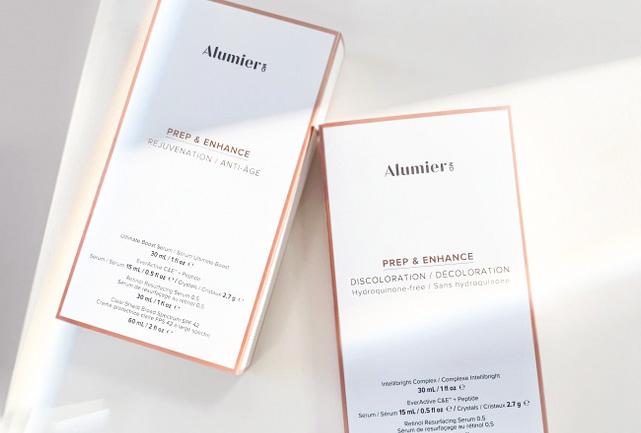
According to the company, the Prep & Enhance Kit has been created to achieve long-lasting results for aesthetic treatments, by helping the skin get into the best condition pre-treatment. Both kits includes the EverActive C&E + Peptide, a serum to reduce the appearance of fine lines and wrinkles whilst strengthening the skin; Retinol Resurfacing Serum 0.5% to help ageing concerns, whilst soothing and hydrating the skin; and the Clear Shield Broad Spectrum Sunscreen SPF 42 which helps the signs of ageing and inflammatory effects of the sun. The Discolouration collection has the addition of the Intellibright Complex, a lightweight serum to improve the appearance of discolouration in all skin tones, whilst the Rejuvenation collection contains the Ultimate Boost Serum which aims to hydrate the skin.
healthcare professionals to gain an insight into the industry prior to commencing postgraduate studies in aesthetic medicine, explains the founders of Acquisition Aesthetics Miss Priyanka Chadha and Miss Lara Watson, who won the Clinisept+ Skin Award for Independent Training Provider at the Aesthetics Awards. Successful candidates will have unrestricted access to the mentorship programme which includes direct support from Miss Chadha and Miss Watson. Additional benefits include opportunities to feature in publications, exclusive course discounts and access to key learning materials, explains Miss Chadha and Miss Watson.
Miss Watson commented, “The Acquisition Aesthetics Ambassador Scheme is a novel initiative that offers new and aspiring practitioners’ access to unrivalled mentorship, exclusive training discounts, opportunities for publication and online exposure and invitations to the biggest events in the aesthetics calendar year. Final year medical and dental students are welcome to apply through the Acquisition Aesthetics website now.”
Recruitment
Croma-Pharma appoints new sales business manager
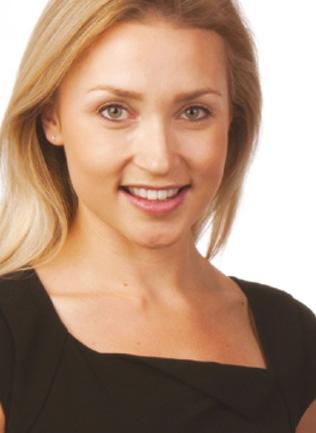

Aesthetic manufacturer CromaPharma has appointed Katy Phillips as sales business manager. Phillips will provide support and grow business in North London and the Home Counties whilst working closely with the UK head office on upcoming launches. Phillips has worked within the aesthetics and beauty industry for 16 years and her career spans from working in clinics and beauty salons to offer treatments through to product launches, in-clinic business development, training and events management. Phillips said, “I’m extremely passionate about helping others to succeed. I’m very excited to be joining the Croma team and working on the new launches planned for the forthcoming months, as they have a large and varied portfolio of products.”

Achievement
an
for
@aestheticsgroup @aestheticsjournaluk Aesthetics aestheticsjournal.com Reproduced from Aesthetics | Volume 9/Issue 5 - Apirl 2022
GetHarley unveils new brand progression
Skincare platform GetHarley has launched a new look and consultation categories. According to the company, changes in colour, fonts and language will be made. The new logo will have an emphasis on ‘Harley’ as well as mixed typefaces in the logo and treatments. The new globe symbolises the connections and service available around the world and the brand colours have some green and mustard to bring more gender neutrality, explains GetHarley. In addition to the new look, customers will have a new choice of consultation, packaged to help communicate their needs. These include skin health and preventative ageing, pregnancy and nursing, medical dermatology and bridal. Charmaine Chow, founder and CEO of GetHarley who recently won Best Clinic Support Partner/Product of the Year at the Aesthetics Awards, said, “GetHarley 2.0 moves in a way that feels even more premium and elegant whilst keeping a lot of our existing brand essence, that is true to us, yet refined ever so slightly; think of it as a tweakment not a facelift. With a growing base of practitioners coming from all sorts of pedigree and specialism, we are proud to be launching more consultation ‘types’ on our platform, enabling us to take personalisation for consumers to the next level.” Device
Cynosure introduces new PicoSure Pro system
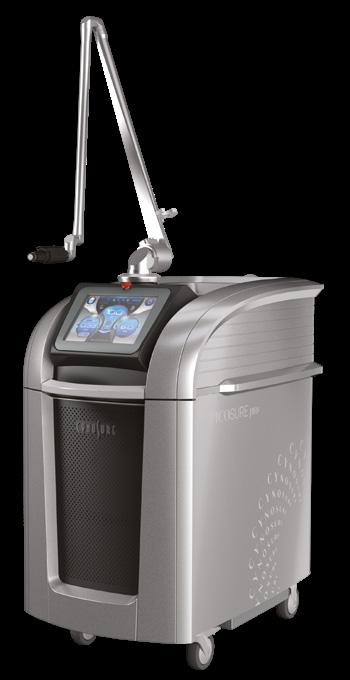
Aesthetic device manufacturer Cynosure has announced the forthcoming launch of the PicoSure Pro system. According to the company, the device has a platinum focus lens array which is used to increase collagen and elastin to help combat wrinkles, acne scars and pores. The PicoSure Pro has now been FDA-cleared for the treatment of melasma and other hyperpigmentation issues such as Nevus of Ota and Hori’s nevus. The launch will take place at the Aesthetic & Anti-Aging Medicine World Congress (AMWC) in Monaco. The company will be hosting a stand-alone launch symposium, led by dermatologist Dr Christine Dierickx who will present on the latest upgrade to the PicoSure system.
Cosmetic laser surgeon Dr Dianne Quibell will present the PicoSure Pro and detail her clinical experience using PicoSure technology, alongside other energy devices in the Cynosure portfolio, including Potenza.
Todd Tillemans, chief executive officer at Cynosure, said, “As inventors of picosecond aesthetic laser technology, we are constantly challenging ourselves to continually drive innovation forward. From a 50% increase in energy to new handpieces and an adjustable fluence, the performance enhancements made to the PicoSure Pro device provide practitioners with more versatility than ever before, allowing them to efficiently treat more patients per day and provide better outcomes in less time.”
Educate Patients on Safe and Regulated Practice
Calling all medical practitioners! Do you wish your patients understood the importance of safe and regulated aesthetic clinics, treatments and practitioners? Beauty Uncovered LIVE is here to answer your prayers.

Taking place on 7 & 8 May 2022 at the Business Design Centre, Beauty Uncovered LIVE is a two-day event combining the biggest names, practitioners and brands in the industry, with exciting live demonstrations and insights into exciting new products and treatments. All with the knowledge and reputability of the Aesthetics Conference & Exhibition, CCR, the Aesthetics journal and Beauty Uncovered magazine. It is a no brainer for patients, who will leave feeling empowered and informed. They will know exactly how to choose the right treatment, confidently make safe choices and more importantly, how to choose the right practitioner.
By working with qualified medical professionals, sharing honest and realistic before and afters, and covering a range of treatments and aesthetic solutions, we want to give patients the whole story. As our recent cover star Hanna Kinsella said, ‘I think we owe it to each other to actually say, yes I’ve had treatments, and this will help break the taboo’.

With three stages dedicated to live demos, myth busters, latest trends and asking the experts, there are tonnes of chances for patients to find out all they need to know. Sessions will uncover all things aesthetics and will give patients direct access to some of the UK’s respected practitioners. Attendees will be able to get both honest and opposing opinions from real-life patient case studies and live Q&As with top doctors, nurses, dentists and surgeons in the UK!
By the end of the day, attendees will feel full of knowledge and with a confident insight into safe aesthetic practice. For medical practitioners attending (a limited number of FREE VIP tickets are available for HCPs), it is a chance to discover what their patients are really interested in, trends they seek out and the questions they are asking. Invite your team and invite your patients!
If you would like to offer discounted tickets to your patients, please scan the QR code to receive your own discount code as well as a limited number of FREE VIP tickets for you and your team.
Development
@aestheticsgroup @aestheticsjournaluk Aesthetics aestheticsjournal.com Reproduced from Aesthetics | Volume 9/Issue 5 - Apirl 2022
SCAN HERE TO GET TICKETS FOR YOUR PATIENTS
New webinar launched by Nuchido
Supplement company Nuchido Laboratories has unveiled a new webinar on the future of antiageing. According to the company, the webinar describes how the future of antiageing will be driven by intracellular treatments alongside aesthetic procedures. The webinar is the third part of a CPD-accredited ‘The Future of Anti-Ageing’ series available to professionals in the aesthetics specialty. This session is chaired by founder of the Tweakments Guide Alice Hart-Davis and features presentations from key opinion leaders and aesthetic practitioners Dr Tapan Patel and Dr Steven Land.
In the webinar, the panel describe the academic research and evidence supporting significant advances in cellular antiageing treatments and how cellular ageing will progress with a focus on a molecule called NAD+. Dr Land explains why NAD+ is an important molecule in the body and how its decline with age is associated with many of the symptoms and signs of ageing. He also presents the research which describes the latest approach in improving the cell’s ability to make NAD+, a product called Nuchido TIME+.
Dr Land commented, “There is a lot of evidence out there that increasing intracellular NAD+ can slow ageing. It helps improve your patients from the inside, as well as from the outside, and it’s a very simple entry point into the future of antiageing medicine – something we can introduce very easily into our practice.”
3D Aesthetics unveils new device
Aesthetic device company 3D Aesthetics has launched a new radiofrequency microneedling device. According to the company the 3D Dermaforce aims to reduce fine lines and wrinkles whilst lifting the skin to promote collagen and elastin production. The device can be used to treat stretch marks, sun damaged skin as well as loose, sagging skin. Roy Cowley, CEO and founder of 3D Aesthetics, said “I’m delighted to launch the 3D Dermaforce treatment which offers powerful results for total skin rejuvenation. We are entering this exciting new market space, bringing down the cost of treatment to the consumer to make this in-demand treatment more inclusive for those clients looking to achieve a more youthful appearance.”

Training
AlumierMD partners with The Aesthetic Entrepreneurs
Skincare brand AlumierMD has collaborated with business growth company The Aesthetic Entrepreneurs.
The companies have created ‘The AlumierMD Growth Factor’, a free seven-part strategic business course. The programme is designed to enhance clinicians’ practice development strategies to impact their overall business growth. It has also been created to help practitioners build on existing strengths alongside a community of business owners, explains AlumierMD. The tailored programme combines online and face-to-face training, mentorship and on-demand videos. The programme will help create a business foundation, with tailored boosters for the clinic which aligns with the AlumierMD patient journey, adds AlumierMD.
Claire Hill, AlumierMD national sales manager, commented, “With AlumierMD, you will not find a brand that has more passion for protecting and growing our sector. That’s why we are delighted to further our partnership with Aesthetic Entrepreneurs. With a focus on strategy, our new joint programme provides our valued medical partners exceptional training in business acumen and entrepreneurial thinking to compliment the AlumierMD patient journey.”
JTMS
Aesthetic training provider Interface Aesthetics has celebrated its one-year anniversary of the Junior Trainee Mentorship Scheme (JTMS).
The scheme was created to help junior healthcare professionals gain training in aesthetics. Throughout its first year, the scheme has seen results among its mentees and is now beginning to expand, outlines director of Interface Aesthetics Mr James Olding. The training academy has recruited a team of national and international ambassadors extending across medical, dental and nursing schools throughout the UK, as well as in Spain and Brazil. The team was recruited by lead undergraduate member and dental student Miss Zeanab Chaer. The ambassadors include penultimate and final year medical, dental and nursing students and include 20 in total.
Mr Olding commented, “Celebrating our one-year anniversary is particularly special for our team, as the idea of the scheme of undergraduate mentorship and inclusion in our clinical field was something truly unique. From my perspective as director, it has been an amazing experience to work alongside the undergraduates. We are proud to already count three international presentations among our research successes involving our undergraduate mentees, with more in the pipeline for the coming months!”

Virtual
Business
Microneedling
The
celebrates one-year anniversary
@aestheticsgroup @aestheticsjournaluk Aesthetics aestheticsjournal.com Reproduced from Aesthetics | Volume 9/Issue 5 - Apirl 2022
5 Squirrels to trial four-day working week
Private label cosmeceutical supplier 5 Squirrels has been selected to join the four-day week pilot programme in the UK. The pilot, which begins in June, is being run by 4 Day Week Global in partnership with think tank Autonomy, the 4 Day Week UK Campaign, and researchers at Cambridge University, Boston College and Oxford University. The programme has been designed to measure whether employees can operate at 100% productivity working for 20% less time with no reduction in pay. The programme is a coordinated six-month trial which runs parallel to similar pilot schemes in the US, Canada, Australia and New Zealand. According to the company, the pilot includes training, mentoring and networking with international organisations who have successfully implemented a four-day week. The 4 Day Week Global researchers will work with 5 Squirrels to establish relevant productivity metrics for their business and define what success looks like for the company. Gary Conroy, CEO of 5 Squirrels, said, “We have been considering a productivity-focused, reduced-hour work model for some time. Giving our employees a healthy work-life balance has always been a key priority at 5 Squirrels, and this is the perfect way for us to do that. The world of work is changing and we want to place the emphasis on productivity, not hours worked!”
SkinPen Precision Global Education Conference, London

On March 19, medical aesthetic manufacturer Crown Aesthetics welcomed delegates to its first global education conference discussing its device SkinPen Precision.
The event took place at the Cavendish Conference Centre London, and opened with a morning of clinical education hosted by aesthetic practitioner Dr Beatriz Beltran, a key opinion leader from Spain, and Kat Coleman, SkinPen education manager. The duo talked through live demonstrations being carried using the device to treat different indications such as vitiligo. Following each case, the floor was open for attendees to ask any questions they had and provide advice to each other. Following lunch and some time for networking, the afternoon resumed with talks discussing business development. Reena Sandhu, head of marketing and operations UK and Ireland, discussed the Crown Aesthetics marketing assets; digital marketing strategist Rick O’Neill explained how to get the best out of social media; and aesthetician Nilam Holmes outlined how SkinPen Precision has contributed to her clinic’s growth.
On the event, Sandhu commented, “It was an overwhelming success and the feedback from customers has been amazing. Tickets were sold out and we had over 100 attendees at the venue, with over 400 virtual delegates tuning in. Clinical education in the morning with live demos was amazing and the afternoon session of clinic business development was a great success. We had international medical doctors fly in from Europe and industry leading clinics in the audience. The next SkinPen Symposium is scheduled for Saturday October 1 at the Cavendish Conference Centre.”
News in Brief
BioPhotas welcomes new team member

BioPhotas Inc, manufacturers of the Celluma Series of light therapy devices, has welcomed Don Sherratt as its new vice president of regulatory affairs and quality assurance. Before joining the executive team at BioPhotas, Sherratt was vice president of quality for Endologix and prior to that he was head of operational compliance for Philips N.V patient monitoring, ventilators and defibrillation.
Endolift Academy launches MediOracle UK, distributor for aesthetic device Endolift, has launched the Endolift Academy. The training platform is aimed at medical professionals who want to learn how to become experienced in the Endolift procedure. Attendees will learn how to identify and treat the causes of skin laxity, understand post-treatment care guidelines and how to take all the necessary steps to prevent complications during the procedures. The Endolift Academy training programme is CPD approved, and a certification is awarded to all practitioners who successfully complete it.
Dr Harry Singh releases complications guide Aesthetic practitioner and dentist Dr Harry Singh has launched a new complications folder resource. The folder named ‘The Ultimate Guide to Managing Complications in Facial Aesthetics’ includes a step-by-step plan to confidently address emergencies when using toxin and dermal fillers. The guide contains 70 pages of action plans outlining possible complications that may occur, and has information of what steps to follow to both minimise the complication and/or manage it.
Increased patient appointments recorded in 2021 Clinic management system Aesthetic Nurse Software (ANS) who received Commended at the Aesthetics Awards for Best Clinic Support Partner/Product of the Year has seen an increase in patient appointments during 2021. The data showed that there were 345,690 new appointments recorded by ANS for UK aesthetic clinics, with a total of £600,623 deposits taken online from 128,646 new patients. The company explains that the system also sent out 389,210 secure forms for patients to fill out pre-treatment. Jo Hayward, founder of ANS, said, “Saving time and taking away the repetitive admin tasks which practitioners spend time catching up on allows them to focus on marketing or other ways to grow their patient base.”
On the Scene
Wellness
@aestheticsgroup @aestheticsjournaluk Aesthetics aestheticsjournal.com Reproduced from Aesthetics | Volume 9/Issue 5 - Apirl 2022



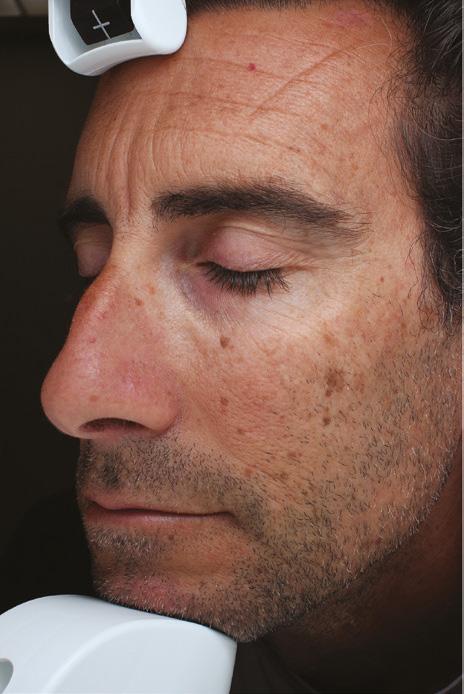
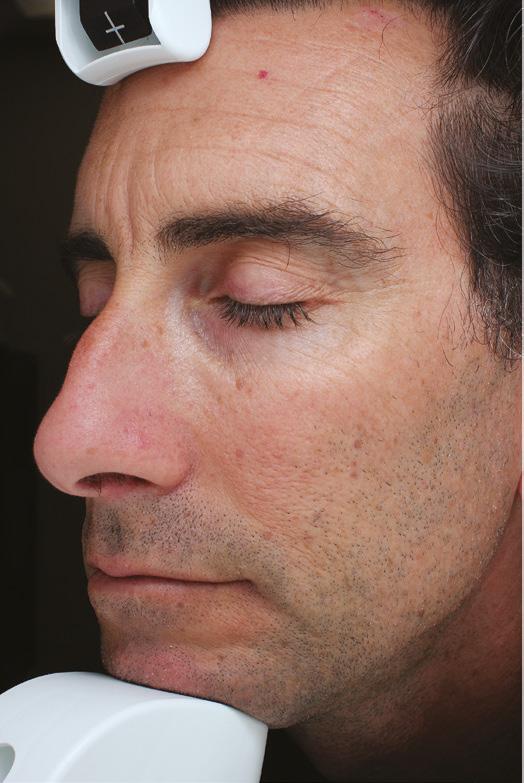

SIMPLY RADI ANT SKIN FROM HEAD TO TOE Phone: 020 2218 1108 Email: uksales@sciton.com ©2021 Sciton, Inc. All rights reserved. dable quality and • BBL® HERO™ with 4x the speed, 3x the peak power, and 2x the cooling will forever change how you treat skin from head to toe • MOXI™, a 1927nm fractionated thulium laser, opens the door to a younger prejuvenation patient • Versatile and synergistic treatments • Single targeted treatments to regular skin care regimens • Affordable and expandable; choose both or one, add second modality in the future ® MOXI | courtesy of Steven Swengel, MD MOXI + BBL | courtesy of Steven Swengel, MD LEARN MORE HERE! D E S IGN & BUIL D IN US A Transform your practice and your patients with the latest innovation by Sciton. Learn More www.sciton.co.uk
Expanding its portfolio
In 2011, Laboratories VIVACY launched Desirial intimate HA injectable gels for aesthetic and functional gynaecology for women. The product is CE marked and aims to restore hydration, elasticity, tonicity and sensitivity to the vulvo-vaginal area. Furthermore, the additional Bi-Soft injection technology was developed in 2018 for greater precision, comfort and control whilst using the syringe for its injectable products. The syringe is made of polycarbonate which has been designed into four colours to differentiate the Stylage products. Now, the French based manufacturers are making its debut in the competitive world of dermocosmetics with VIVACY Beauty and Monsieur Skincare, conveying to a new degree their vision of personal, authentic beauty.
In 2021, the company developed an innovative campaign showcasing the individuals who work wholeheartedly to make the brand successful and embody

A trip to the factory
VIVACY UK, which was established in 2019, recently invited 10 aesthetic practitioners Aesthetics journal, to see the site and learn more about the manufacturing process.
Camille Nadal, country director of VIVACY UK, said, “We are delighted to resume trips to our VIVACY factory, where it all starts. Safety is our top priority at VIVACY, and I believe this also entails quality. So, showcasing the high-quality and the optimal conditions in which our fillers are produced in France, is part of our transparency and safety strategy. Also, we believe that the opportunity to exchange with our scientific and production team allows practitioners to have a clear and interactive understanding of the composition of each of our products, and it supports them in choosing the most suitable product of the range when they are in-clinic with their patients.”
Whilst visiting the manufacturing facilities on March 18, the delegation attended an exclusive workshop animated by Mr Hervé Raspaldo, specialist in facial plastic surgery and international key opinion leader for VIVACY.
Dr Priyasma Gauchan from Dr Essex Ltd and one of the practitioners who visited the factory, said, “This trip has given me so much more in-depth knowledge and even more confidence to use the VIVACY products in my clinical practice.”
The Monumental Return of ACE
Following the long-awaited Aesthetics Conference and Exhibition, Aesthetics reflects on the biggest two days of the year in the specialty
The Aesthetics Conference and Exhibition (ACE) finally returned on March 11-12 at the Business Design Centre in London. With more than 2,400+ attendees, 95 exhibitors and 60 speakers, ACE was buzzing with excitement.


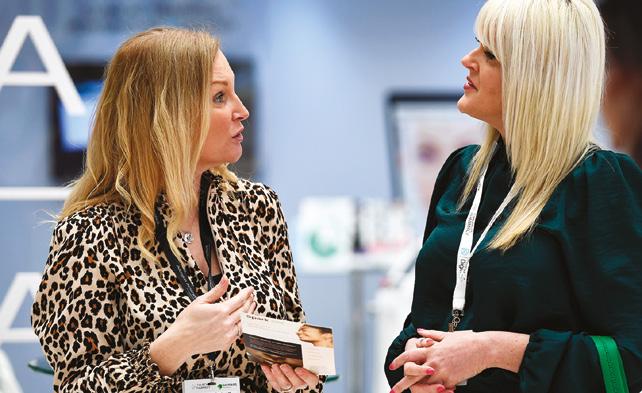

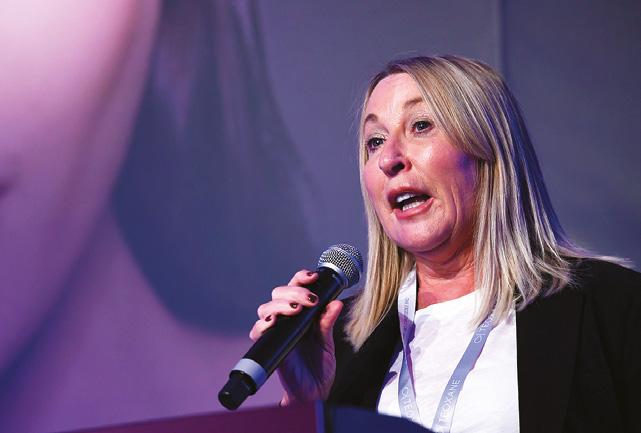
Headline Sponsor Teoxane produced a stand-out line-up of expert KOLs as well as injectable demonstrations for delegates to watch and discover new techniques. The three other clinical agendas, the Symposiums, Expert Clinic and Masterclass agendas, saw insightful product launches, expert advice and treatment tips from some of the industry’s top practitioners. The new In Practice theatre, sponsored by Enhance Insurance, covered all the business tips and tricks for delegates to take away and implement into their own clinics and businesses. The exclusive VIP lounge sponsored by HA-Derma gave delegates free hair and makeup appointments to get ready for the Aesthetics Awards, which took place on the evening of March 12. Find out who the winners were on p.42
Following a fantastic two days, event manager Courtney Baldwin said, “ACE 2022 returned with a bang! Being reunited with the aesthetics specialty and seeing the amazing exhibitors, sponsors, speakers and delegates all interacting and networking is truly a highlight of the two days. I can’t wait to see you at our next aesthetics event aimed at patients – Beauty Uncovered LIVE – on May 7-8.”
Takeovers with Teoxane
As Headline Sponsor, Teoxane took over the main auditorium with their global KOLs speaking to a packed-out audience. The first day saw aesthetic practitioners Dr Raul Cetto, Dr Lee Walker and consultant oculoplastic surgeon Miss Sabrina Shah-Desai discuss the anatomy and treatment indications, anatomical mapping and the lower third of the face. Injectable demonstrations were carried out on the temple and lateral brow, mid-face and lower face. On the second day, cosmetic surgeon Mr Benji Dhillon and aesthetic practitioners Dr Kam

Lally, Dr Wassim Taktouk and Dr Walker looked into the mid third and lower third with demonstrations on the cheek and lower face.
Dr Lally commented, “ACE was amazing and great fun! It was an enriching educational experience and there was a fantastic buzz about the place. It was lovely to see lots of practitioners attend, interacting and networking with colleagues, and there was a real excitement to be back out at events.”
Memorable masterclasses
The masterclasses offered exciting talks on a range of topics from chemical peels and microneedling to platelet-rich plasma and perioral rejuvenation.
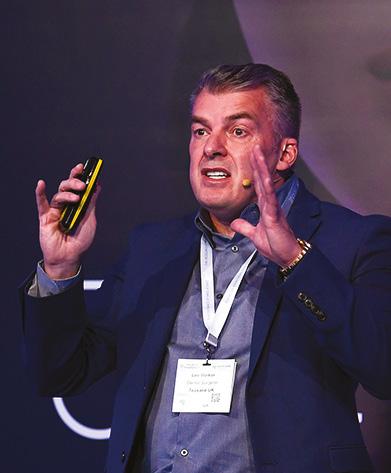
Sessions included nurse prescriber Susan Young discussing peel solutions for psoriasis and sensitive skin types sponsored by Church Pharmacy. Aesthetic practitioner Dr Jonquille Chantrey outlined maximising skin health through an multi-modality approach with SkinCeuticals and Dr Tracy Mountford discussed skin assessment and consultation using Profhilo with HA-Derma whilst Dr Aimee Vyas discussed topical hyaluronic acid with Croma. The second day saw Dr Rashpal Singh speak on restoring and creating volume in the lower face with Juvéderm VOLUX sponsored by Allergan and a panel discussion with case studies

@aestheticsgroup @aestheticsjournaluk Aesthetics aestheticsjournal.com Reproduced from Aesthetics | Volume 9/Issue 5 - Apirl 2022
with Dr Tapan Patel, Miss Sherina Balaratnam and nurse prescriber Rosey Drewitt-Staples.
Insightful symposiums
The two days saw fantastic educational content from major pharmaceutical companies, including Galderma, Merz and Prollenium. Dermal fillers and injectable treatments stole the show over both days. Canadian dermal filler company Prollenium showcased the Revanesse portfolio with a full-face masterclass featuring nurse prescriber Frances Turner Traill, Dr Jo Ward and consultant maxillofacial surgeon Mr Mark Devlin on the first day, while Merz BELOTERO Revive came under the spotlight with advanced injection techniques using ultrasound highlighted by consultant reconstructive surgeon Mr Dalvi Humzah, aesthetic practitioners Dr Simon and Emma Ravichandran and Dr Paula Mann on the second day. Mr Humzah said, “ACE was a great conference as it gave us the chance to meet with our colleagues, exchange ideas, see what is new in the industry and come together as a specialty and talk about aesthetics.”
An exciting, brand new dermal filler Restylane Eyelight by Galderma was introduced to delegates across both days. Aesthetic practitioner Mr Munir Somji and Dr Kuldeep Minocha undertook a live treatment whilst speaking on mastering the tear trough and how to bring brightness back to your patients’ under eyes.
was something for everyone! Kicking off with the ‘Beginner’s Guide’ chaired by Dr Yusra Al-Mukhtar, talks on launching a new clinic, training avenues and getting started in aesthetics were all discussed with Dr Tristan Mehta, Dr Joshua Van der Aa and nurse prescribers Alice Henshaw and Andrew Rankin. Other informative sessions included: ‘How to add Wellness Services to Your Clinic’ with psychologist Kimberley Cairns and Dr Mayoni Gooneratne, ‘Enhancing Your Profile’ with PR consultant Julia Kendrick, ‘Recruiting and Retaining a Team’ with business strategist Jean Johnston and ‘How to Launch Ultrasound into your Clinic’ with dentist and aesthetic practitioner Dr MJ Rowland-Warmann.

Dr Van der Aa said, “ACE is a fantastic opportunity to bump into people and get reacquainted with others. You can really feel the community come back together. People should register for ACE as it’s a free conference and is up there with the paid conferences. You get exceptional speakers, big companies, and fantastic educational content.”
Exhilarating Expert Clinic talks
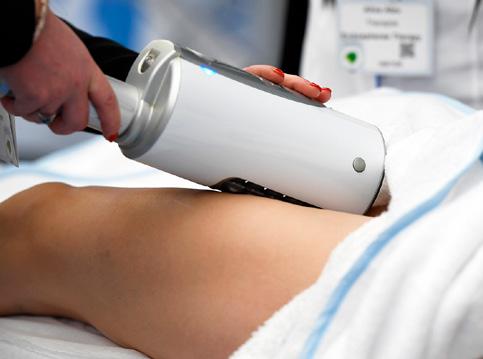
The Expert Clinic was extremely popular with delegates eager to enhance their knowledge of devices, peels and fillers. Companies included AesthetiCare, AestheticSource, AnteAge, BTL Aesthetics, Celluma, Cutera, Erchonia Lasers, HA-Derma, Lynton, Neauvia, Venus Concept and VIVACY who all had fantastic speakers and devices to present to delegates. A variety of topics were highlighted such as innovation in skincare practice, how to boost your hair restoration business with robotic devices, lower facial contouring with Stylage, and choosing the right IPL and laser device for your clinic. Some of the popular speakers included aesthetic practitioners Dr Sophie Shotter, Dr Natalie Geary, Dr Tatiana Lapa, nurse prescriber Anna Baker and consultant plastic surgeon Mr Ali Ghanem.
Business tips and tricks
As well as our incredible clinical sessions, the In Practice theatre sponsored by Enhance Insurance was jam-packed with delegates eager to learn about the latest business developments and tips to implement into their clinics. With talks to suit every practitioners’ experience in aesthetics, there
Experiencing the exhibition
Across the two days, ACE provided an insight into the new technologies, innovations, products and services that the aesthetics community has to offer. Companies showcased their latest devices, skincare, dermal fillers and other technologies to delegates who could test, try and purchase products. Delegates were given AestheticSource branded reusable bags to carry all their testers and purchases.
Networking opportunities
Throughout the two busy days, delegates could enjoy food and refreshments from the InDesk café for lunch in the gallery. Following a jam-packed first day, visitors headed to networking drinks sponsored by Endosphères Therapy where long-awaited catch ups and discussions of the day took place. The Prollenium stand got the party started with a DJ and cocktails, creating a buzzing atmosphere to finish off the first day at ACE.
See you next year!
That’s a wrap for ACE 2022! We look forward to welcoming back all exhibitors, speakers, companies, sponsors and delegates next year at the Business Design Centre on March 10-11. Don’t forget to attend the next unmissable events hosted by Easyfairs, Beauty Uncovered LIVE on May 7-8 and CCR on October 13-14 Subscribe to the weekly Aesthetics newsletter for all updates!
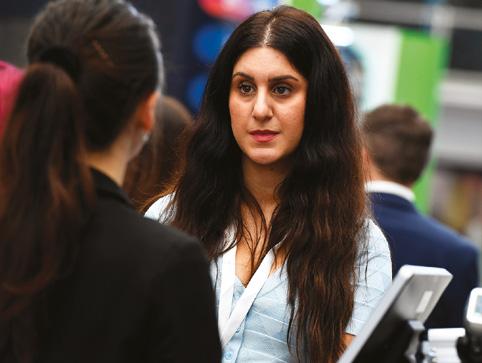

@aestheticsgroup @aestheticsjournaluk Aesthetics aestheticsjournal.com Reproduced from Aesthetics | Volume 9/Issue 5 - Apirl 2022
Beauty Uncovered LIVE Brings Safety to the Fore

Enhancing Knowledge | Building Trust | Promoting Positivity
Now that ACE is done and dusted, the Aesthetics team, and the industry as a whole, turns to Beauty Uncovered LIVE. A first for us and for our industry, bringing regulated and qualified medical practice to our patients, live and in the flesh at the UK’s first patient facing show!

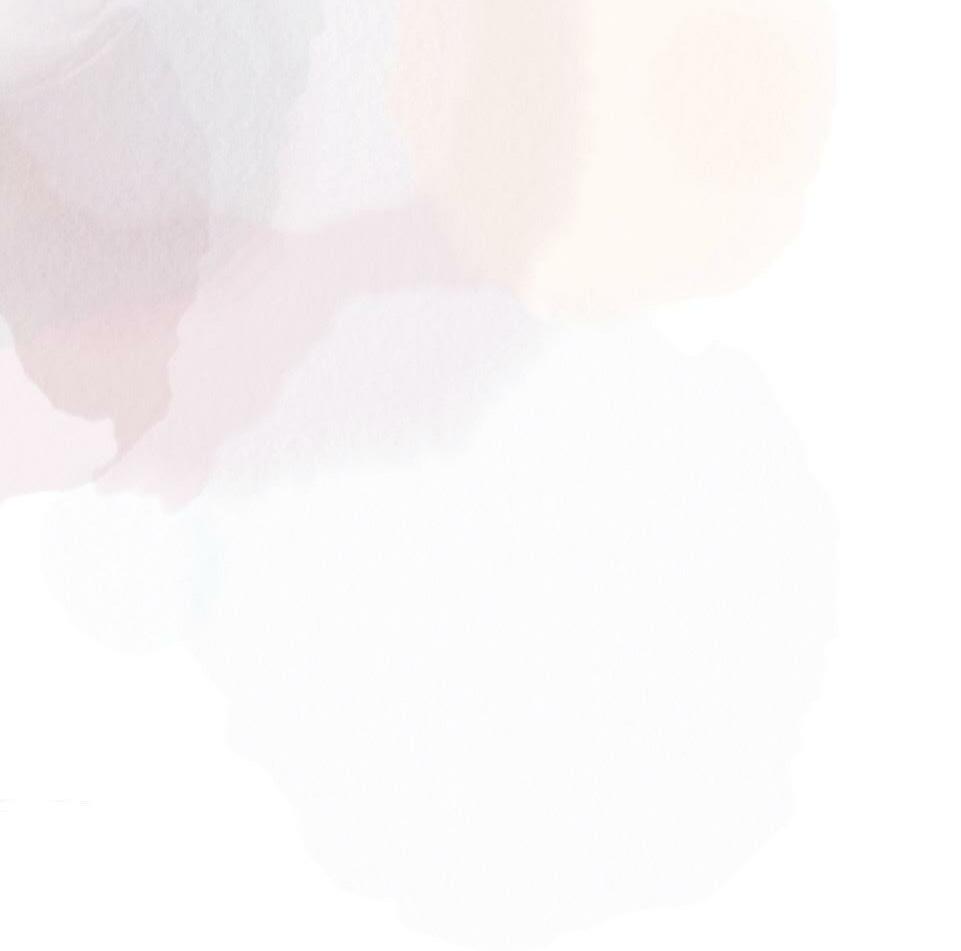

Taking place on 7 & 8 May 2022, London, Beauty Uncovered LIVE is a two-day event combining the biggest names, practitioners and brands in the industry, with exciting live demonstrations and insights into new products and treatments. All with the knowledge of reputability of the Aesthetics Conference & Exhibition, CCR, the Aesthetics journal, our trusted Aesthetics Clinical Advisory board and reputable industry associations such as the JCCP, BCAM and BACN. PLUS attendees will receive their very own exclusive goody bag worth over £150!
It is a no brainer for patients. For them, it’s like walking into a huge clinic and testing all the latest skincare, seeing live injectable demonstrations, getting a free HydraFacial treatment or feeling different types of breast implants. Patients will leave empowered, energised and full of knowledge. Understanding exactly how to choose the right treatment, confidently make safe choices and more importantly, how to choose the right practitioner.
Breaking the mould
We know as well as anyone that aesthetics gets a bad rep. From botched jobs to horror stories, the media loves it and it’s all you seem to hear and read about. At Beauty Uncovered LIVE, we are changing that.
By working with respected practitioners, sharing honest and realistic before and afters, and covering a range of treatments and aesthetic solutions, we want to give patients the whole story. As our recent Beauty Uncovered cover star Hanna Kinsella said, ‘I think we owe it to each other to actually say, yes I’ve had treatments, and this will help break the taboo’.
Knowledge is power, and in aesthetics, knowledge empowers patients and enables safe practice.

Aesthetics | April 2022 20 @aestheticsgroup @aestheticsjournaluk Aesthetics aestheticsjournal.com Event Spotlight Beauty Uncovered
“I am absolutely thrilled to be a part of this exciting new event. It’s such a positive leap forwards for the aesthetics industry to have an outlet for people to discover and learn about all the latest, greatest and safest cosmetic treatments available. Opening up the world of aesthetics allows people to research, ask questions and make educated decisions about treatments.”

Dr Nina Bal, E4’s Body Fixers, influencer and award-winning celebrity injector

Aesthetics brands we

can’t live
without
With jam-packed goody bags for every ticket-holder, samples given away on stands, live treatment demos and qualified medical professionals answering questions, Beauty Uncovered LIVE is a one-stop-shop for all things aesthetics in a truly fun and safe environment. And what aesthetics show would be complete without its incredible brands?
Not only do we have HydraFacial as the Headline Sponsor offering FREE facials onsite for VIPs, we also have a Skinade Bar with FREE collagen drinks, live demos from TEOXANE and Galderma, and exhibitors including PCA Skin, Church Pharmacy, Lynton Lasers and many more. Getting to know the brands behind the treatments and products builds a patient’s affiliation with them, encouraging the use of qualified and regulated aesthetic clinics and practitioners.
Attendees will be greeted by medical practitioners for honest and practical advice on treatments and procedures, to educate them to make informed and ethical choices. As well as the choice that is right for them and them alone.
What to expect
With three stages dedicated to live demos, mythbusters, latest trends and asking the experts, there are tonnes of chances for patients to find out all they need to know. Sessions will uncover all things aesthetics with beauty editors, influencers and celebs as well as giving patients direct access to some of the UK’s respected practitioners. Attendees will be able to get both honest and opposing opinions from real-life patient case studies and live Q&As with top doctors, nurses, dentists and surgeons in the UK!
Taking to the stage will be Dr Tapan Patel, Dr Munir Somji, Dr Jonquille Chantrey, Dr Vincent Wong, Dr Dev Patel and many more. Dr Nina Bal from E4’s Body Fixers, influencer and award-winning celebrity injector also joins our star-studded panel.
Leave feeling empowered

By the end of the day, attendees will feel full of knowledge and with a confident insight into safe aesthetic practice. For medical practitioners attending (a limited number of FREE VIP tickets are available for HCPs) it is a chance to discover what their patients are really interested in, trends they seek out and the questions they are asking.
If you would like to offer discounted tickets to your patients, please scan the QR code to receive your own discount code as well as a limited number of FREE VIP tickets for you and your team.
Tickets are on sale now and include a £150 goody bag, plus a free Skinade collagen supplement. Group bundle tickets are also available to save even more by getting the whole gang involved! Tickets can be booked at beautyuncovered.com
Full Price = £50 VIP package = £75 including free champagne and a goody bag worth £300. SCAN HERE TO GET TICKETS FOR YOUR PATIENTS
Design
Islington
opening times:
7 May: 10:00 – 19:00
May: 10:00 – 19:00 Aesthetics | April 2022 21 @aestheticsgroup @aestheticsjournaluk Aesthetics aestheticsjournal.com Event Spotlight Beauty Uncovered
Business
Centre,
Show
Saturday
Sunday 8


AESTHETICS EDUCATION POWERED BY ECADEMY 24/7 ACCESS TO WORLD OF EXPERT-LED AESTHETIC EDUCATION AT YOUR FINGERTIPS Search for Merz Aesthetics Ecademy today EXPLORE TODAY M-MA-UKI-1914 Date of Preparation February 2022. Developed and funded by Merz Aesthetics UK & Ireland. FOR HEALTHC ARE PROFESSIONALS ONLY SCAN ME AESTHETICS EDUCATION POWERED BY ECADEMY 24/7 ACCESS TO WORLD OF EXPERT-LED AESTHETIC EDUCATION AT YOUR FINGERTIPS Search for Merz Aesthetics Ecademy today EXPLORE TODAY M-MA-UKI-1914 Date of Preparation February 2022. Developed and funded by Merz Aesthetics UK & Ireland. FOR HEALTHC ARE PROFESSIONALS ONLY SCAN ME AESTHETICS EDUCATION POWERED BY ECADEMY 24/7 ACCESS TO WORLD OF EXPERT-LED AESTHETIC EDUCATION AT YOUR FINGERTIPS Search for Merz Aesthetics Ecademy today EXPLORE TODAY M-MA-UKI-1914 Date of Preparation February 2022. Developed and funded by Merz Aesthetics UK & Ireland. FOR HEALTHC ARE PROFESSIONALS ONLY SCAN ME
Adding Wellness Services to Your Clinic Offering

Wellness is defined as the act of practising healthy habits on a regular basis to attain better physical and mental health outcomes.1 According to research by the Global Wellness Institute, the wellness industry is valued at US $4.5 trillion and is continuing to grow at a historic rate,2 so it’s no surprise that it has recently become a bit of a buzzword in aesthetic medicine. Rather than just offering quick injectable treatments in one area, clinics and practitioners have started to move towards a more holistic approach of treating the whole body – and the mind!
This is because, according to aesthetic practitioner Dr Nestor Demosthenous, people are now beginning to understand the differences that small changes can make to overall health. He notes, “Many aesthetic clinics today go beyond aesthetics. With greater understanding and a lot more resources, we are aware that we are making positive differences to a patient’s quality of life. Often people think they are healthy merely due to absence of disease. They do not realise they can be better by making consistent, sustainable changes in lifestyle and habits, safeguarding themselves for the future. This isn’t usually what they come in with the intention of asking us about, but it is what we can now offer.”

Aesthetic practitioner Dr Mayoni Gooneratne agrees, noting that the recent COVID-19 pandemic has kicked off a wellness phenomenon. She says, “As a doctor my passion has always been to help people. Particularly after COVID-19 I think people started realising a lot more about their health and how one thing can really impact another, as well as how important it is to stay healthy. I found that this was something that kept getting spoken about in my consultations. In our role as medical professionals I find that people really open up to us about how they are feeling, and so wellness was something that was particularly brought to my attention.”
Aesthetic practitioner Dr Natalie Geary has also noticed how important wellness is for getting people back to normal following the pandemic. She notes, “We’re in a COVID-19 hangover right now – everyone is quite sluggish and a lot of people are struggling to return to normal life after gaining weight or having mental health problems. While wellness has been at the forefront of my mind for some time, I think this is the perfect moment to
get other people to think more about their health or their lifestyle. It’s the best time to embrace wellness, and proper long-term plans rather than quick fixes.”
So, if wellness is something you’ve become interested in and you feel like you’re ready to make that progression and start to integrate it into your practice, how do you make that first step?
Getting started
Dr Gooneratne notes that to get started on her clinic’s wellness journey she undertook extra learning and education. She comments, “I completed my functional medicine diploma, and I’m currently also doing my lifestyle medicine diploma. This is a branch of medicine growing in popularity across the world because of its highly successful results in tackling a range of health problems through the application of environmental, behavioural, medical and motivational principles. I believe there is so much to learn, and doing so has been able to give me a really good handle of how to see a person as a whole, and how one aspect of them may impact another.”
As part of her wellness services, Dr Gooneratne’s clinic now offers two separate programmes: Skin Fit and Human Health. She explains, “Skin Fit is purely aesthetic, where we see people for treatments addressing their physical appearance – this can be face or body. Instead, Human Health uses an evidence-based medical approach using lifestyle medicine.”
With a rise in wellness, practitioners advise how you can successfully integrate suitable services into your practice
“Wellness isn’t as profitable as general aesthetics, BUT you are more likely to have an incredibly loyal patient base”
@aestheticsgroup @aestheticsjournaluk Aesthetics aestheticsjournal.com Reproduced from Aesthetics | Volume 9/Issue 5 - Apirl 2022
Dr Mayoni Gooneratne
Dr Gooneratne explains that people will come to her clinic for a one-hour consultation and she will do a deep dive into their lifestyle and history. She comments, “I go right back to when they were born and that gives us a whole overview of them, which enables me to make a plan and sign them up to one of our packages. This incorporates many elements, such as seeing a functionalist specialist nurse or having group sessions with others. There are six pillars of human health: nutrition, sleep, movement, stress management, toxic substances, and relationships. So, we aim to address all of these throughout their time on the programme by working intensively with us. It will depend on each person of course, as not everyone needs the same thing.”
Dr Geary notes that her interest in wellness is innate, and that the inclusion in her practice was a gradual progression after also undertaking some educational courses. She comments, “I’ve had an interest in functional medicine for the past seven years, since I started taking courses in the US”. Although I wanted to bring it back to my clinic straight away, the testing was prohibitively expensive because most of it had to be sent back to America as we did not have those resources here in the UK at the time. I kept going to these courses anyway as I just found it so interesting and I enjoyed educating myself – I think it’s important to know we can be healthier by making certain uncomplicated changes, and taking these courses are so important in learning more about the wellness side of things before you put anything into action.”
The opportunity for her to set a programme up in her clinic only arose six months ago, once she had found the right devices and elements. Dr Geary has recently launched her weight loss programme named Dr Go Figure. This incorporates nutrition, exercise, supplements, in-house personal training and electrical muscle stimulating devices that help with fat loss and weight management.
Dr Demosthenous explains that he started out in wellness through a natural career progression. He comments, “Over the years I found that my consultations were getting longer and longer. I was naturally delving into a patient’s motives for treatment, their psychological core. We were discussing sleep patterns, nutrition and overall health, not just documenting their medical history. It became apparent that all of this matters, even when you are performing cosmetic and rejuvenation treatments, and it’s a large problem for some people. I find that one of the most common reasons for treatment is to look as energetic and youthful as people feel on the inside. Many strive to look and feel better. I therefore felt it was important to start incorporating lifestyle medicine into my clinic.”
Dr Demosthenous now offers both women’s health and men’s health services, which include skin health, hair health, intimate health and menopause health. He explains, “We are keen to help patients flourish, and this means actively discussing nutrition, sleep, managing stress, and exercise.”
Don’t do it alone
All three practitioners interviewed enlisted the help of external services in order to provide the best wellness options to their patients.
Dr Demosthenous explains, “I think it’s very important to bring in professionals with drive and ambition and a genuine passion for a subspecialty. While, as a doctor, I CAN carry out many procedures, it doesn’t necessarily mean that I SHOULD. I introduced a lifestyle medicine doctor into my clinic who is better qualified to offer meaningful advice to help improve patients’ health than myself. I have
also recently set up a wellness retreat incorporating exercise, yoga, mindfulness and education on good nutrition. Here, there are two lifestyle medicine doctors, a team of personal trainers, yogis and a wonderful plant-based chef.” He explains he found the right team as a result of his own personal journey into wellness, noting, “Lifestyle medicine and overall wellness is something both my team and myself have incorporated into our own lives. Through this we have identified great people and therefore built a network of like-minded individuals.”
Dr Gooneratne also uses external help, employing a weight management coach, a personal trainer, a life coach, an acupuncturist, a functional health specialist and a physiotherapist. When enlisting the services of others, Dr Gooneratne advises starting small and taking the time to research your local area. She says, “You could just begin by doing cross referrals – for example speaking to your local gym. Maybe for every patient you send their way they give you a small percentage of profit. Then, you can start growing this out further if it’s successful and you’re finding a lot of people are interested.”
She also advises that to begin a good partnership with someone, it’s important to ensure your brand is reflecting your ethos. “Be wary of what you’re posting online,” she says, “If you’re only posting images of big lips, then a nutritionist isn’t likely to want to work with you. They want people who align with their own values, just like we do! So take care with how you present yourself, and if health and wellness is something you’re truly passionate about then it needs to come across.”
Dr Geary has an online personal trainer and a nutritionist as part of her team, and notes that she makes use of her local community as well as using the aesthetics network to find the right people to partner with. She explains, “The thing about all aesthetic practitioners is that we have a great network, not only with each other but with who we treat – the diversity of our patients is huge. So the main thing is just to speak to people and find out who’s doing a good job and who people have had positive results with –if you want knowledge, you have to ask for it! Our patient base is our greatest resource to swap ideas, so I found everyone that I’ve hired through my own network.”
“The enthusiasm you have about wellness will spread to your patients – if you don’t believe in what you’re doing then neither will they”
@aestheticsgroup @aestheticsjournaluk Aesthetics aestheticsjournal.com Reproduced from Aesthetics | Volume 9/Issue 5 - Apirl 2022
Dr Nestor Demosthenous
Wellness services to consider adding to your clinic…
• Supplements
• Lifestyle coaching
• Fitness coaching
• Nutrition
• Energy-based devices
• GP referrals
The benefits
• Psychology referrals
• Hormone therapy
• Sleep management
• Smoking cessation
• Intimate health
• Weight management
Dr Gooneratne believes the best thing about offering wellness services is seeing the difference it makes to her patients’ lives. She explains, “I love it because we are helping people literally be the best they can be inside out, and it’s really rewarding. It’s about creating really bespoke journeys that can last for a year or so. Doing transformations and seeing people change their lives is just incredible.”
Dr Geary agrees, noting that seeing the impact she has on patient confidence is the most gratifying thing for her. “I’ve noticed that after COVID-19 a lot of my older female patients have really struggled to get back out there again and get their lives back on track. Our wellness services have helped them to get their energy levels back and help them feel like themselves again,” she says.
As well as being beneficial for your patients, Dr Demosthenous explains that wellness services can help build patient trust and create good relationships, therefore helping your business. He notes, “While measuring an end point is difficult, anecdotally, our patients seem happier, more content and more active. As well as this, we find that they are engaging regularly with services in the clinic, come back for more regular treatments and appointments, and also refer their friends and family in to see us. I think it helps them to feel like someone really cares about them, rather than just someone doing a treatment for money.”
Considerations
While you might be certain you want to add wellness services to your clinic offering, it isn’t just as simple as making the decision and getting started straight away, explains Dr Gooneratne. “For certain things you need to be registered with the Care Quality Commission, Healthcare Improvement Scotland, Care Inspectorate Wales or the Regulation and Quality Improvement Authority, for example doing blood tests,” she says. “You also need to get your team trained up to talk to medical patients in a way that is respectful – medical treatments are a lot more sensitive than a facial for example. You must ensure you actually have the capacity to deliver what you’re promising – I would never introduce services that I don’t think we can really carry out, so you should always wait to add different elements and make sure you have the right team and the right knowledge before doing so,” she adds.
Dr Gooneratne also advises to ensure there is actually a demand for services in your area before deciding to go ahead with implementing anything. She says, “Always market your area first – I would recommend that you start by asking your 10 best and most regular patients ‘if I could add a service for you, what would that be?’ If a lot of them have the same answer, it’s something for you to look into, but there’s no point adding something when there is no demand for it. If you do find there is a market for it then great, go and do the training!”
Dr Geary notes that practitioners also need to cut down on what they invest in and look at what would most benefit their patient base, rather than trying to have a bit of everything on the market. She explains, “For example, I’m still sorting out what supplements I want to use in my programme, and it’s been a long process because I actually think you only need a few. You need to research everything and find out what’s going to be the most appropriate universally – we’re creating programmes that need to be beneficial for as many people as possible. Ask yourself the question: ‘what are most people in need of when they age?’ and then go from there!”
Follow your passion
All practitioners interviewed note that while wellness services can be beneficial, clinics should only add them if they have a true interest in health and wellbeing. Dr Demosthenous explains, “It really has to be born out of true passion for living a better, healthier life. The enthusiasm you have will then spread to your patients – if you don’t believe in what you’re doing then neither will they.”
Dr Gooneratne adds that you need to consider what the most important thing for you is – are you the kind of person who isn’t bothered about a mass return of investment? She explains, “Typically, wellness isn’t as profitable as general aesthetics, BUT you are more likely to have an incredibly loyal patient base. Don’t do it because you think everyone else is doing it and because it’s the latest popular thing, or you’re worried about the competition. Do it because you’re truly passionate about helping people and making them feel better. It takes a lot of drive, and it takes a lot of energy away from everything else that you’re doing while you set it up, so you need to be absolutely sure it’s what you want to invest yourself in.”
Dr Geary concludes that before you add any extra services, you should work out what it is you enjoy doing the most. “People have different passions in aesthetics and that’s why our industry is so amazing,” she says, adding, “We have people who are great at body sculpting, we have people who are great at injectables, we have people who are great at wellness. Personally, I love optimising health and so it’s natural for me to run wellness programmes, but that doesn’t mean it’s right for everyone. The best piece of advice I can give people is just to do what you love.”
REFERENCES
1. Pfizer, What is Wellness, <https://www.pfizer.com/health-wellness/wellness/what-is-wellness>
2. Global Wellness Institute, Move to the Well, 2019, <https://globalwellnessinstitute.org/industryresearch/global-economy-physical-activity/>
@aestheticsgroup @aestheticsjournaluk Aesthetics aestheticsjournal.com Reproduced from Aesthetics | Volume 9/Issue 5 - Apirl 2022

Treating Depression Using Botulinum Toxin
Dr Emmaline Ashley explores the current literature surrounding the use of botulinum toxin in depression
The interplay between cosmetic medicine and psychology has a complex and long-debated history. There has always been a focus on both the dangers and potential benefits of cosmetic treatments on the psychological wellbeing of our patients. Recently, of particular interest is the growing body of evidence exploring the use of botulinum toxin (BoNT) in the management of depression.
Major depressive disorder (MDD) is one of the most common illnesses in the world and carries a large disease burden.1 The Diagnostic and Statistical Manual of Mental Disorders, fifth edition (DSM-5) sets out the diagnostic criteria for MDD, which includes persistent low mood, anhedonia, lack of energy, lapses in concentration, and sleep disturbance.2 The mainstay of management for MDD beyond psychotherapy is with antidepressant medication. However, this is complicated by poor medication adherence, side effects, and non-responsiveness in a third of patients, leading clinicians to explore adjunct therapies.3 Given that side effect burden is the leading cause of medication discontinuation in patients with MDD,4 finding an alternative treatment that provides symptom relief with a low side effect profile would be extremely beneficial.
The current evidence
Treatment of the glabellar region Interest in BoNT’s utility in depression was sparked in 2006 with the publication of the first case series detailing treatment of the glabellar region.5 Finzi et al. described 10 patients with diagnosed MDD.5 At the end of a two-month period, nine of the patients no longer met the criteria for depression, and the remaining patient reported a dramatic improvement in mood.5 While this case series was limited by lack of a control group, no blinding, and a small patient cohort, it inspired a spate of further research.
Following on from Finzi et al. several randomised control trials (RCTs)6-9 and an open-label study10 all supported the use of glabellar BoNT injections in the treatment of depression. The RCTs compared BoNT injections to placebo saline injections, and the primary endpoints measured a change in validated depression scoring scales.6-8,11 The first RCT conducted by Finzi et al. with 85 patients found that a single treatment of BoNT to the glabellar region induced a significant and sustained antidepressant effect in MDD patients.8 This was followed by a study involving 30 patients by Wollmer et al. who reported a statistically significant response rate in BoNT treated patients with treatment-resistant depression.6 The third RCT by Magid et al. provided a longer term follow-up over 24 weeks of 30 patients, and found that the clinical improvement in depression lasted longer than
the cosmetic effect of the BoNT treatment.7 Finally, Zamanian et al. confirmed the safety and extreme effectiveness in BoNT injections compared to the placebo in their RCT of 28 patients.9 However, Brin et al. detailed a follow-up Phase II trial with 258 participants that had mixed results, without showing a major difference between BoNT and a placebo.11 Despite this setback, the authors stated the results were preliminary and required further assessment due to a few limitations in their study design.11 Brin et al. state in the conclusion of their paper that there is currently a further Phase III clinical trial planned, but the details of when this will occur are not yet available.11
Another RCT published in 2021 by Zhang et al. with 76 patients used a positive control rather than a placebo control, comparing BoNT treatment to the antidepressant sertraline.12 The sites injected included the glabellar area, the lateral canthus, and the frontalis muscle.12 Zhang et al. found that BoNT was equally as good at improving depressive symptoms by using a number of validated depression scales.12 BoNT, however, had the distinct advantage of having a lower side effect profile.12
In order to gain a more definitive understanding of the accumulated data, several systematic reviews and meta-analyses have compiled the results from the research conducted thus far.13-16 The most recent, Qian et al. looked at five RCTs and data from 417 patients.14 The authors used Hedges’ g and 95% confidence interval to analyse the reported data, and the pooled analysis showed that there was a statistically significant improvement in depressive symptoms.14 They also determined that BoNT treatment had an advantage over the current standard of care in MDD with only mild and temporary side effects.14
Treatment of other areas
A study published in Nature in 2020 by Makunts et al. examined 40,000 botulinum toxin treatments covering a range of indications, including hyperhidrosis, wrinkles, migraines, and spasticity.17 They confirmed in 20,684 BoNT cases treated with cosmetic facial injections that there was a preventative effect against depression.17 However, the researchers also found that patients undergoing treatment with BoNT, regardless of the indication, had a significantly lower number of depression reports when compared to patients undergoing other treatment modalities for the same diseases.17 This was consistent with previous reports of improvement in depression after treatment of hyperhidrosis, torticollis, migraine, and spasm with BoNT.18-22 These results are extremely interesting, as they suggest that the antidepressant effect of botulinum toxin is not related to any cosmetic effect and works regardless of the injection site.
@aestheticsgroup @aestheticsjournaluk Aesthetics aestheticsjournal.com Reproduced from Aesthetics | Volume 9/Issue 5 - Apirl 2022
Mechanisms of action
Self-perception and social feedback
The most simple explanation for BoNT’s efficacy in depression is that frowning affects the way that people feel about themselves and the way that others respond to them.8 This is the idea that when patients feel better about who they see in the mirror and the way in which people interact with them, this improves their mood.23 We know that patients who undergo glabellar BoNT treatments report a more positive self-perception and more self-confidence.24 There is some evidence that happier facial expressions have a positive influence on both mood and social interactions.25-28 One study explored this concept by showing a number of blind assessors photographs of patients before and after BoNT treatment, and asked them to rate the pictures for a series of emotions.25 The assessors found that the treated patients looked less angry, fearful, or sad and more happy.25 The theory of social mimicry also contributes to this explanation.29 After a BoNT treatment, patients are less likely to frown at others and less likely to be frowned back at in return, which could have a positive influence on their mood in general.30
The facial feedback hypothesis
The most commonly proposed mechanism of action for BoNT’s efficacy in the treatment of depression is the ‘facial feedback hypothesis,’31,32 also known as ‘emotional proprioception.’8 This theory was first described by Charles Darwin in 1872, when he stated that feelings could be affected by facial expression in his seminal book, The Expression of Emotions in Man and Animals 31,33 In summary, the theory states that facial feedback influences an emotional experience, and that making a facial expression may increase the intensity of an emotion, while inhibiting a facial expression may decrease it.31,34-36 Depressed mood and corrugator activity have been highly correlated.37,38 According to this hypothesis, when the muscles of the glabellar region are active, moulding a face into an expression of concern or worry, this leads to negative emotions. Research has demonstrated that facial somatic sensory afferent nerves synapse with connections to the amygdala, suggesting the neural pathway for this effect.39 Therefore, overactivation of the corrugator muscles leads to increased activation of the amygdala. The amygdala is an important centre of emotional brain processing, and has been heavily implicated in depression.40 Overactivity of this organ is associated with negative emotions, including depression and anxiety.41 This theory suggests that a proprioceptive feedback loop and neural circuit is responsible for BoNT’s efficacy in depression.
There are several clever pieces of research that support this. A study conducted by Schwartz et al. suggested that the facial muscles of patients with depression were overactive in comparison to patients without depression.42 Additionally, there is some indication that patients with MDD have a biased processing of emotional faces, and that sad facial stimuli leads to a higher amygdala response.40 In healthy patients, an imaging study has confirmed that mimicking angry facial expressions after treatment with glabellar BoNT leads to decreased left amygdala activity, supporting the existence of this neural pathway.43 Finally, another study compared 68 healthy female participants’ self-reports of emotional experiences before and after receiving either BoNT injections or Restylane dermal filler injections.31 If facial feedback influences emotional response, the researchers posited that BoNT patients would report a decrease in emotional experiences when watching positive and negative video clips.31 The
results were mixed, but they did find that in comparison to the dermal filler group, the BoNT group had an overall post-injection decrease in the magnitude of their emotional responses.31
Distributed muscle stress memory
Makunts et al. 2020 paper suggested that the antidepressant effect of BoNT may be independent from its site of administration, meaning that we would need to look beyond both the social feedback theory and facial feedback mechanism to explain how it works.
One answer is distributed muscle stress memory, and works similar to the facial feedback mechanism.17 Ongoing muscle tension throughout the body is frequently reported in MDD, and is thought to be a psychomotor manifestation of depression.44,45 Progressive muscle relaxation is a technique often employed in psychiatric treatment to encourage patients to mentally relax their skeletal muscle system as part of therapy.46 BoNT injections at various sites could provide proprioceptive feedback by relaxing the muscles, similar to what is achieved in therapy.
Retrograde axonal transport
Another explanation is that BoNT may undergo transport to the central nervous system (CNS) to areas involved in the regulation of mood, including the amygdala.3 One study demonstrated retrograde axonal transport to the CNS of BoNT injected at high doses.47 There is some evidence from BoNT’s use in spasticity that it is theoretically possible for the drug to undergo to the CNS in humans.48 Animal models have shown that BoNT from distal injection sites can be found in the CNS.49,50 Alternatively, BoNT in the CNS could work via mediation of acetylcholine (ACh).16 BoNT’s well-known mechanism of action for muscle-relaxation is in preventing the release of ACh into the neuromuscular junction. ACh is increased in patients with depression,51 and therefore if BoNT modulation of ACh levels in the brain is another explanation for a potential action in the CNS.
The monoamine theory
Finally, mouse modelling has suggested that the monoamine theory of depression could explain the efficacy of BoNT as a treatment.13,16 The monoamine theory is the basis on which many antidepressant medications work, and suggests that an absence of certain neurotransmitters like serotonin/5-hydroxytryptamine (5-HT) and norepinephrine (NE) in the brain is associated with low mood.52 Facial injections of BoNT in rodents showed a significantly increased 5-HT level in the brains of chronically stressed mice.53 Further research would be needed to see if this result can be replicated in humans.
Gaps in the literature
There are several gaps identified in the current literature, particularly as we only have a small number of trials addressing this research question so far. The majority of participants in RCTs have been female, and therefore do not make up a representative sample of the general population.14 However, some of the researchers argued that MDD is twice as prevalent in the female population,54 which therefore justified their patient selection.11 There have also been attempts to address this gender discrepancy. Chugh et al. analysed the use of BoNT in a real-world setting, with a group of 23 male patients and 19 female patients who suffered from chronic and treatment-resistant depression.55 They demonstrated no difference in treatment effects between genders, and a clinical improvement for all patients outside of
@aestheticsgroup @aestheticsjournaluk Aesthetics aestheticsjournal.com Reproduced from Aesthetics | Volume 9/Issue 5 - Apirl 2022
a clinical trial setting.55
Of note, there was also a great deal of heterogeneity in the symptoms and their severity of depression amongst the participants, even if they were all diagnosed with MDD.42 Additionally, the current studies don’t provide information on BoNT’s use in psychotic or bipolar depression. The majority of patients were not followed up beyond the six-week mark in most studies, making it difficult to draw definitive conclusions about the long-term efficacy of the treatment.8
There were also issues with the methodology of the studies under examination. The heterogeneity of the various trials conducted so far makes it more difficult to pool and analyse all of their results. One of the RCTs employed a two-dose parallel design,11 while many of the current trials employed different doses6-8 or did not report the exact doses of BoNT used,9 making it difficult to ascertain if there is any relationship between the dose and treatment result.14
Additionally, while attempts were made to blind the participants and assessors in the RCTs, the cosmetic effects of BoNT make it impossible to completely disguise the intervention group from the control group. Participants may have anticipated a greater benefit from the BoNT treatment, and therefore were more likely to respond to it. Finally, it is difficult to completely separate the psychological and social benefits of the positive cosmetic results of a BoNT treatment from any underlying physiological mechanisms of action.
Dr Emmaline J Ashley received a first class honour’s degree in biology from Carleton in the US. She completed her honour’s degree in medicine from University College Dublin, a Master’s in Surgery with the Royal College of Surgeons Ireland, and a Professional Certificate in Clinical Dermatological at University College Dublin. She is completing her Level 7 Diploma in Aesthetic Injectable Therapies with Acquisition Aesthetics. She divides her time between working for the NHS, her own private aesthetics practice, and the DRVICTORIA clinic in Edinburgh. Qual: BA, MCh, MBBChBAO, PGCert Dermatology
Aesthetics
Clinical Advisory Board
Member Dr Raj Acquilla reviewed this article and says...


We know that there has been a long association between this treatment and the mood and wellbeing of our patients. Dr Emmaline Ashley carefully dissects the six most relevant studies from 2006 onwards in the sub speciality and explains their strengths and potential shortcomings. In addition, there is a discussion around adjunct licensed indications outside the typical aesthetic methods which have a profound effect on mood elevation and the improvement of depression. It is particularly interesting to note the five distinct mechanisms of action that play a role in mood elevation, from psycho-social, neurological, biochemical and proprioceptive interventions. The article is closed with a useful and transparent summary of gaps in the existing literature and useful next steps in future publications. Overall a superbly constructed article which I personally found very educational.
Further directions
While further trials are needed to determine the exact nature of the BoNT’s efficacy as an adjunct treatment for depression, as well as the exact mechanism of action, the current evidence base is positive in its use. However, we must also consider that if the facial feedback hypothesis holds true, treatment of muscles associated with positive facial expression could have a detrimental effect on positive emotions. For example, contraction of the orbicularis oculi which is treated with lateral canthus injections is associated with the Duchenne smile. One study showed that patients who display Duchenne smiles in response to positive stimuli often report a more positive emotional experience.35 Cosmetic treatment of crow’s feet has been associated with increased depression scores in one study.30
Currently, the overwhelming consensus has been that BoNT injections are safe and well-tolerated in patients, with potential benefits for symptom management in MDD, and therefore represents an excellent option as a complementary therapy for depression.
TO VIEW THE REFERENCES GO ONLINE AT WWW.AESTHETICSJOURNAL.COM
Test your knowledge!
Complete the multiple-choice questions and go online to receive your CPD certificate!
Possible answers
Questions
1. Which of the following does NOT represent a possible mechanism of action for BoNT in depression?
2. Treatment with BoNT of which of the following disorders may NOT been associated with improvement in depressive symptoms…
a. The facial feedback hypothesis b. The acetylcholine theory c. The social feedback theory d. The monoamine theory
a. Migraines b. Spasms c. Torticolis d. Lateral canthus
3. Which of the following is not a diagnostic criteria for MDD? a. Low mood b. Anhedonia c. Social withdrawal d. Insomnia
4. What proportion of MDD patients are reported to be non-responsive to antidepressant medication?
a. 10% b. 25% c. 33% d. 50%
5. Which of the following statements is false? a. The majority of current RCTs only examine female patients b. A consistent dose of BoNT is used is all RCTs c. Validated depression scales are the primary endpoint in RCTs d. Unblinding is a limitation in the current studies
Answers: 1.B / 2.D / 3.C / 4.C / 5.B
@aestheticsgroup @aestheticsjournaluk Aesthetics aestheticsjournal.com Reproduced from Aesthetics | Volume 9/Issue 5 - Apirl 2022
Beauty flows through us
Blunt-tip reduces friction and glides through dermal tissue

Ultra-thin cannula wall increases lumen diameter and reduces injection forces
Premium quality single-use cannula used by clinical and industry leaders
Made in Britain for over 30 years

OVER 100 MILLION SOLD
AESTHETIC +44 1527 501480 ● www.sterimedix.com AESTHETIC CANNULA
No More Stiff Upper Lips
Lips have become one of the most prevalent aesthetic enhancement procedures over recent years, particularly among younger patients, and their popularity has continued to grow throughout 2020, despite the introduction of masks into our daily
NO MORE STIFF UPPER LIPS
Redmond RGN.NIP
We have never lived in such an image-conscious world. The pandemic has meant that our first interactions with people are usually over some form of digital media but, even before COVID-19, most of us were on social media sharing pictures of our lives. Pictures have become an important factor in our social interactions and are often how we make an initial judgement about someone, whether it’s picking a potential partner on a dating site or choosing a future employee, as nearly all job applications now require a photo. As a result of all these things, what we look like has never been more apparent to us, and this may have particularly contributed to the rise in the popularity of lip fillers among the young. Another reason lip treatments are favoured by young people is because, more than any other filler treatment, they are about beauty enhancement and not just antiageing. In 2017, I made a documentary on why young people want to get lip fillers. I interviewed 10 young women who had had lip treatments and among the comments I got were, “everyone is doing it,” and “it is readily available,” and “I have small lips and want bigger ones.” Social media and their peers are the factors that most motivated them to have their lips done. Figures released by the British Association of Aesthetic Plastic Surgeons that year supported this growing interest, with 70% of 18-24-year-olds saying they would consider having a cosmetic procedure. Since then demand for lip fillers has increased exponentially and the only real change is that there are now more practitioners and a wider choice of treatment options, some good, some bad. In fact, while lip enhancement performed on the right patient, with the right product and by the right practitioner can offer beautiful results, there is a dark side to the lip filler sector that has seen an increase in complications go hand-inhand with the rising demand for treatment. Lip fillers were the number one cause of complaints and complications, according to a consumer complaints audit report by industry watchdog Save Face and more than half of respondents (59%) said they viewed having lip fillers as comparable to getting a haircut or having a manicure.1 It is for these reason that standards, safety, education and product selection are so key when it comes to fillers, particularly in the lip.
Lips have become one of the most prevalent aesthetic enhancement procedures over recent years, particularly among younger patients, and their popularity has continued to grow throughout 2020, despite the introduction of masks into our daily lives. We have never lived in such an image-conscious world. The pandemic has meant that our first interactions with people are usually over some form of digital media but, even before COVID-19, most of us were on social media sharing pictures of our lives. Pictures have become an important factor in our social interactions and are often how we make an initial judgement about someone, whether it’s picking a potential partner on a dating site or choosing a future employee, as nearly all job applications now require a photo. As a result of all these things, what we look like has never been more apparent to us, and this may have particularly contributed to the rise in the popularity of lip fillers among the young. Another reason lip treatments are favoured by young people is because, more than any other filler treatment, they are about beauty enhancement and not just anti-ageing.
Natural-looking results are key
As Brits we are often said to have a “stiff upper-lip that we display fortitude and stoicism in the face of adversity," meaning, and this year has certainly been one for facing adversity. In aesthetics, however, the last thing we want is a “stiff upper lip." What we are
In 2017, I made a documentary on why young people want to get lip fillers. I interviewed 10 young women who had had lip treatments and among the comments I got were, “everyone is doing it”, “it is readily available”, “I have small lips and want bigger ones”. Social media and their peers are the factors that most motivated them to have their lips done. Figures released by the British Association of Aesthetic Plastic surgeons that year supported this growing interest, with 70% of 18-24 year-olds saying they would consider having a cosmetic procedure. Since then demand for lip fillers has increased exponentially and the only real change is that there are now more practitioners and a wider choice of treatment options, some good, some bad. In fact, while lip enhancement performed on the right patient, with the right product and by the right practitioner can offer beautiful results, there is a dark side to the lip filler sector that has seen an increase in complications go hand-in-hand with the rising demand for treatment. Lip fillers were the number one cause of complaints and complications, according to a consumer complaints audit report by industry watchdog Save Face and more than half of respondents (59%) said they viewed having lip fillers as comparable to getting a haircut or having a manicure1. It is for these reason that standards, safety, education and product selection are so key when it comes to fillers, particularly in the lip.
Natural-looking results are key

As Brits we are often said to have a “stiff upper-lip”, meaning that we display fortitude and stoicism in the face of adversity, and this year has certainly been one for facing adversity. In aesthetics, however, the last thing we want is a “stiff upper lip”. What we are looking to achieve with lip injections is natural, soft and balanced looking lips that give strength and confidence to their owner from within.
looking to achieve with lip injections is natural, soft and balanced looking lips that give strength and confidence to their owner from within. The triumvirate of eyes-nose-lips are the features that characterise our faces and give them their individuality, something we want to celebrate and enhance, not erase. In my practice I find that, while some patients will come in with a picture of what they want, others simply say they want something to “balance their features” or “enhance their attractiveness” when it comes to lips. The Merz motto: “A natural look is an exact science,” perfectly sums up the philosophy that I believe should be at the core of lip treatments for the future. This is also why I stick to the golden ratio as much as possible with the ideal height ratio of the upper to the lower lip being 1:1.6. You also need to evaluate lip fullness by looking at all areas of the lip: the philtrum, vermillion border, Cupid’s bow and the body. The Merz Aesthetics scales are fantastic for this. In my practice, I use BELOTERO® Lips Contour2 and BELOTERO® Lips Shape.3 As a practitioner, having two products with different qualities and bespoke injection techniques means you can tailor “tweakments” to individual needs rather than taking a one-size-fitsall approach. This is something that no other brand can give you.
BELOTERO® Lips Contour2 is ideal for creating definition as it is very cohesive. This makes it excellent for highly mobile areas such as the vermillion border. It also has low viscosity so it offers great tissue integration and allows for superficial and even blanching injection technique.
The triumvirate of eyes-nose-lips are the features that characterise our faces and give them their individuality, something we want to celebrate and enhance, not erase. In my practice I find that, while some patients will come in with a picture of what they want, others simply say they want something to “balance their features” or “enhance their attractiveness” when it comes to lips. The Merz motto: “A natural look is an exact science”, perfectly sums up the philosophy that I believe should be at the core of lip treatments for the future. This is also why I stick to the golden ratio as much as possible with the ideal height ratio of the upper to the lower lip being 1:1.6. You also need to evaluate lip fullness by looking at all areas of the lip: the philtrum, vermillion border, Cupid’s bow and the body. The Merz Aesthetics scales are fantastic for this.
BELOTERO® Lips Shape3 is designed for volumising. By injecting it into the body of the lip you can create a fuller lip. It can also be used to lift oral commissures and to support the natural structure of the lip. It is still cohesive but you also have high elasticity, which is resistant to deformation, and it gives you a gentle elegant projection. Both products use cutting-edge patented CPM® technology4 which makes Merz lip products unique and, for me, is the future of aesthetics: minimum product, maximum long-lasting effect.5
In my practice, I use BELOTERO® Lips Contour2 and BELOTERO® Lips Shape3. As a practitioner, having two products with different qualities and bespoke injection techniques means you can tailor “tweakments” to individual needs rather than taking a one-size-fitsall approach. This is something that no other brand can give you.

BELOTERO® Lips Contour2 is ideal for creating definition as it is very cohesive. This makes it excellent for highly mobile areas such as the vermillion border. It also has low viscosity so it offers great tissue integration and allows for superficial and even blanching injection technique.
The future
BELOTERO® Lips Shape3 is designed for volumising. By injecting it into the body of the lip you can create a fuller lip. It can also be used to lift oral commissures and to support the natural structure of the lip. It is still cohesive but you also have high elasticity, which is resistant to deformation, and it gives you a gentle elegant projection.
Both products use cutting-edge patented CPM® technology4 which makes Merz lip products unique and, for me, is the future of aesthetics: minimum product, maximum long-lasting effect.5
The future
I believe facial beauty is about to enter a major renaissance. We saw a sudden increase in demand post-lockdown and I believe that is only going to continue. Zoom is going to be our office space for the foreseeable future and, as such, looking good on camera has never been more important to people, especially as quality improves enabling us to pick up on every fine detail of people’s faces.
I believe facial beauty is about to enter a major renaissance. We saw a sudden increase in demand post-lockdown and I believe that is only going to continue. Zoom is going to be our office space for the foreseeable future and, as such, looking good on camera has never been more important to people, especially as quality improves enabling us to pick up on every fine detail of people’s faces. With the products we now have available and the subtlety of the results we can achieve, I predict lips, along with other aesthetic procedures, will continue to rise in popularity over the next five years. I also believe we are going to see an increase in demand for product longevity as people won’t want to come in for top-ups so often. I predict patients will become increasingly informed and start looking at factors such as these when planning their treatments in future and so the products we use will become even more significant.
With the products we now have available and the subtlety of the results we can achieve, I predict lips, along with other aesthetic procedures, will continue to rise in popularity over the next five years. I also believe we are going to see an increase in demand for product longevity as people won’t want to come in for top-ups so often. I predict patients will become increasingly informed and start looking at factors such as these when planning their treatments in future and so the products we use will become even more significant.
This advertorial was sponsored by Merz Aesthetics UK and Ireland.
This advertorial was
REFERENCES 1. Save the Face – Consumer Complaints Audit Report 2017-18. 2. IFU – BELOTERO Lips Contour. 3. IFU – BELOTERO Lips Shape. 4. Fischer,T et al. Hyaluronic Filler Containing Lidocaine on aCPM Basis for Lip Augmentation Reports from Practical Experience 5. Kerscher M et al, Clin Cosm Inv Dermatol.
Aesthetic
nurse prescriber Julie Redmond
on the growing popularity of lip enhancement, particularly with younger patients
sponsored by Merz Aesthetics UK and Ireland. M-BEL-UKI-0930 Date of Preparation December 2020
2017:10 239-247 ®
Julie
on the growing popularity of lip enhancement, particularly with younger patients
REFERENCES Aesthetics | April 2022 31 aestheticsgroup @aestheticsjournaluk Aesthetics aestheticsjournal.com Advertorial Merz Aesthetics
22+ Years of Superiority in Nd:YAG 1064 nm
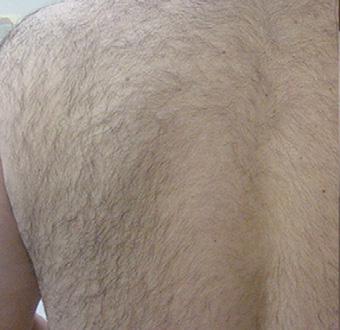
It’s what we are known for. It’s what we excel in. It’s what we were first to do. It’s #NDYAGBYCUTERA
Nd:YAG by Cutera is regarded by many aesthetic professionals as the world’s leading technology for the application of the 1064 nm laser wavelength. Bringing an unprecedented safety profile with unrivalled clinical efficacy, Nd:YAG by Cutera unites all of our medical-laser platforms.

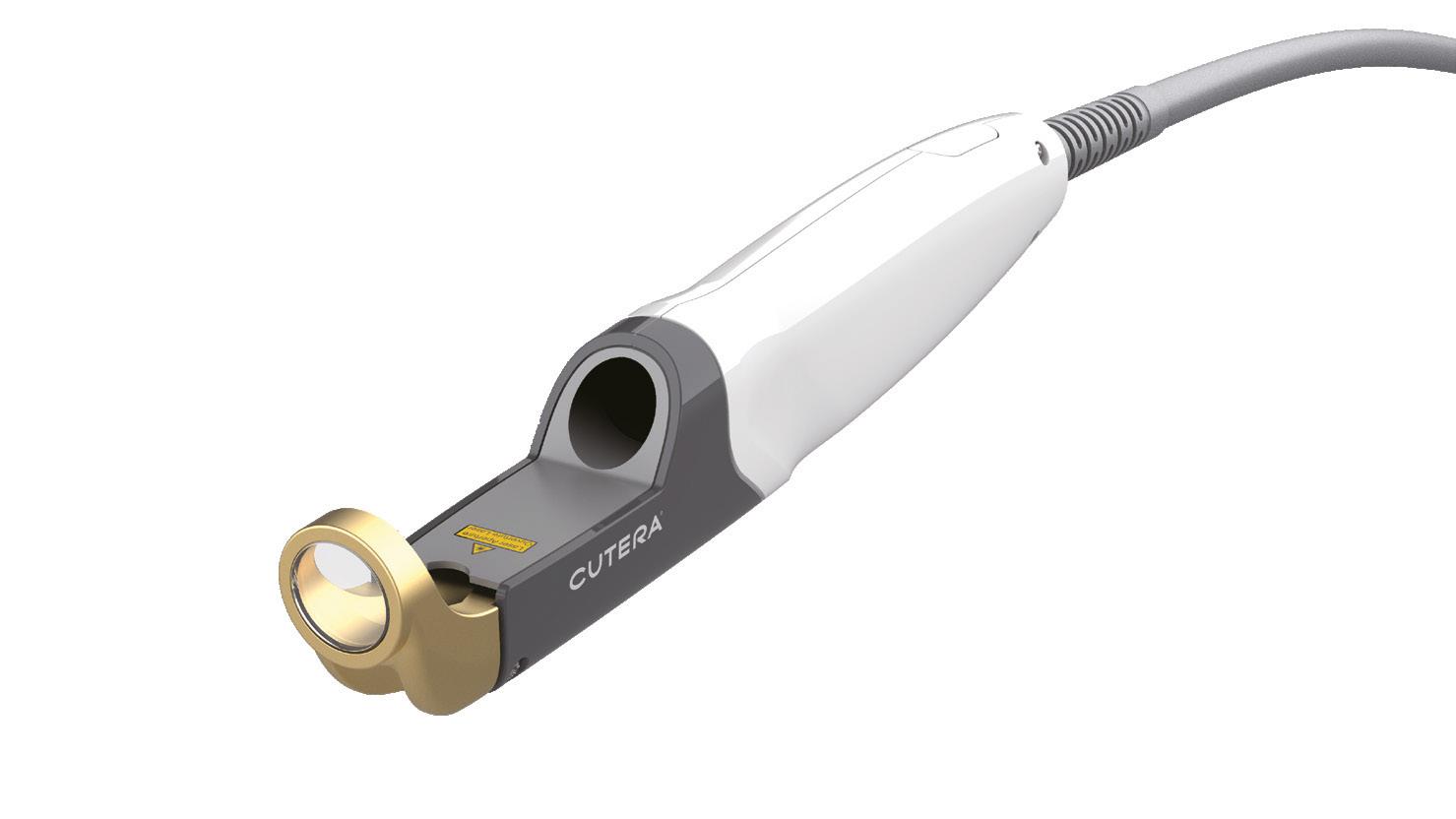
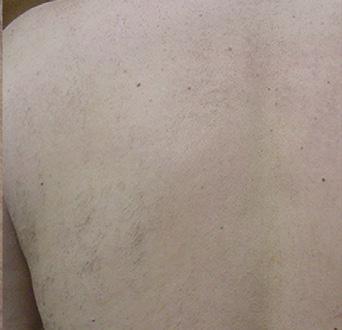



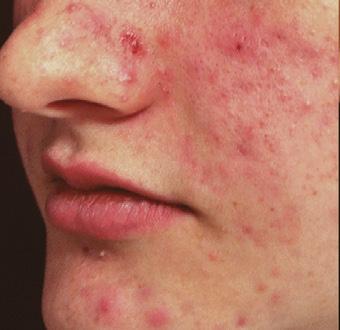
FIND
BEFORE AFTER 8 TREATMENTS Photos
exel V
Laser
BEFORE AFTER 5 TREATMENTS Photos courtesy
xeo BEFORE AFTER Photos courtesy of Dr.
Kayal, MD xeo 1998 2006 2015 2002 2010 2019 1999 2007 2016 2003 2011 2020 2000 2008 2017 2004 2012 2021 2001 2009 2018 2005 2014 2013 2022
OUT WHY IT HAS TO BE #NDYAGBYCUTERA
courtesy of Dr. Felix Bopp, MD
&
Genesis
of Dr. Tahl Humes
John
Thinning skin
Another consequence of waning oestrogen is epidermal thinning. This can largely be attributed to reduced collagen synthesis and increased collagen degradation.8 Additionally, a decrease in mitosis, the process of cell division for growth and replacement of old cells, also leads to thinner skin. This is a direct consequence of reduced oestrogen, which in pre-menopausal states stimulates mitosis in keratinocytes.5,9 Evidence shows that up to 30% of dermal collagen may be lost during the first five years following the menopause, with collagen content further decreasing by approximately 1-2% each year thereafter.2,3,4 This is associated with a decrease in skin thickness by 1.1% per year.4 The end result is a combination of thin, sagging, dry skin, the opposite to pre-menopausal youthful skin.10
Exploring Menopause and Skin Ageing
Ageing is an inevitable factor in life In women, this process is accelerated when they enter the peri-menopause, which is associated with a decline in ovarian function and falling levels of oestrogen. Oestrogen exerts numerous effects throughout the body, therefore it is unsurprising that the skin, as the largest organ in the body, is profoundly impacted by waning levels of oestrogen associated with the peri- and post-menopausal state. The main cell types found throughout the different layers of the skin possess receptors which respond to oestrogen, therefore when the influence of oestrogen is withdrawn, there can be numerous outcomes.1,2,3 Fortunately, whilst ageing is inevitable, your patients looking their age is not.
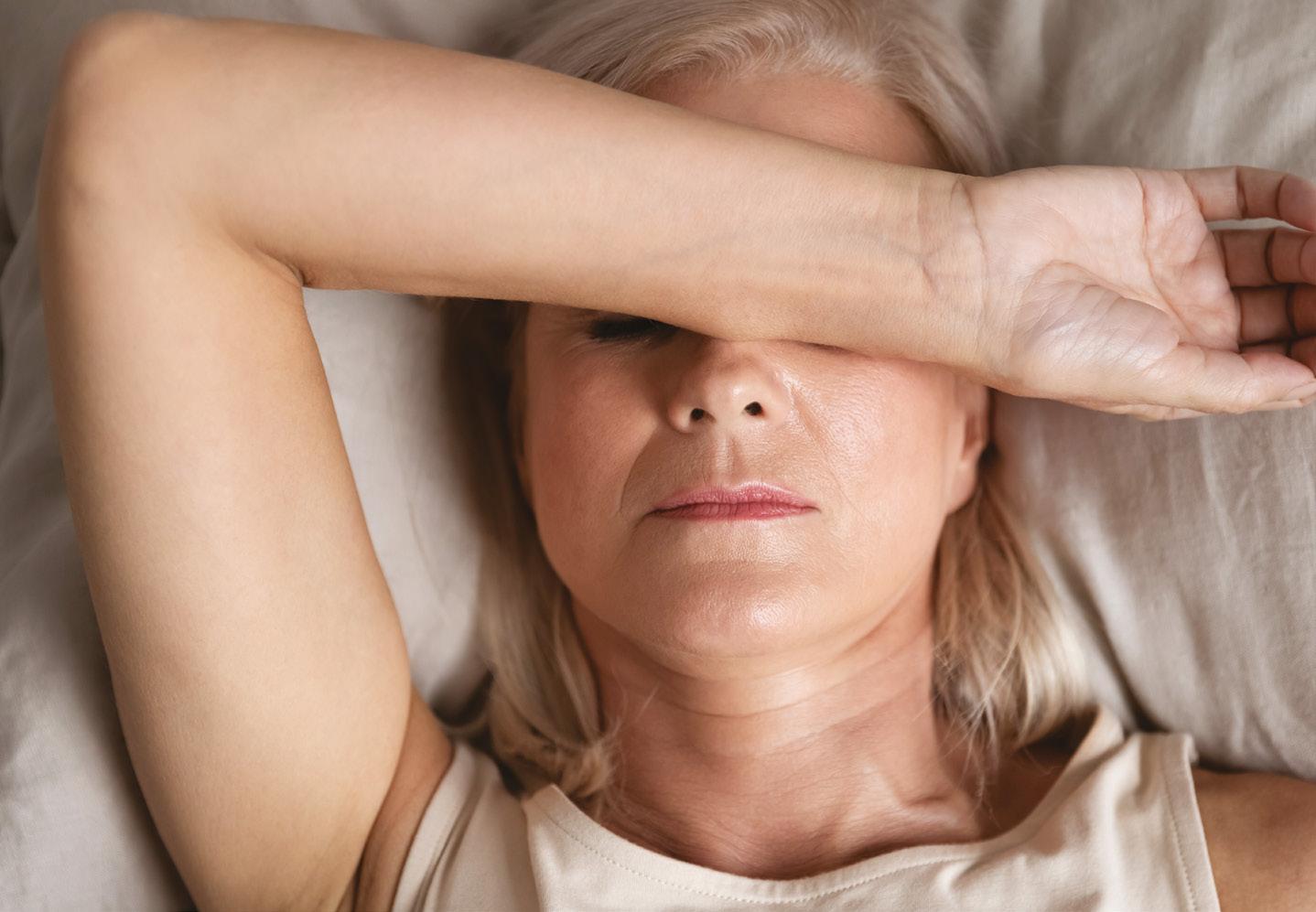
Menopause and skin ageing
Menopause is associated with low levels of oestrogen, otherwise referred to as a hypo-oestrogenic state.1 This significant hormonal change is associated with a loss of skin structural architecture and an increased susceptibility to damage.4 Arguably, a hypo-oestrogenic state represents the most significant intrinsic cause of ageing
in women with its association with an acceleration in skin dryness, thinner skin, fine lines and wrinkles, reduced firmness and elasticity, and photodamage.4
Dry skin
As women enter the peri-menopause one of the first changes noted in the skin, and arguably the most significant change, is the appearance of dry and itchy skin.4 Oestrogen promotes skin hydration by elevating levels of mucopolysaccharides to keep the skin lubricated and moisturised.4 Oestrogen also promotes the production of hyaluronic acid within the dermis. Hyaluronic acid is hydrophilic, therefore it draws in water which keeps the skin hydrated and maintains skin turgor and fullness.5 Additionally, oestrogen also encourages the production of ceramides, which are epidermal lipids that help retain moisture within the skin and maintain a healthy skin barrier.6 Menopausal women also experience a significant decline in circulating testosterone, which usually promotes the production of sebum from sebaceous glands.7 The end result leaves the skin deprived of its natural hydrating agents, culminating in very dry and itchy skin.

Fine lines and wrinkles
The appearance of fine lines and wrinkles is significantly influenced by hormonal factors, with the post-menopausal state being associated with increased wrinkling.5 It has been shown that low levels of oestrogen increase the propensity to form wrinkles, and the application of oestrogen cream significantly improves the appearance of fine lines and wrinkles.1 A large cohort study performed in America, including almost 4,000 post-menopausal women, found that the use of oestrogen replacement therapy prevented the development of skin rhytids.11 This can be explained by the increase in skin collagen content and glycosaminoglycans in the presence of oestrogen.1,3,5,12 Additionally, increased formation of wrinkles is associated with, and exacerbated by, a decrease in skin elasticity, which is observed in the menopause. In post-menopausal women, skin elasticity reduces by approximately 1.5% per year, a decrease that is not similarly observed in women taking hormone replacement therapy (HRT).5 Moreover, topical oestrogen appears to thicken elastic fibres in the dermis, increase their quantity, and improve their orientation. It can therefore be deduced that a lack of oestrogen will contribute to wrinkle formation through a reduction in skin elasticity.5,11
Photodamage
Finally, it is important to recognise that oestrogen has important antioxidant properties which provide a protective role against skin ageing associated with photodamage. Following exposure to ultraviolet radiation, post-menopausal skin is much more susceptible to skin
@aestheticsgroup @aestheticsjournaluk Aesthetics aestheticsjournal.com Reproduced from Aesthetics | Volume 9/Issue 5 - Apirl 2022
Dr Hannah Davies describes the effects that menopause has on the skin and the treatment options available to combat them
damage. An increased formation of deep wrinkles, skin sagging and decreased skin elasticity are all seen following ultraviolet exposure in post-menopausal skin as a direct consequence of oestrogen deficiency.5 This occurs due to an increase in elastase-mediated degradation of elastic fibres found within the dermis.8,11 Furthermore, oestrogen has the capacity to switch off enzymes, known as matrix metalloproteinases (MMPs), which accelerate skin cell damage, thereby counteracting the potential damage inflicted by reactive oxygen species generated from ultraviolet rays from the sun.5,13 This powerful hormone can also activate proteins, such as nuclear factor erythroid 2-related factor (NRf2), which increase the expression of further antioxidants and detoxifying enzymes.10 This may protect against skin damage and subsequent ageing.10
Treatment options
Hormone replacement therapy
To tackle the signs of ageing skin associated with the menopause we must address the underlying cause, oestrogen deficiency. Therefore, arguably the most important preventative and restorative treatment option for ageing skin is the replacement of oestrogen in the form of HRT.14 There is a plethora of routes to administer HRT, including oral tablets, transdermal via gel, patch or spray, and local application of oestrogen pessaries and creams. The optimal HRT regimen utilises body identical HRT, which involves a combination of transdermal oestrogen and micronised progesterone.15
With the recent advancements in accessibility to localised vaginal oestrogen tablets, now available without prescription, we can hope overall accessibility to systemic HRT will similarly improve in the future.15
The use of oestrogen is associated with increased collagen content, increased dermal thickness, improved skin elasticity, reduced wrinkle formation, and a reduced propensity to develop dry skin.16,17 Studies have shown that women who used HRT continuously within one year of their last menstrual period
had significantly fewer wrinkles and less skin rigidity.4,17,18 Undeniably, systemic HRT is generally not advocated to solely treat skin ageing. However, it could be considered at the forefront of treatment options.
There is significant bone loss associated with the menopause, including from the facial skeleton.19 The resulting deficiencies in the skeletal framework contributes to ageing by the development of prominent nasolabial folds, tear trough deformities, and jowls, and leads to a dwindling contoured appearance of the face.20 The early use of HRT prevents bony resorption and thereby, helps to maintain skeletal structure which has the potential to counteract premature facial ageing.19,20 However, as previously alluded to, HRT is not licensed for antiageing purposes and a comprehensive consultation is fundamental prior to initiation to exclude any contraindications to prescription, and to fully explore the small risks associated with HRT, which are the risk of breast cancer and blood clot.15
Skincare
There is an irrefutable correlation between skin collagen loss and oestrogen deficiency. Therefore, it is important to incorporate key ingredients into a skincare regime to promote collagen production.
Vitamin A-derived products, such as retinol and retinoids, help to counteract collagen loss by stimulating collagen production whilst simultaneously protecting against collagen degradation.21 This directly helps to minimise the appearance of wrinkles and the loss of skin firmness and elasticity.
Vitamin A-derived products have also been shown to improve epidermal thickness, provide antioxidant protection and regulate sebum production.21 Another important ingredient to encourage collagen production is vitamin C, which stimulates collagen production and stabilises the collagen molecule by a process called hydroxylation.22 However, it is important to recognise that the penetration of vitamin C in topical skincare products is variable. It is only when vitamin C is present as ascorbic acid and the pH level is below four that penetration occurs.22
As described earlier, menopausal skin is classically dry due to the reduction of sebum, ceramides and hyaluronic acid. Therefore, the use of a daily ‘moisturiser’ is essential to retain water content and prevent water evaporation from the skin surface. ‘Moisturiser’ is an umbrella term which encompasses humectants, occlusives, and emollients.23 Each possess their own mechanism of action but similarly result in improved skin hydration and increased water content within the stratum corneum by directly providing water to the skin and increasing occlusion to prevent water loss across the epidermis. However, not all moisturisers are made the same, and whilst some will contain ingredients to improve the skin barrier function and improve overall skin health, others may exacerbate skin
Humectants Occlusives Emollients • Glycerin • Hyaluronic acid • Alpha hydroxy acids e.g. glycolic acid, lactic acid • Liquid paraffin • Petrolatum • Lanolin • Mineral oil • Jojoba oil • Coconut oil • Isopropyl palmitate
Table 1: Examples of moisturising agents23
@aestheticsgroup @aestheticsjournaluk Aesthetics aestheticsjournal.com Reproduced from Aesthetics | Volume 9/Issue 5 - Apirl 2022
To tackle the signs of ageing skin associated with the menopause we must address the underlying cause of oestrogen deficiency
dryness and weaken the skin barrier.24,25,26 Table 1 illustrates some examples of humectants, occlusives and emollients which represent the key ingredients to look for in a moisturising product.23
Injectables
Hyaluronic acid
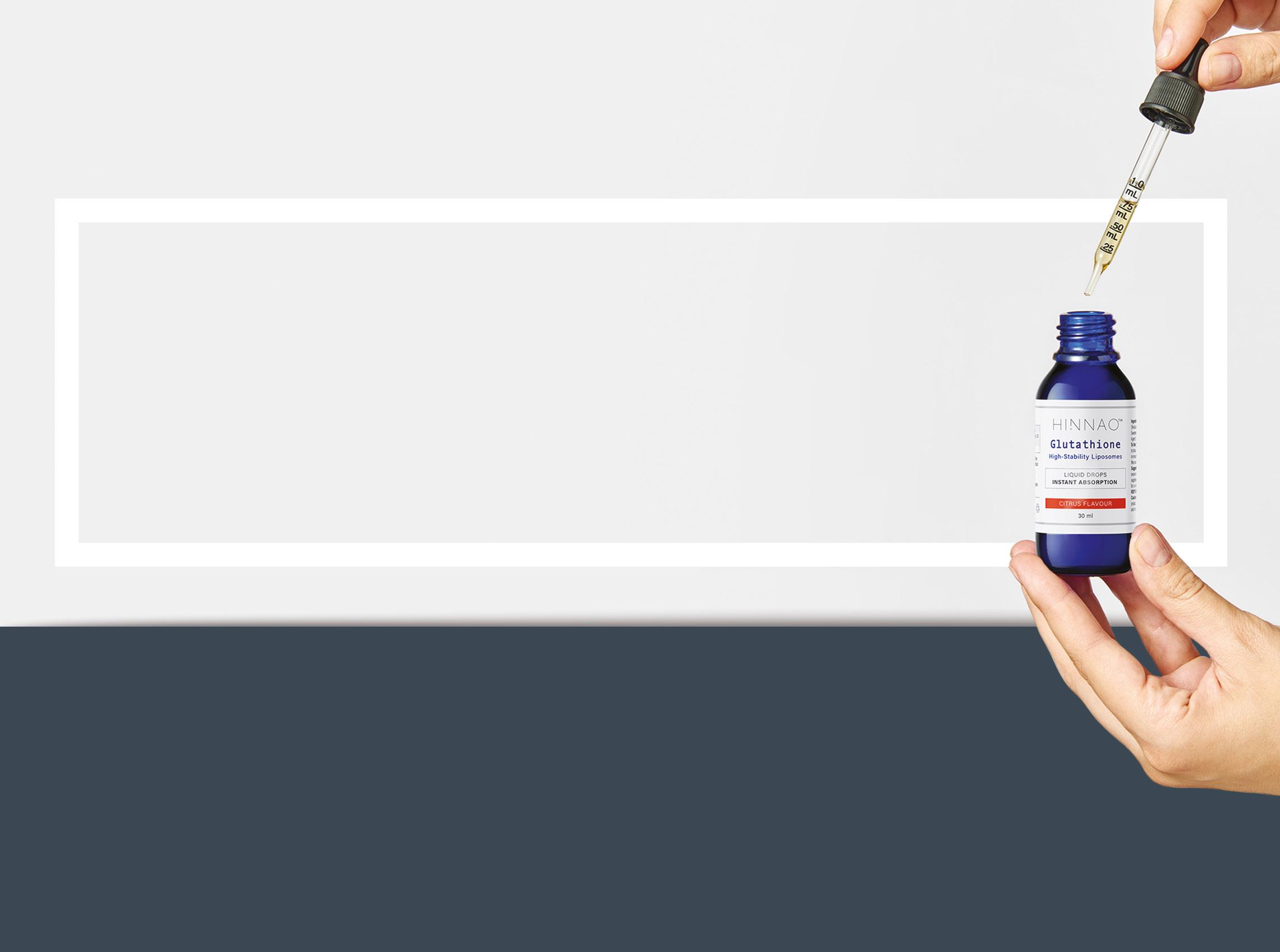
Oestrogen stimulates the production of hyaluronic acid (HA) within the deep dermis of the skin.5 Therefore, topical application of HA, which sits on top of the outer surface of the skin, will not have the same effects as intrinsic production which draws water in, restores skin fullness, maintains skin turgor and reduces fine lines. Therefore, to replenish levels of HA within both the epidermis and dermis, injections could be considered in the form of bioremodelling treatments and HA-based dermal fillers.2 Bio-remodelling treatments aim to increase the biosynthetic capacity of fibroblasts, inducing the restoration of an optimal physiological environment, the enhancement of cellular activity, hydration, and the synthesis of HA, collagen and elastin.2 The benefits of HA-based dermal fillers
go beyond enhancing HA levels within the dermis. Dermal fillers can also be used to address the bony resorption process, which is seen at an accelerated rate in the menopause.19 In addition, dermal fillers can also be used to tackle skin atrophy, which is inevitable in the menopause, restore facial volume and soften the appearance of fine lines and wrinkles associated with ageing.1,27
Botulinum toxin
A discussion about treatments for menopausal skin ageing would not be complete without reference to the use of botulinum toxin A injections. Whilst it will not improve skin texture or quality, and will not reverse the hormonal skin changes associated with the menopause, it can impede the visible ageing process by reducing the appearance of fine lines and wrinkles.2
A holistic approach
The influence of oestrogen on the skin cannot be underestimated and the acceleration of skin ageing as oestrogen levels start to fall is overwhelming. It is
important that healthcare professionals have an understanding and appreciation of this to be able to comprehensively address the skin care concerns of peri- and post-menopausal women. Undeniably, a holistic approach to treatment is needed which encompasses lifestyle modifications, HRT, skincare products and, where desired, injectables too.
Dr Hannah Davies has a Bachelor of Medicine and Bachelor of Surgery, as well as a first-class degree in Biomedical Science from the University College London, where she was recognised on the Dean’s list for her achievements. She currently works as a GP as well as leading her private aesthetic clinic, Dr Davies Aesthetics. Qual: MRCGP; MBBS, BSc
VIEW THE REFERENCES ONLINE! AESTHETICSJOURNAL.COM

@aestheticsgroup @aestheticsjournaluk Aesthetics aestheticsjournal.com Reproduced from Aesthetics | Volume 9/Issue 5 - Apirl 2022
‘I have been using Springpharm for a number of years as I find them extremely helpful, very efficient and they have competitive prices in the aesthetics market.’


 Sam Eidukas, S Aesthetics
Sam Eidukas, S Aesthetics
Spring Giveaway! Visit our Instagram page @springpharmltd to enter a competition to win a filler of your choice from our range. Sign up to our mailing list for Monthly Special Offers Create an account today at www.springpharm.co.uk 0345 319 4000 • info@springpharm.co.uk
Supplying a comprehensive catalogue of high quality, fully regulated aesthetics products to HCPs nationwide. Our trusted supply chain allows us to deliver whatever is required, whenever it’s needed and wherever it’s going.
springpharmltd
Introducing Body Contouring
The global body contouring market reportedly reached a value of US $7.3billion in 2021. It is expected that the market will reach US $11.1 billion by 2027, exhibiting at a compound annual growth rate of 6.9% during 2022-2027.1 This exponential growth is unsurprising when considering that a 2021 YouGov body image study revealed that the overwhelming majority of Britons (89%) say physical appearance matters in today’s society and that 51% of 2,271 UK adults feel pressured to have a certain body type, with women in their 20s and 30s feeling the most pressure.2

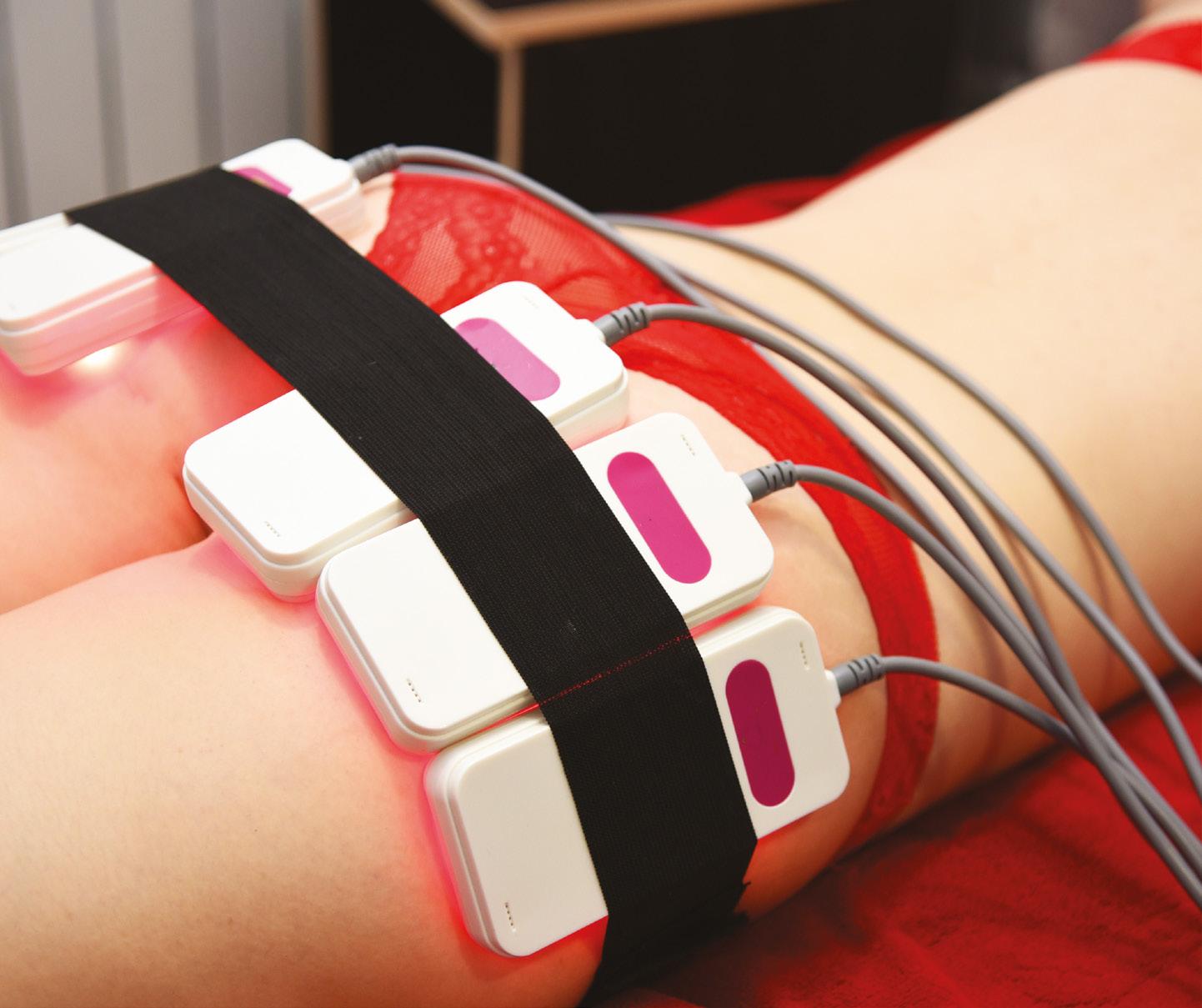
Formally, body contouring procedures were strictly surgical in nature including abdominoplasty, body lifts and liposuction, and there are still many patients who want this more permanent, if more invasive option available to them. However, non-invasive device assisted procedures have become more popular, with a 50% increase in demand for treatments since 2019 alone.3
There are many reasons that could be attributed to why the trend has skewed more towards either a combined or totally non-invasive approach. However, one key contributory factor is the widely reported and growing consumer trend for instant gratification. It is a trend that spans many industries, and one that I’ve witnessed first-hand in my clinics. Patients want procedures that are faster, offer substantially less downtime, give results more quickly and that are ultimately less painful. The popularity of the category is being significantly driven by social media led millennials with a combined 700+ million views for the terms ‘body sculpting’4 and ‘body contour’5 on TikTok alone. An apparent increased acceptance of procedures within this group encourages this cohort to be less nervous about presenting to aesthetic clinics. In my personal experience, late Generation X individuals are also large consumers of body contouring procedures, with post-partum and perimenopausal body concerns dominating that particular demographic.
Common body indications
Skin laxity
Skin laxity, especially on the abdominal, brachium and suprapatellar areas of the skin present as common areas of patient concern. A consequence of intrinsic and extrinsic ageing factors, diminished muscle mass and reduction of collagen synthesis and elastin reserves present as structural degradation and skin laxity.6 Intrinsically, type I collagen, produced by mesenchymal fibroblast cells located in the extracellular matrix (ECM) represents 80-90% of skin collagen. Reduced synthesis of type I collagen is characteristic of chronically aged skin.6 Additionally, fibroblasts contribute to elastin protein production and are critical to the maintenance of skin elasticity.7 Extrinsically, over exposure to ultraviolet (UV) radiation contributes significantly to skin laxity issues. Not only does it assist in accelerating the degradation of collagen synthesis, but it also renders elastic fibres in the papillary dermis non-functional via a process known as solar elastosis.8,9
Cellulite
Cellulite (gynoid lipodystrophy) is a prevalent multifactorial condition that affects up to 90% of post pubertal women in the majority of stages of the life cycle and approximately 10% of men.10,11 Due to its prevalence, it remains a major aesthetic concern for women, with 57% of women reportedly feeling judged for their cellulite.12 Caused by subcutaneous adipose papillae herniating into the dermis and altering the cutaneous topography of the skin,13 it commonly presents on the gluteal and abdominal areas, as well as the breasts, brachium and femoral areas. A common method of assessing cellulite is to use photo numeric classification scales such as the Cellulite Severity Scale (CSS).14 This particular scale considers five clinical and morphological features of significance that include the number of depressions, depth of depressions, clinical appearance of evident raised lesions, and presence of flaccidity and the grade of cellulite.15 These scales are used alongside 3D imaging technology that analyses the skin and identifies textural irregularities.
Adipose tissue distribution
Research tells us that body shape is one of the most prevalent concerns to present in clinic.16 This is predominantly caused by the
@aestheticsgroup @aestheticsjournaluk Aesthetics aestheticsjournal.com Reproduced from Aesthetics | Volume 9/Issue 5 - Apirl 2022
Miss Jonquille Chantrey discusses body contouring indications and provides an introduction to suitable treatments
differing distribution of subcutaneous white adipose tissue across the body and that contributes approximately 80-90% of total body fat across the abdominal, subscapular, gluteal and femoral areas.17 In addition to genetic, hormonal and gender-specific factors, adipose distribution is also affected by extrinsic factors such as diet, stress and physical activity.
Wrinkles
Even with a palpable movement towards ‘natural enhancement’ as opposed to ‘antiageing’, particularly within the over 50s demographic, wrinkle reduction still presents as a common concern amongst many patients.17 One of the most visible signs of the ageing process, wrinkles can start to appear from as early as 25, although in my experience most patients don’t present for treatment until they are in their 30s and 40s.
In addition to external aggressors and similarly to skin laxity, cumulative degradation of collagen and elastin, as well as slowing of epidermal cell life cycle and turnover rate coincides with a slower wound healing and less effective desquamation.18 Common treatment areas that present in my clinics for wrinkles include the face (particularly around the
nasolabial folds, periorbital area and glabella), neck and décolleté, hands, brachium, forearms and upper knee.
Treatment modalities
With the aesthetics specialty bursting with an apparently non-exhaustive menu of treatment options, it is perhaps unsurprising that many patients initially present in clinic as unnerved and unsure of what procedure they should choose to achieve the desired results, or by comparison, with a fixed idea of what will solve their concerns. This is why an accurate diagnosis with comprehensive and ethical guidance is the cornerstone of patient care. Below are some of the treatment modalities that I choose to consider when treating my own patients.
Radiofrequency
Radiofrequency (RF) body contouring treatments are among the most requested aesthetic therapies and one of the latest technological advancements to arrive on the market.19 The technology works on the premise that the RF electromagnetic waves are conducted through the dermis via electrodes to allow localised heating of subcutaneous adipose tissue located in the hypodermis. Heat is generated
due to the absorption of energy by target tissues that then may provoke various physiological and thermoregulatory responses, such as collagen denaturation and creation. The collagen remodelling can produce collagen fibres which are tight, dense, and neatly organised.20 This contributes to tighter, firmer-looking skin. When choosing a device, I would encourage practitioners to research thoroughly and assess clinical data and studies pertaining to the specific device.
Cryolipolysis
Commonly known as ‘fat freezing’, cryolipolysis exploits evidence that adipocytes are more susceptible to cooling than other skin cells. Targeted application of precisely controlled cooling effectively targets and triggers apoptosis of the adipocytes whilst leaving the skin itself unaffected.21 This is a modality I have used extensively in my practice throughout the submentum, brachium, upper back, abdomen, flanks, thighs and supra-patellar compartments.
Electromagnetic muscle stimulation devices
Traditionally used in physical therapy and urology, electromagnetic muscle stimulation (EMMS) devices have become more popular in aesthetic medicine clinics for body contouring purposes. One 2020 study by Kilmer et al. explains that EMMS has the advantage of not coupling through the patient’s skin, thus minimising discomfort caused by sensory nerve stimulation. Clinical studies have been conducted to show safety and efficacy of EMMS for body contouring in the abdomen and buttocks.25,26
Electromagnetic muscle stimulation has also been used for toning and strengthening thighs.22
Liposuction
Liposuction remains a viable and highly effective outpatient option for fat removal and the procedure removes adipose tissue from the subcutaneous space in order to shape the silhouette. It is advantageous in that it limits future deposition of fat in treated areas.23 I have seen the benefits of surgical interventions for these patients. It’s therefore important that should you consider body contouring treatments in your practice, and that you are also aware of the surgical techniques available so you can refer patients who will not respond to less invasive techniques.
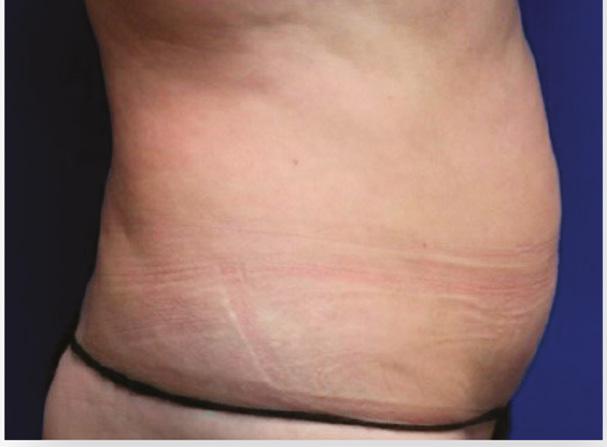
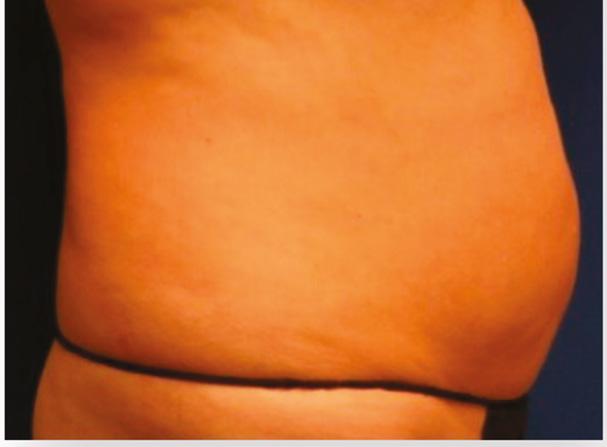
Research thoroughly and assess clinical data and studies pertaining to the specific device
Before After @aestheticsgroup @aestheticsjournaluk Aesthetics aestheticsjournal.com Reproduced from Aesthetics | Volume 9/Issue 5 - Apirl 2022
Figure 1: Patient after six sessions using the Lumenis NuEra Tight radiofrequency device for fat reduction. Images courtesy of Lumenis.
Other considerations
When a patient presents at a body contouring consultation it’s essential to establish how realistic they are about their goals, and that they understand the commitment and investment that they will need to make from the offset as part of their treatment journey. The level of commitment differs between patients, indications and severity of those indications. However, patients could on average expect three to six treatment sessions over a three-to-six-month period using non-surgical methods, alongside a nutrition and exercise plan.
This should be discussed with the individual during the consultation process. As well as looking at the patient’s silhouette, it is crucial that practitioners adopt a holistic approach and treat every case on its individual merit, taking all factors including general health, nutrition, physical activity, genetic, medical co-morbidities and hereditary conditions into account. This is in addition to any life events such as pregnancy, and any weight fluctuations. So, you really need to be looking at the patient
as a whole and considering their overall wellness. In my experience, patients that tend to have frequent weight variations and more inconsistent lifestyle factors require more counselling to achieve realistic expectations. This will give an overall synopsis of the patient and what treatment modalities are likely to work best for them resulting in the best patient outcome.
Consider different treatment modalities
Body contouring continues to be a growth area within the aesthetics industry and a combination of surgical and non-invasive modalities are available to practitioners that work effectively on a wide range of indications including skin laxity issues, fat reduction, wrinkle reduction and cellulite reduction. Practitioners should research all available options, prioritise safety and efficacy and embark on a thorough, personalised consultation prior to agreeing patient treatment plans.
Miss Jonquille Chantrey is an aesthetic surgeon and founder of ØNE aesthetic studiø, with more than 16 years’ scientific product development experience. She has launched many major industry innovations, is a prominent global thought leader and has as spoken throughout six continents over 12 years. Miss Chantrey has performed more than 55,000 facial and minimally invasive surgical procedures and is a KOL for several brands including Lumenis.

Qual: BMedSci, BMBS, MRCS, MBCAM VIEW THE REFERENCES ONLINE! AESTHETICSJOURNAL.COM

WIGMORE MEDICAL PRESENTS 2022
Save the date for Wigmore Medical’s new event to be held on May 7th-8th 2022, at the world-renowned Royal College of Physicians. This two-day conference will be offering a packed agenda led by internationally renowned experts. Key areas of focus will be the treatment of skin of colour, pharmacogenetics in skincare, and the business of hair.

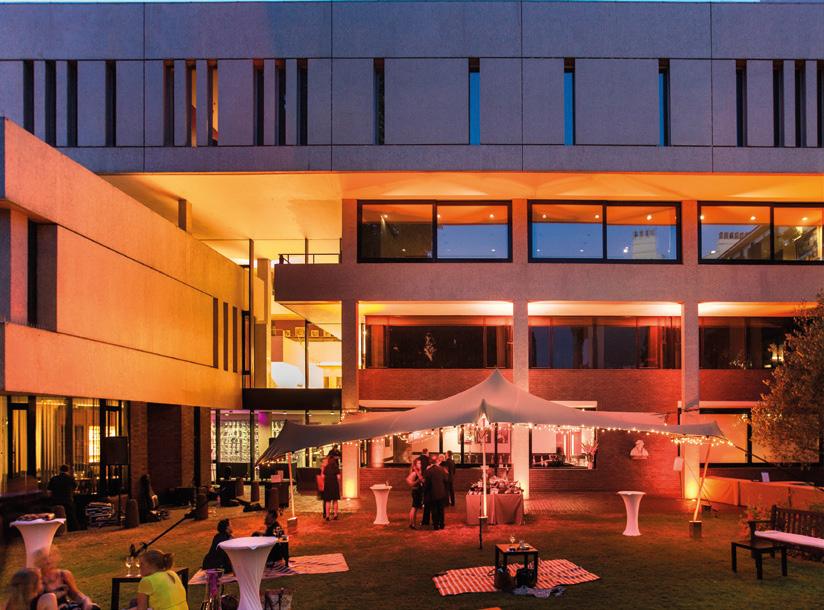
Already confirmed for the weekend, are leading practitioners Dr Tim Flynn, Dr Anjalie Mahto, Dr Max Malik, Dr Raj Persaud, Dr Rita Rakus, Dr Beatriz Molina, Dr Nick Lowe, and Julie Scott (RGN, NIP).
To find out more, or to book your tickets and stand, please go to Wigmorepresents.com
@aestheticsgroup @aestheticsjournaluk Aesthetics aestheticsjournal.com Reproduced from Aesthetics | Volume 9/Issue 5 - Apirl 2022
A broad range of indications for face and body treatments








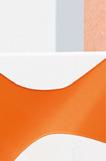
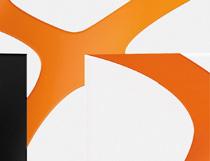






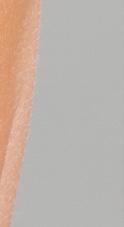
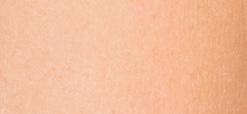




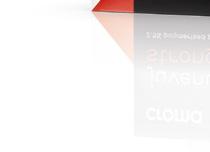

















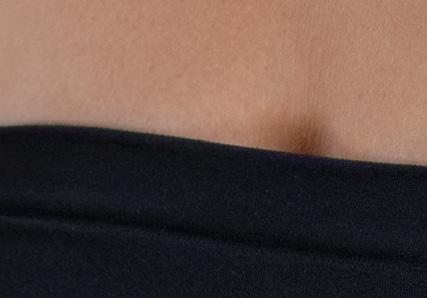



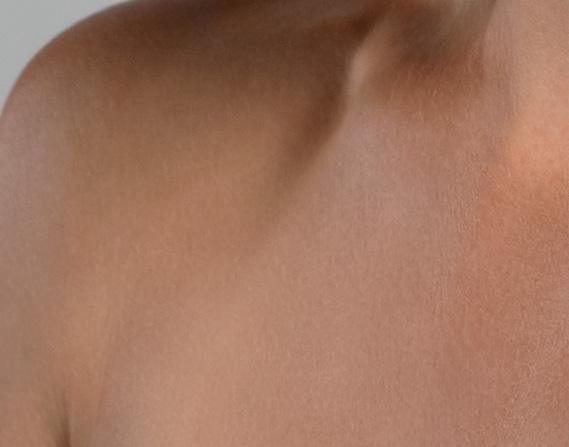

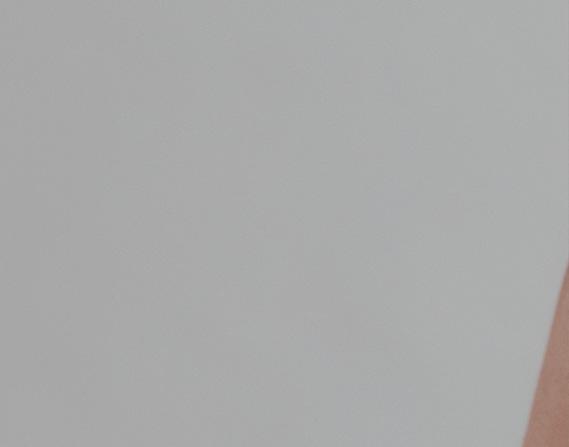
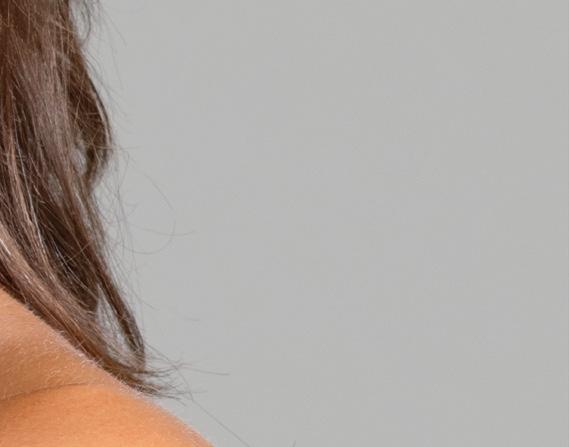




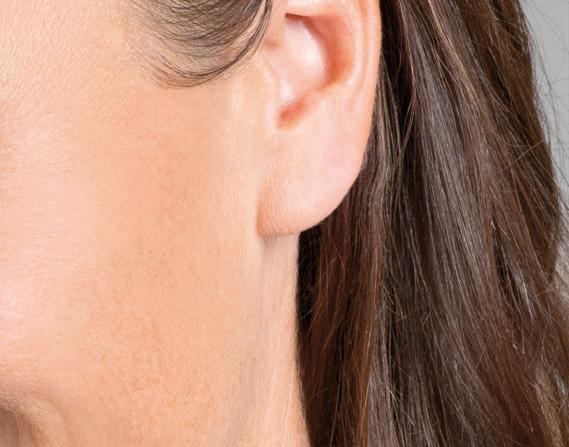







juvenus is easy to inject and specifically designed to treat a variety of skin concerns of the face and body, with instantly visible results. The moisturising and antioxidative activity help create the optimal environment for the growth of fibroblasts, which leads to an improved tissue elasticity.
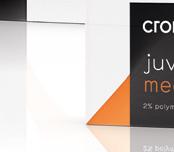

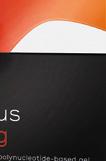
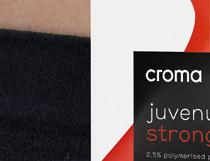





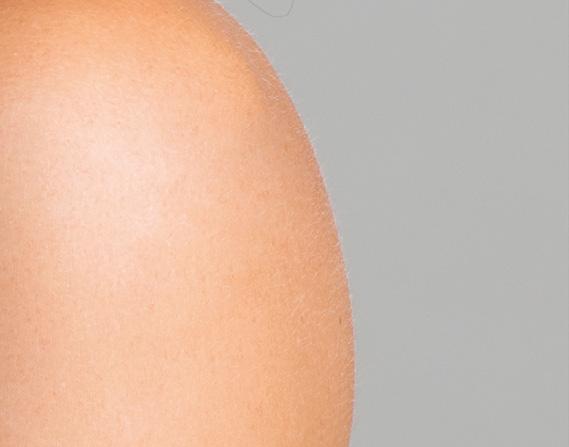
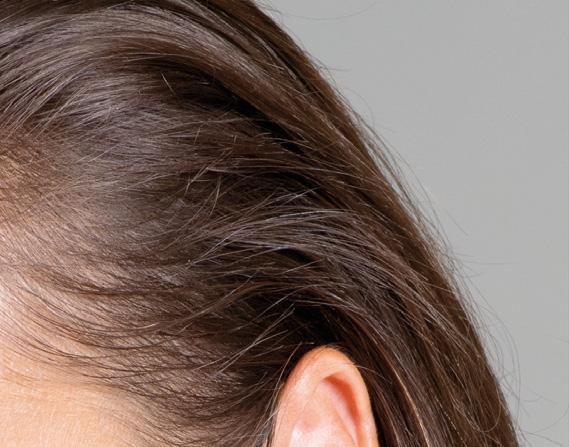
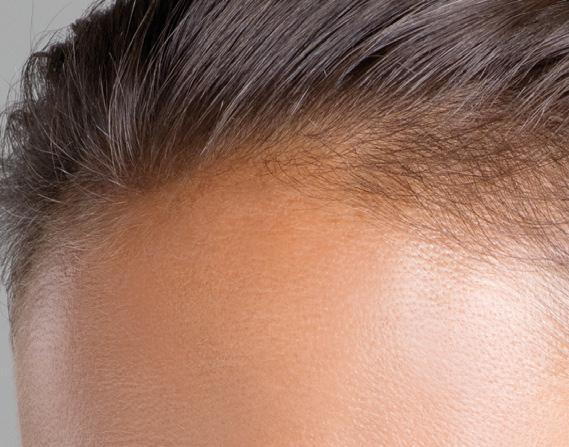

The medical practitioner confi rms having informed the patient of a likely risk associated with the use of the medical device in line with its intended use. Please consult the instructions for use in order to choose the right product for each specifi c indication. Available with CE 0373 Croma-Pharma UK T: +44 118 206 6513 | Info.uk@cromapharma.com https://at.croma.at | cromapharmauk
Introducing the PicoSure® Pro. It’s the first and only FDA-cleared 755 nm picosecond laser on the market, designed to uniquely deliver energy in a trillionth of a second, utilising pressure instead of heat to provide safe and effective treatments for unwanted pigmentation and skin revitalisation of all skin types. It is also the first FDA-cleared laser to treat melasma, as well as other hyperpigmentation issues such as Nevus of Ota and Hori’s nevus.
Key features
• 1 Zoom handpiece (2-6mm) and 4 fixed handpieces (5, 6, 8, 10mm) with adjustable fluence for customisable treatments

• Platinum focus™ lens for unique skin revitalisation with no downtime
• Flat lens for treating unwanted pigment in all skin types


• Optional 532 nm and 1064 nm add on for tattoo removal capabilities

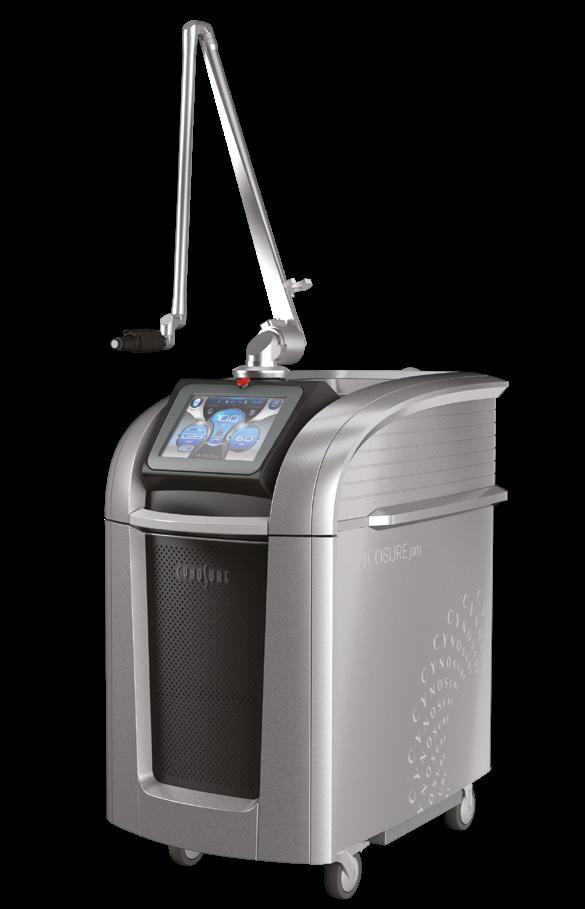
Benefits for practitioners
With more than one million treatments performed and 100% patient satisfaction,1 PicoSure has become a popular and trusted treatment worldwide. The enhancements of the new system offer practitioners greater versatility, treating more patients a day but with even better outcomes, lightening pigment in two to three sessions. Additional enhancements include a sleek, modern design, intuitive graphic user interface and new 5mm handpiece for treating discrete lesions, lighter skin types and smaller areas.
Todd Tillemans, chief executive officer of Cynosure, comments, “As inventors of picosecond aesthetic laser technology, we are constantly challenging ourselves to continually drive innovation forward. Whether we’re developing new devices or improving upon our trusted flagship products, we’re focused on addressing the unmet needs of our practitioners to ensure the best possible outcomes for their patients and practice. From a 50% increase in energy to new handpieces and an adjustable fluence, the performance enhancements made to the PicoSure Pro device provide practitioners with more versatility than ever before, allowing them to efficiently treat more patients per day and provide better outcomes in less time.”
Treatment outcomes
• Remove unwanted pigment safely and effectively in all skin types
• Reduce wrinkles, fine lines, acne scars and pore size with no downtime


• Improve overall skin tone and texture; providing patients with lighter, brighter and more radiant complexion
A lack of downtime
There is no downtime following the use of this device. Patients may experience erythema that typically resolves within a few hours, but in some cases, may linger up to 24 hours. Since each patient is unique, it is highly recommend to follow the outlined clinical guidelines to help optimise safety and efficacy before treatment.
Practitioner perspective
Dr Asif Hussain, cosmetic dermatology and laser surgery specialist, comments, “I’m proud to be one of the first practitioners in the UK to use the PicoSure Pro device. The upgraded technology makes it even easier for me to effectively treat a variety of skin health and pigmentation concerns – with the added prestige of the FDA-cleared melasma indication, which impacts a significant number of my patients. With PicoSure Pro, I can achieve comparable treatment results to more aggressive lasers with less pain and no downtime, making it a true one-and-done device for a myriad of patient needs.”

Join us for the official launch! Cynosure will be running an exclusive industry event around melasma and introducing the PicoSure® Pro on May 25, 2022, at its International head offices in Chiswick, London. For more information about PicoSure® Pro, or to register for the event, contact fiona.comport@cynosure.com



Discover the PicoSure® Pro The launch of the first and only 755 nm FDA-cleared laser to treat melasma pigment
Figure 1: Before and after three treatments. Images courtesy of Dr Emil Tanghetti
REFERENCE
Realself Rating as of May 2021
advertorial was sponsored by
Aesthetics | April 2022 41 @aestheticsgroup @aestheticsjournaluk Aesthetics aestheticsjournal.com Advertorial Cynosure
Before After
1.
This
Cynosure www.cynosureuk.com
THE AESTHETICS AWARDS WINNERS
On March 12, the Aesthetics team were able to host the first in-person Aesthetics Awards in two years... and was it worth the wait! A massive thank you to all our judges, who carefully assessed each entry in their assigned categories, ensuring their scores and feedback were as fair and balanced as possible, as well as to our voters for their fantastic feedback. Special thanks must also go to our sponsors; their support enabled us to deliver such a spectacular event! A huge congratulations to all Winners, as well as those who received Commendations and High Commendations. We had some incredible Finalists, and everyone who was up for an Award should be proud of everything they’ve achieved and contributed to the specialty throughout the year.
THE AESTHETICS JOURNAL AWARD FOR OUTSTANDING ACHIEVEMENT
WINNER: MR DALVI HUMZAH

“I am delighted and thrilled to receive this Award, and also very humbled about it. People have said so many lovely things that I have never even thought about and this has really touched me. I would not have got here if not for the friendship and camaraderie from everyone in the industry, and I also want to thank the Aesthetics team for all the opportunities they have provided me over the years.”
Mr Dalvi Humzah
42 @aestheticsgroup @aestheticsjournaluk Aesthetics aestheticsjournal.com Aesthetics | April 2022



43 @aestheticsgroup @aestheticsjournaluk Aesthetics aestheticsjournal.com Aesthetics | April 2022 PRODUCT/PHARMACY DISTRIBUTOR OF THE YEAR WINNER: HEALTHXCHANGE GROUP HIGHLY COMMENDED: Church Pharmacy COMMENDED: AestheticSource FINALISTS: • Cosmeditech Innovations Ltd • HA-Derma • Harpar Grace International THE CLINISEPT+ SKIN AWARD FOR INDEPENDENT TRAINING PROVIDER OF THE YEAR WINNER: ACQUISITION AESTHETICS HIGHLY COMMENDED: Learna Limited COMMENDED: Cosmetic Courses FINALISTS: • Avanti Aesthetics Academy • Dr. Uche Academy • Inspired Cosmetic Training • Interface Aesthetics • Medical Aesthetics Training Academy Ltd (MATA Courses) • Younique Aesthetics Academy
recognised
Independent Training Provider!
Lara Watson
Miss Priya Chadha “Wow! This Award is an amazing recognition from our clients and is
for the whole team. It really means a lot to all of us
when you do a good job it’s so important to be able to get
praise. This is absolutely fabulous, because we work so hard and so does our whole team.” Steve Joyce, marketing and technology director
“We are over the moon to be
for a second year running as the UK’s Best
We are immensely proud of our amazing team of trainers and operations staff for demonstrating once again that passion, hard work and a sense of humour is a winning combination and worthy of celebration.” Miss
and
great
because
that
BEST CLINIC SCOTLAND
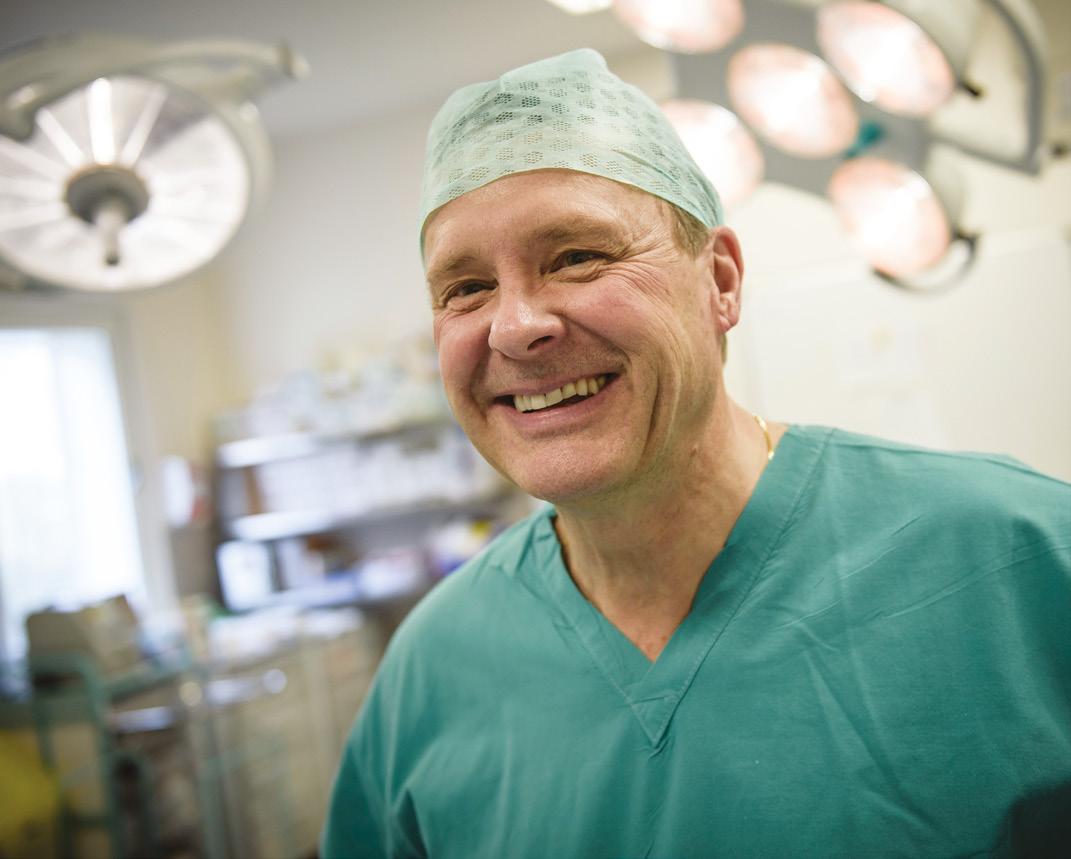
Mr Douglas McGeorge, co-founder
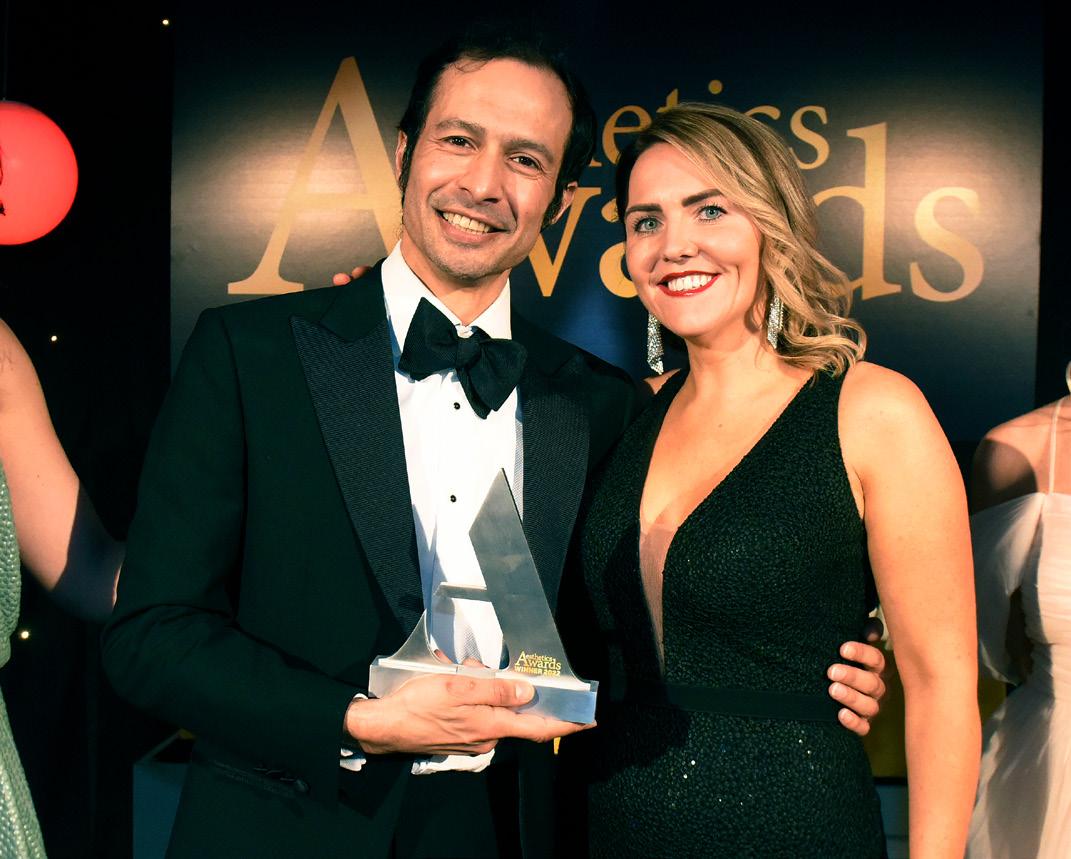
44 @aestheticsgroup @aestheticsjournaluk Aesthetics aestheticsjournal.com Aesthetics | April 2022
WINNER: CLINETIX HIGHLY COMMENDED: Dermal Clinic COMMENDED: The Canmore Clinic FINALISTS: • Clinica Medica Ltd • Dr Nestor’s Medical Cosmetic Centre • Renu Skin
SURGICAL PRODUCT WINNER: SOLUTIONS FOR SCARS
HIGHLY COMMENDED: The Micro Adipose Processing System
Therapeutics,
Clinic
(SCIENCE OF SKIN)
(AQ
Inc) COMMENDED: Skinade MD Pre + Post Care Surgical Programme (Skinade)
“I think winning is a fantastic testament to the effort and hard work we have put in. Everyone who was a Finalist deserves to be a winner, but it’s such a reward for us to get this Award. After such a difficult couple of years it’s so good to be back and we are absolutely delighted to win.” Dr Simon Ravichandran, clinic owner
“We entered these prestigious awards in the hope that our science and ever growing support from customers and the medical and aesthetic professionals who use our products would be recognised. To win is such an accolade for the SOS team and everyone who’s supported our research and products. As the only topical scar treatment based on Level 1 science we are delighted to get recognition for our breakthrough surgical product and the people we continue to support and help with scarring.”
“It is truly incredible to receive this Aesthetics
and we are so excited by it. It’s a great showcase for the equipment and it really means everything to be recognised by customers and peers. It shows that it’s not all about marketing, it’s about the

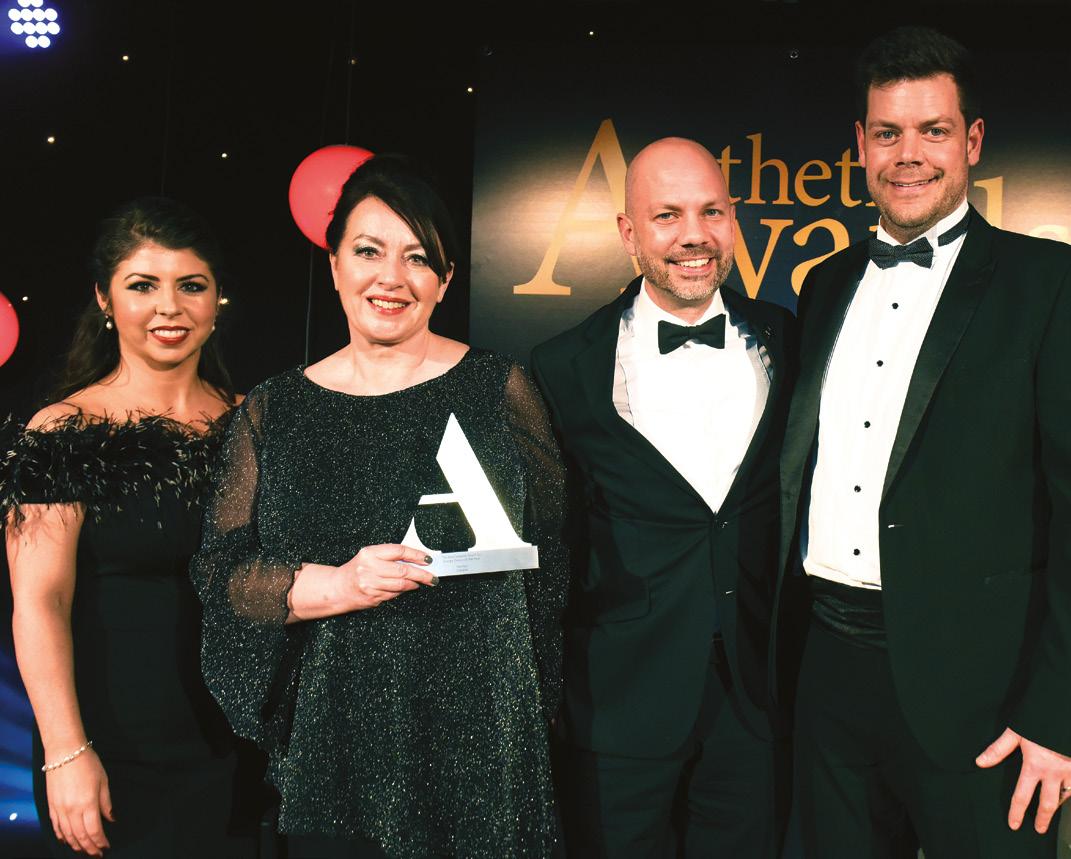
Tim Stevens, territory manger
Miss
45 @aestheticsgroup @aestheticsjournaluk Aesthetics aestheticsjournal.com Aesthetics | April 2022 THE HAMILTON FRASER AWARD FOR BEST CLINIC SOUTH ENGLAND WINNER: S-THETICS HIGHLY COMMENDED: Atelier Clinic COMMENDED: Illuminate Skin Clinic and River Aesthetics FINALISTS: • Aspire Medical Group Ltd • Finesse Skin Clinic • Health & Aesthetics • Hunar Clinic • Koha Skin Clinics • Perfect Skin Solutions • The Hartley Clinic • The Shore Skin Clinic Ltd • Weston Beauty Clinic THE SKINCEUTICALS AWARD FOR ENERGY DEVICE OF THE YEAR WINNER: NORDLYS (CANDELA) HIGHLY COMMENDED: CoolSculpting Elite (Allergan Aesthetics) and Dermalux Tri-Wave MD (AESTHETIC TECHNOLOGY LTD) COMMENDED: Secret RF (Cutera UK) FINALISTS: • BYONIK Pulse Triggered Laser (Pure Swiss Aesthetics Ltd) • Emerald Laser (Erchonia Lasers Ltd) • ENDYMED 3DEEP Skin Science (AesthetiCare) • Stellar M22 (Lumenis) • Thermage FLX (Solta Medical)
“I am absolutely buzzed to win this Aesthetics Award – I am immensely proud of the entire group of ladies on my team, it’s such an amazing team to be a part of. A big thank to the event organisers, and to all of our partner suppliers as well for allowing us the opportunity to work with you and bring our patients the best.”
Sherina Balaratnam, clinic owner
Award
products and the science behind them.”

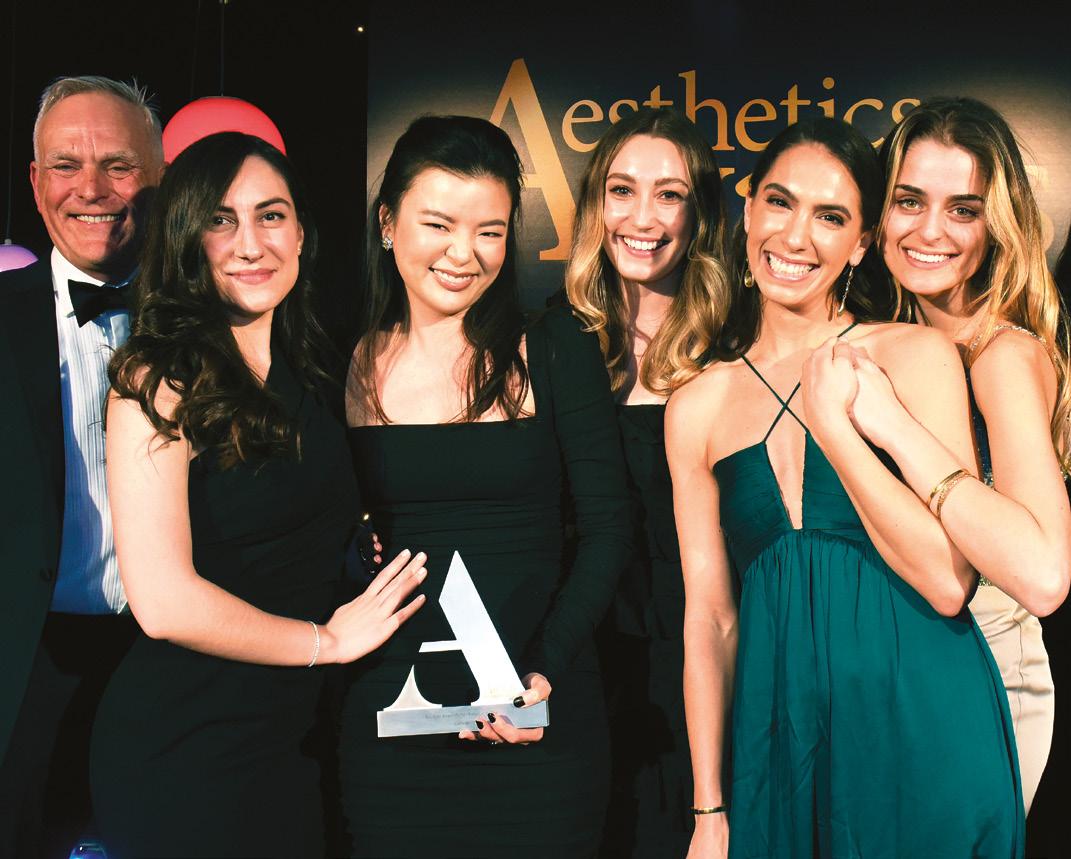
46 @aestheticsgroup @aestheticsjournaluk Aesthetics aestheticsjournal.com Aesthetics | April 2022 THE STERIMEDIX AWARD FOR SUPPLIER TRAINING PROVIDER OF THE YEAR WINNER: TEOXANE UK HIGHLY COMMENDED: VIVACY Laboratories COMMENDED: AestheticSource Training FINALISTS: • Cynosure Clinical Training Team • HA-Derma • Wigmore Medical BEST CLINIC SUPPORT PARTNER / PRODUCT OF THE YEAR WINNER: GETHARLEY HIGHLY COMMENDED: 5 Squirrels COMMENDED: Aesthetic Nurse Software and Allergan Spark FINALISTS: • Delivering Demand • EnquiryBot • Julia Kendrick PR • MeTime • Success in Aesthetic Business • The Aesthetics Accountant “Thank you so much! We are very, very excited to receive this Award. I think people should enter the Aesthetics Awards in the future because it’s a great recognition of everyone’s hard work. Being part of the nominated group was truly a great honour. It has been great to be at the ceremony as we have been able to meet so many new people and network.” Charmaine Chow, CEO “TEOXANE UK believe wholeheartedly that our responsibility to practitioners and patients goes beyond product performance alone. We believe that innovation paired with clinical advancement represents excellence, and our training allows healthcare practitioners to achieve this excellence in practice. This Award is a testament to the Teoxane Academy team and their commitment to serving the aesthetic community with tailored education. We also would like to thank our incredible faculty for their commitment and passion to best-in-class clinical education.” Jordan Sheals, deputy country manager


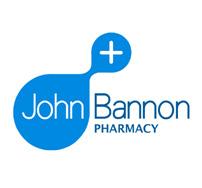
47 @aestheticsgroup @aestheticsjournaluk Aesthetics aestheticsjournal.com Aesthetics | April 2022 THE JOHN BANNON AWARD FOR BEST CLINIC IRELAND AND NORTHERN IRELAND WINNER: YOUNIQUE AESTHETIC CLINIC HIGHLY COMMENDED: FaceTherapyNI COMMENDED: Beyond Skin and The Laser and Skin Clinic FINALISTS: • Eden Medical Clinic • Elite Aesthetics Clinic Ltd • Revive Clinic • The New You Clinic THE ACE AWARD FOR MANUFACTURER OF THE YEAR WINNER: TEOXANE UK HIGHLY COMMENDED: Lynton Lasers COMMENDED: Lumenis FINALISTS: • AESTHETIC TECHNOLOGY LTD • BTL Industries • Candela • InMode UK • Sciton UK • Skinade • VIVACY Laboratories “This Award is a testament to the team here at TEOXANE and their commitment to excellence on behalf of the brand. We are delighted to be recognised for the value
we can
clinical practice, including
innovative range
dermal fillers
business support we can
partners across
UK
aesthetic
work
our team
this Aesthetics Award
year we have
our
Belfast
incredible. Winning
motivation
clinic.”
owner
that
bring to
both an
of
and the
offer clinic
the
and Ireland. Thank you to the
community for your votes and support.” Jordan Sheals, deputy country manager “It’s just amazing to be recognised for all the hard
that
put in! We won
back in 2018 and this
won for
new
clinic too, which is
just brings so much positivity and
to the
Áine Larkin, clinic
“To win this Award has been absolutely wonderful
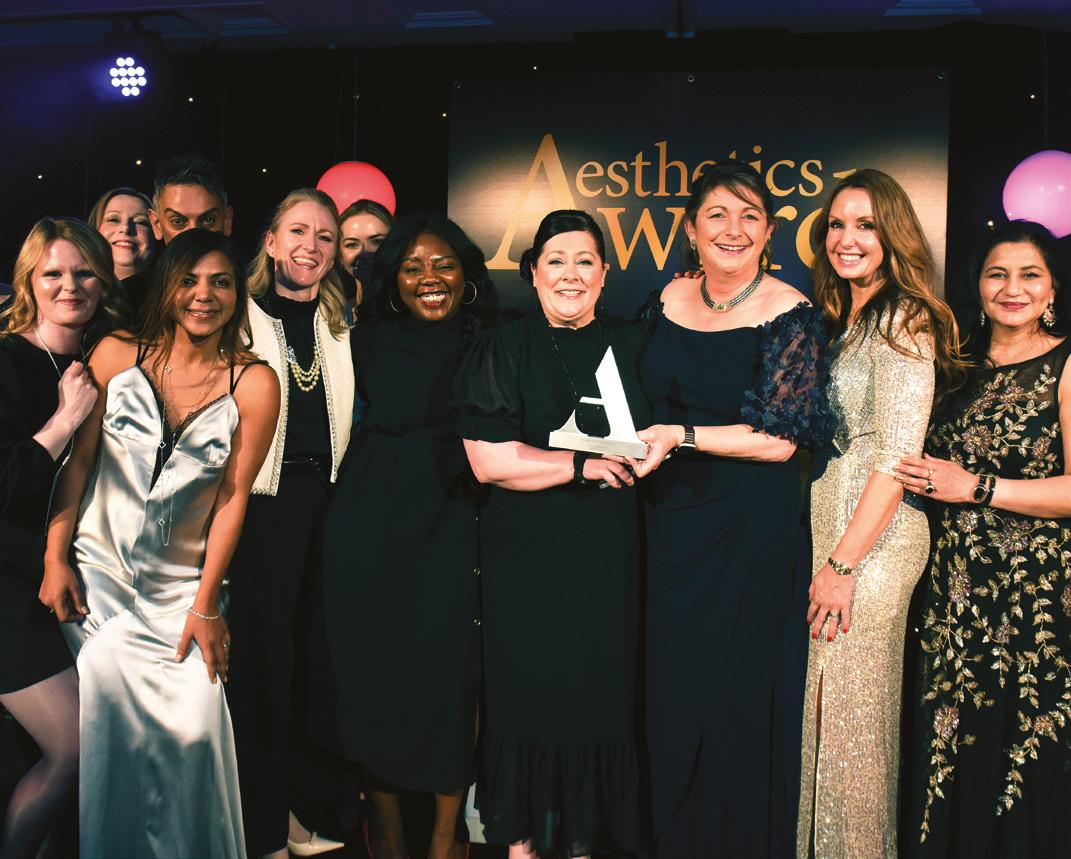
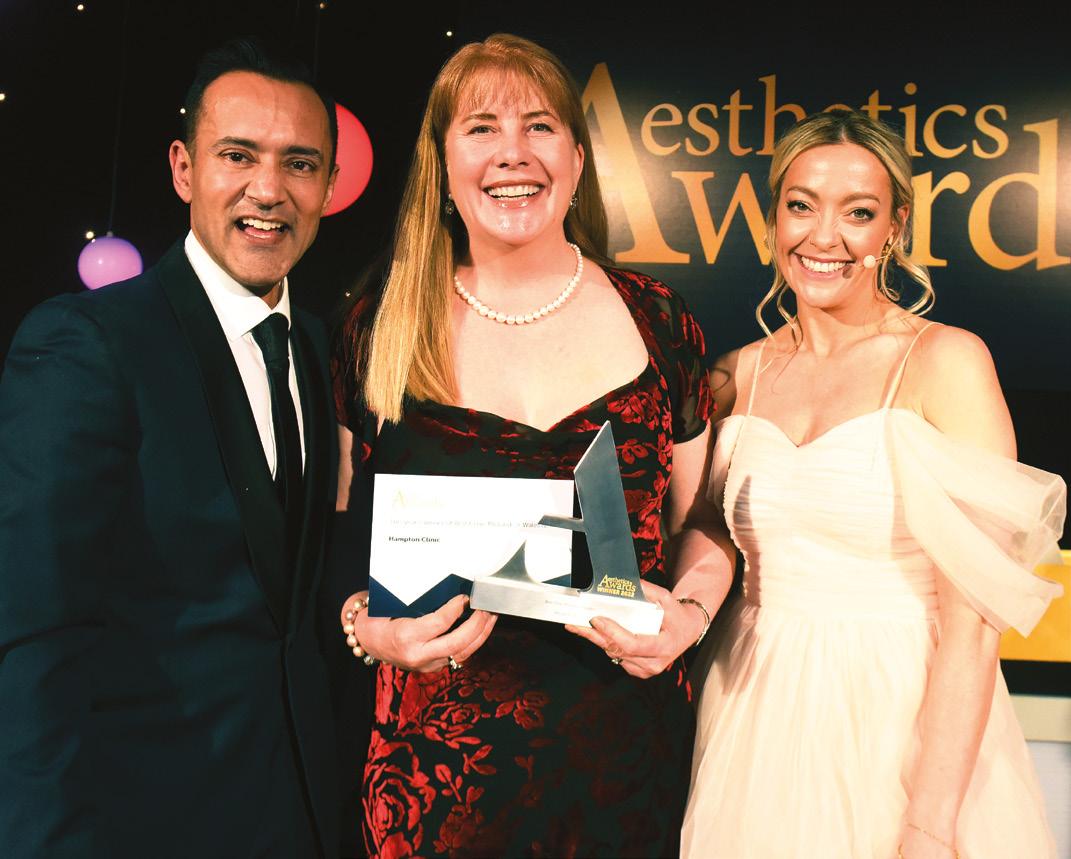
extraordinary. It has been a hard two years for everyone, so to be back has been amazing – the atmosphere is
so to be recognised for that it wonderful.”
48 @aestheticsgroup @aestheticsjournaluk Aesthetics aestheticsjournal.com Aesthetics | April 2022 BEST CLINIC MIDLANDS AND WALES WINNER: HAMPTON CLINIC HIGHLY COMMENDED: Freyja Medical COMMENDED: Air Aesthetics Clinic and MediZen Clinic FINALISTS: • Secret Aesthetics • So Aesthetics • The Beauty Medics TOPICAL SKIN PRODUCT/RANGE OF THE YEAR WINNER: SKINBETTER SCIENCE (AESTHETICSOURCE) HIGHLY COMMENDED: The MATRIXYL SYNTHE’ 6 Range (AlumierMD) COMMENDED: Heliocare 360 (AesthetiCare) FINALISTS: • AQ Active Serum (AQ Therapeutics, Inc) • Hyaluronic Acid Boosting Serum (PCA Skin) • iS Clinical Cosmeceuticals (Harpar Grace) • SkinCeuticals Silymarin CF (SkinCeuticals) • Synergy 6 NX GEN SPF50 (Intradermology) • The Perfect Peel (Medica Forte Ltd) • Your Signature Range (5 Squirrels) • ZO Skin Health (Wigmore Medical) “It means everything to win this Award – we spent so many years perfecting our business and just really looking after our patients and loving what we do. I have such a fantastic team behind me. We have come third for so many years, so it is great to finally win and be recognised for all of our hard work.” Dr Lorraine Hill, clinic owner
electric!
our
and
This was the Award that mattered the most to us because it’s really about the science behind the skinbetter science brand and
products,
Lorna Bowes, CEO
“To win this Award is so amazing, and we are so truly humbled. Thank you so much – it means so much to us. It’s been phenomenal coming to the Aesthetics Awards tonight and seeing so many friends, new and old. The celebration of the community of aesthetic medicine together is amazing, and we really appreciate the Aesthetics Awards.”

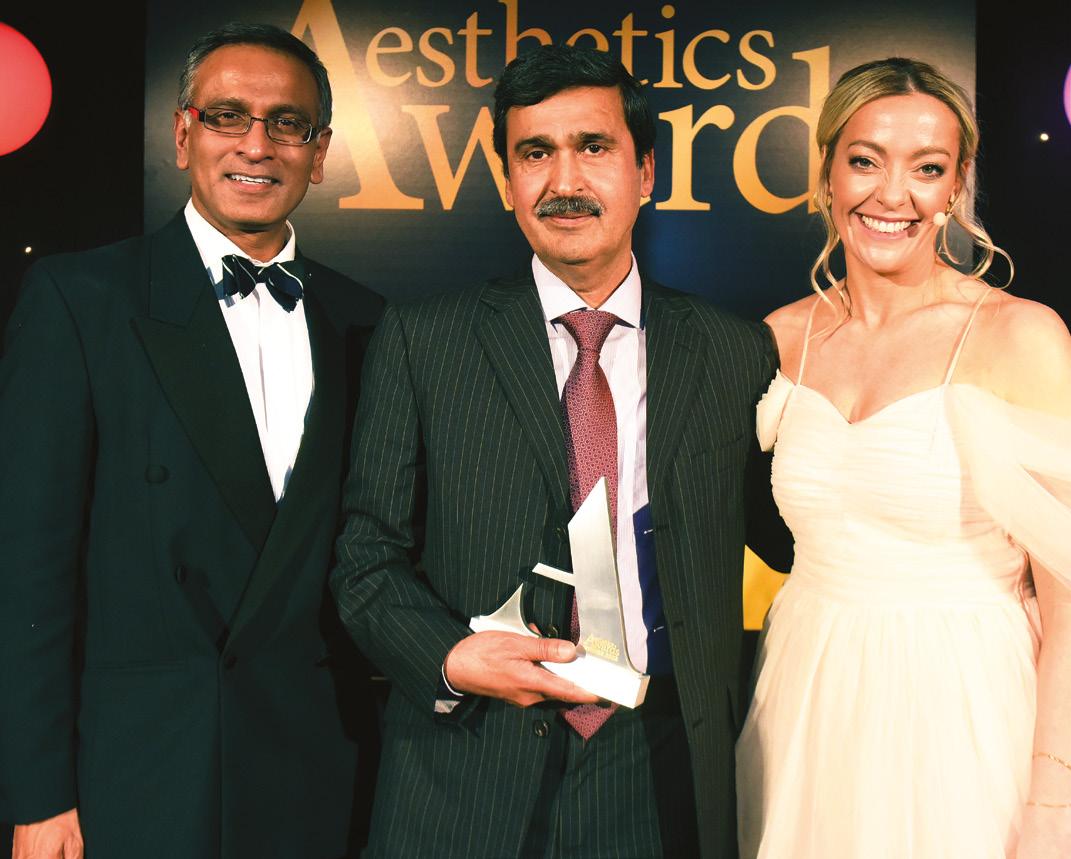
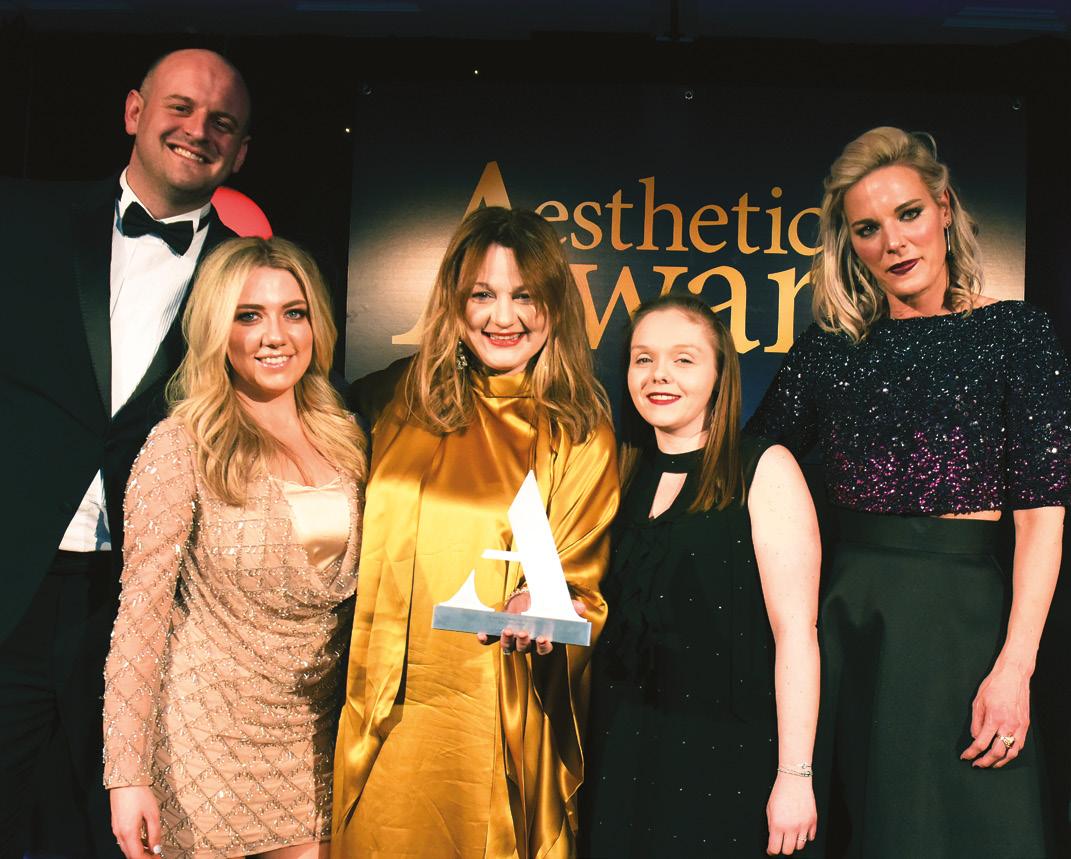
BEST SURGICAL RESULT

“I was so privileged to be a Finalist in this category, so to win is the best thing I could’ve ever hoped for. I am so proud of our surgery and of our team. It means so much to us to get an Aesthetics Award and to be here, and hopefully it helps to put Grimsby on the map!”

49 @aestheticsgroup @aestheticsjournaluk Aesthetics aestheticsjournal.com Aesthetics | April 2022
MR
HIGHLY COMMENDED: Mr Daniel Ezra
Eye Hospital) COMMENDED: Miss Elizabeth Hawkes (Cadogan Clinic) THE AESTHETIC TECHNOLOGY AWARD FOR BEST CLINIC LONDON WINNER: LONDON AESTHETIC MEDICINE HIGHLY COMMENDED: Vie Aesthetics COMMENDED: Adonia Medical Clinic FINALISTS: • Cadogan Clinic
Dr Leah Cosmetic Skin Clinics
Juve Medical and Aesthetics
LINIA Skin Clinic
London Professional Aesthetics
Premier Laser Clinic UK Ltd
The Clinic
Mayoni
WINNER:
MUHAMMAD RIAZ (ST HUGH’S HOSPITAL)
(Moorfields
•
•
•
•
•
•
by Dr
Dr Uliana Gout, clinic owner
the
face and neck lift
Mr Muhammed Riaz Patient before and after
‘R’
Before After
•
•
•
•
•
•
•
•
•
“Myself and the team have been working in this industry for about 15 years, and we’ve worked so hard, but winning an Award like this seemed impossible. It was like something I could never get my hands on, but today it’s happened and I’m so proud. Aesthetics is about making people’s lives happier and giving them the opportunity to do what they want to do – I truly love what we do and I would never change it.”
Dr Anna Hemming, clinic owner
PROFESSIONAL INITIATIVE OF
•
• MAP-IQ
“This is absolutely incredible – it’s amazing to see the work we do behind the scenes get recognised and all we want to do is set a great example to people and guide and shape the future for the journey of aesthetic medicine. For all the nurses out there, this is to setting standards and for best practice!”
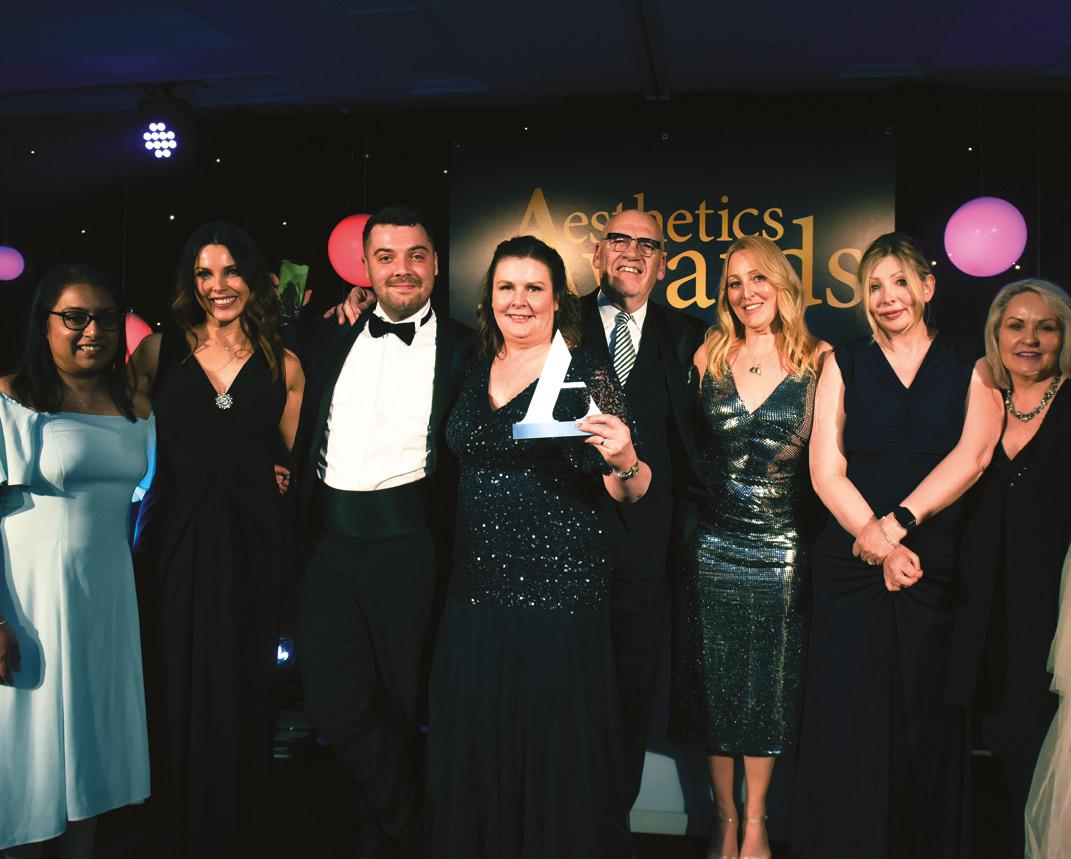
Jenny Pabila, board member

50 @aestheticsgroup @aestheticsjournaluk Aesthetics aestheticsjournal.com Aesthetics | April 2022
COMMENDED: Dr
COMMENDED: Yorkshire Skin Centre FINALISTS:
Ambra Aesthetics Clinic
THE RELIFE AWARD FOR BEST NEW CLINIC UK AND IRELAND WINNER: THAMES SKIN CLINIC HIGHLY
Yusra Clinic
•
Dr Grace Kelly Aesthetic Skin Clinic
Dr Joshua Harley Street Aesthetics
Harley Street Injectables
House of SAAB
Natali Kelly Clinic
Natural Nurse Aesthetics
Skinfluencer LTD
The Aesthetic Treatment Rooms
The Dr Jenni Clinic
THE BEAUTY UNCOVERED AWARD FOR
THE YEAR WINNER: BACN CODE OF PROFESSIONAL CONDUCT HIGHLY COMMENDED: BCAM 20th Anniversary Mindfulness and Wellbeing Initiative COMMENDED: iS Clinical Cancer Care Programme FINALISTS:
• British Society of Aesthetic Examiners and Assessors
In The Consulting Room by S-Thetics Clinic
“I just don’t know how to express how emotional I feel about winning tonight. It’s so amazing to be recognised and valued for the work we have done over the years. It means so much to get the credit for all the time and effort we’ve put in to helping our patients and transforming lives.”
Dr Sobia Syed, clinic owner
“This is an amazing Award to win, and we are so delighted to receive it. The Aesthetics Awards means so much to the industry, and it is the ultimate way for practitioners, clinics and companies to come together as a whole and really unite.”

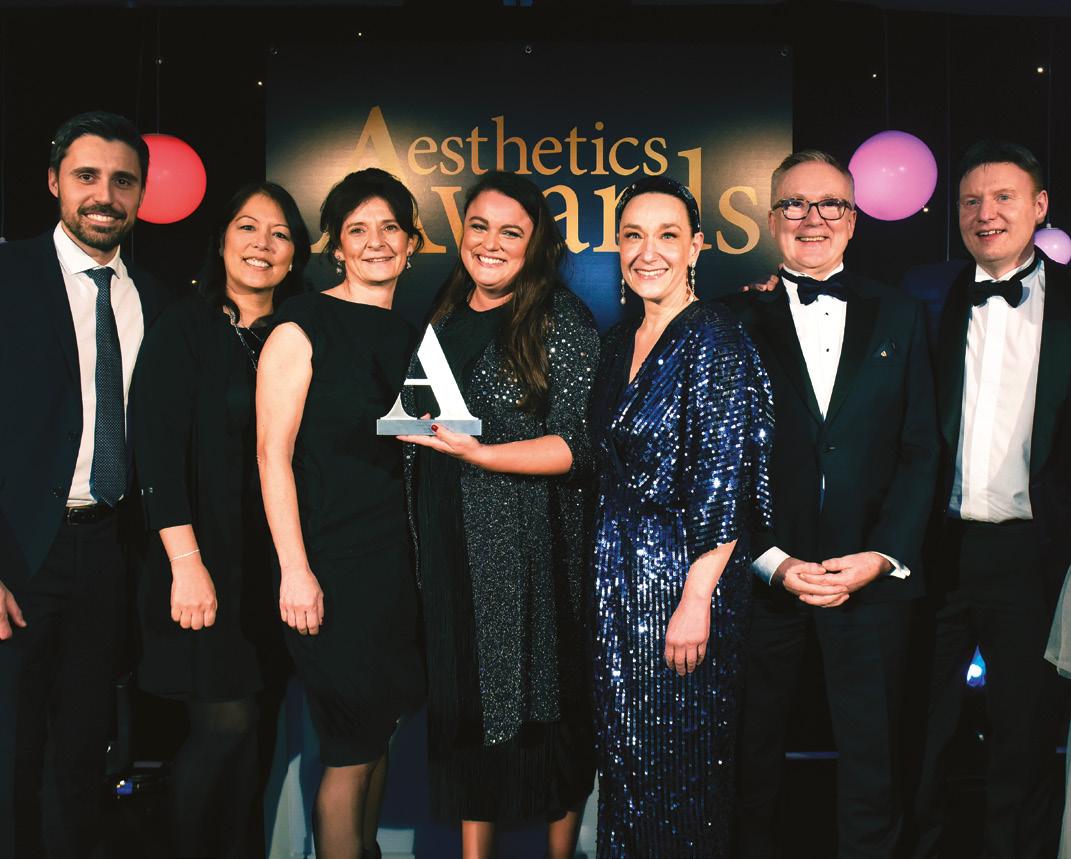
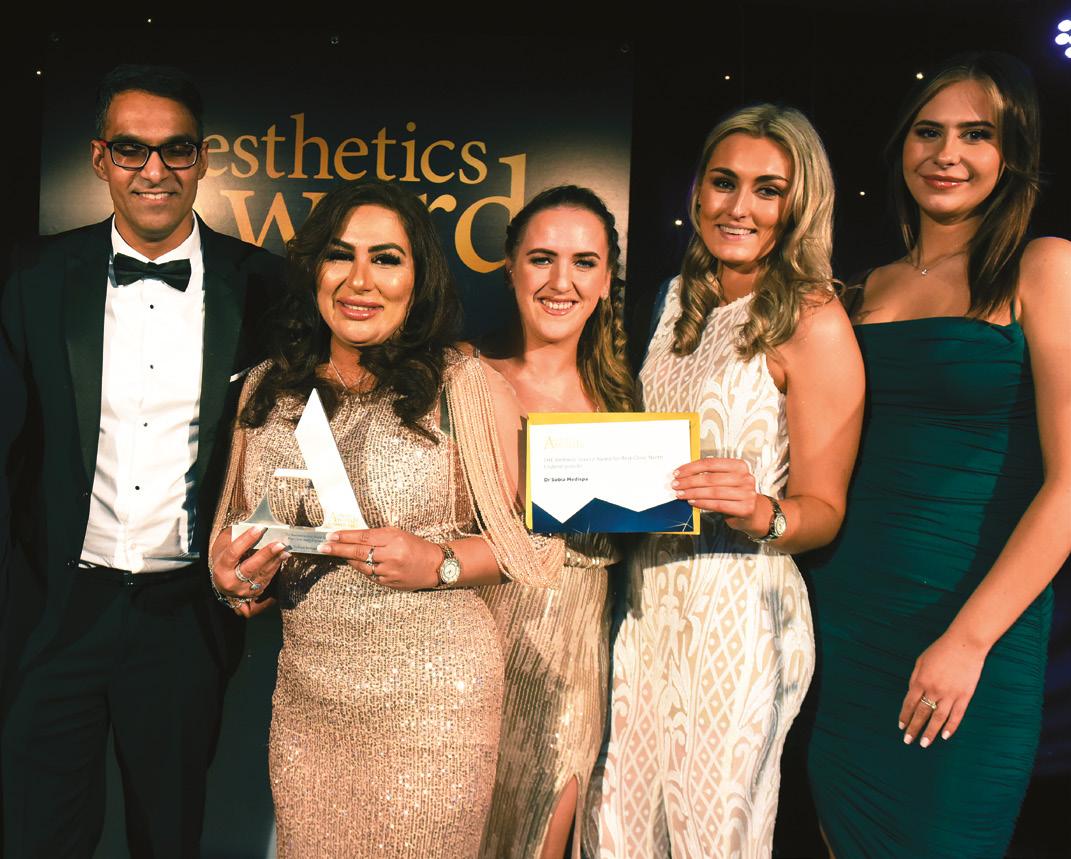
Iveta Vinkler, sales and marketing director

51 @aestheticsgroup @aestheticsjournaluk Aesthetics aestheticsjournal.com Aesthetics | April 2022 THE AESTHETICSOURCE AWARD FOR BEST CLINIC NORTH ENGLAND WINNER: DR SOBIA MEDISPA HIGHLY COMMENDED: Aesthetic Health COMMENDED: Lumiere Clinic and MySkyn Clinic Ltd FINALISTS: • Cliniva Medispa • DD Clinical • Discover Laser Ltd • Dr Bejma Medical Clinic • Dr Natalie Clinics • Novellus Aesthetics • Paragon Aesthetics • SDS REJUVENATE MEDISPA • SkinHQ • VL Aesthetics THE 5 SQUIRRELS AWARD FOR INJECTABLE PRODUCT OF THE YEAR WINNER: PROFHILO (HA-DERMA) HIGHLY COMMENDED: Restylane (Galderma) COMMENDED: Teosyal RHA (Teoxane UK) FINALISTS: • DESIRIAL
Laboratoires)
Juvéderm
Aesthetics)
Sculptra
(VIVACY
•
VYCROSS (Allergan
•
(Galderma) • WOW Fusion (WOW Facial)
•
•
•
•
•
•
•
•
•
•
•
•
•
•


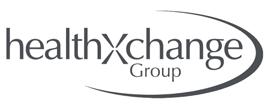
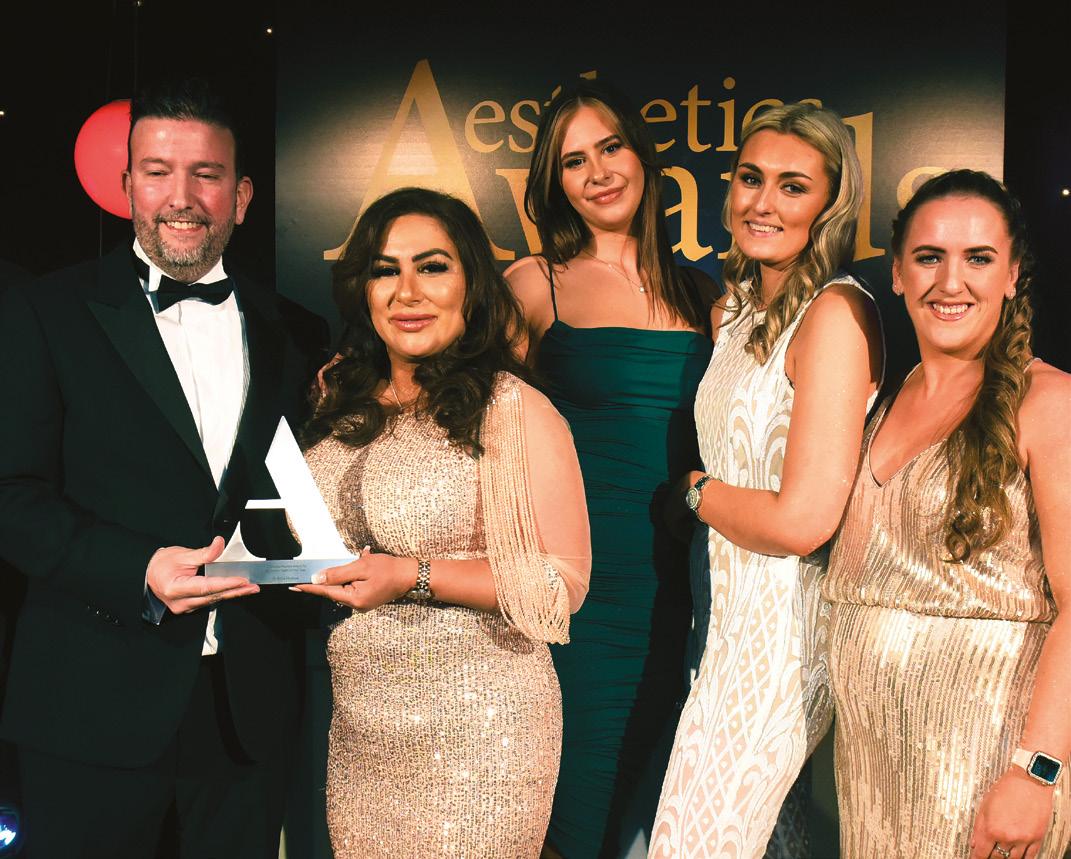
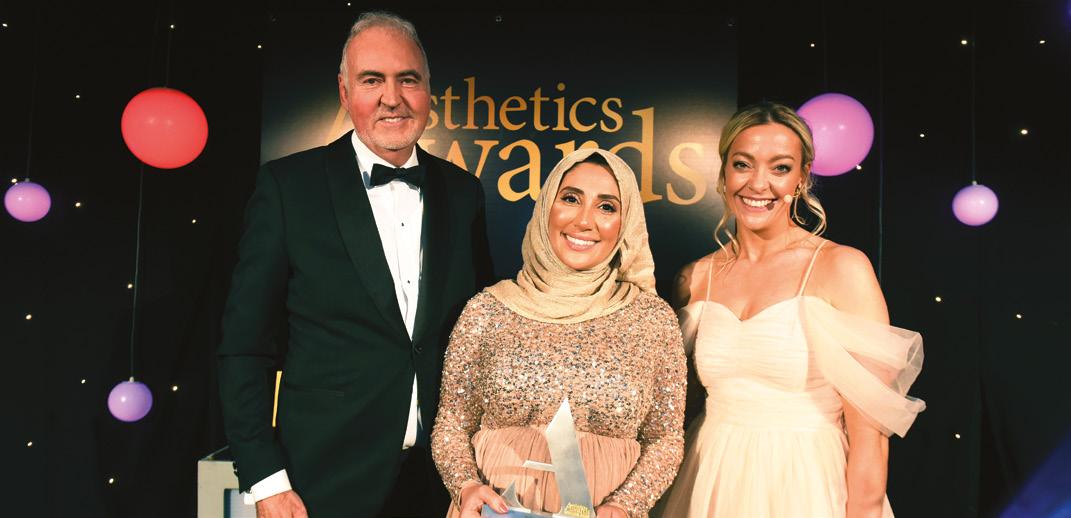
52 @aestheticsgroup @aestheticsjournaluk Aesthetics aestheticsjournal.com Aesthetics | April 2022
BEST
WINNER: DR
HIGHLY COMMENDED: Dr Ana Mansouri
& Co Aesthetics) and Dr Linea
COMMENDED: Dr Dev Patel
Skin Solutions) and Dr Vincent
THE HEALTHXCHANGE GROUP AWARD FOR
NON-SURGICAL RESULT
YUSRA AL-MUKHTAR (DR YUSRA CLINIC)
(Kat
Strachan (Dr Linea Medical)
(Perfect
Wong (Vindoc Aesthetics) FINALISTS:
Dr Rehanna Beckhurst (ifab clinic)
Dr Rory Boud (RKB by Dr Rory)
Dr Roxi Haasbroek (Fountain of Youth)
Dr Victoria Manning (River Aesthetics)
Dr Sindhu Siddiqi (No Filter Clinic London)
Dr Sonia Soopen (House of Beauty)
THE CROMA-PHARMA
CLINIC
OF THE YEAR WINNER: DR
MEDISPA HIGHLY COMMENDED: S-Thetics COMMENDED: River Aesthetics and Vie Aesthetics
Adonia Medical Clinic
Dr Rekha Tailor (Health & Aesthetics)
AWARD FOR
RECEPTION TEAM
SOBIA
FINALISTS: •
Bank Medispa
Cadogan Clinic
Clinetix
•
Cliniva Medispa
Hampton Clinic
Health & Aesthetics
Perfect Skin Solutions
LTD
• Skinfluencer
The Clinic by Dr Mayoni
incredible to have the work we do for our patients acknowledged
such a prestigious awards
Thank you to the judges for this honour and to my patient for allowing me to showcase her results!”
• Younique Aesthetic Clinic “It’s
at
ceremony.
Dr Yusra Al-Mukhtar
“This is absolutely amazing! It’s hard to express how happy I feel – getting the Award for Croma-Pharma Award for Best Reception team shows that the end-to-end experience for the patients is exquisite. The atmosphere tonight has been electric and everybody is just in a magical mood. It’s just brought a life back to the industry and it’s due to Aesthetics! Thank you.”
Dr Sobia Syed, clinic owner Hemifacial asymmetry and nasal deformity treated using Teosyal and Belotero dermal fillers.
“We are so privileged to be here. First off, it was a great honour to be nominated – to win, it’s even better. I just think the Aesthetics Awards are a great opportunity for any product or any device to come into the market and show what they can do. It’s really nice to see everyone again and just get involved with the atmosphere and share the love for the industry that we’re all in. Thank you Aesthetics!”

Susie Bennison, territory manager for BTL Aesthetics UK
Dr Ana Mansouri (Kat & Co Aesthetics)
Jacqueline Cooney (Beautiform Aesthetics) and Dr Paula Mann (Clinetix) FINALISTS:
• Dr Raquel Amado (Dr Raquel Skin and Medical Cosmetics Ltd)
• Dr Jemma Gewargis (Aesthetics by Dr Jemma)
• Dr Stephen Humble (True Medispa and Hedox Clinic)
• Dr Andrew Kane (Dr Andrew Kane Aesthetics)
• Dr Aileen McPhillips (The Skin Health Clinic)
• Mr Ashwin Soni (The Soni Clinic)
• Lauren Turner (Aesthetics by Lauren Turner)
• Dr Priya Verma (Phi Clinic)
• Dr Joshua Van Der Aa (Dr Joshua Harley Street Aesthetics)
“I am just completely lost for words! Thank you so much to everyone, in particular my amazing mentors, my team, and of course my incredible wife. This Aesthetics Award means so much to me, and I have loved being at the ceremony – it’s been such a great atmosphere and I’ve loved meeting everyone. It’s truly been amazing.”

PRODUCT
YEAR WINNER: EMSCULPT NEO
AESTHETICS) HIGHLY COMMENDED: Purifeyes
Restoration Ltd) COMMENDED: Profhilo Body and Body Kit
and Revanesse
Technologies) FINALISTS:
Definesse Threads
Eternal
Microcare)
MaiLi
Pharma)
The Pollution Shield 5PF
LEVY Switzerland)
HIGHLY
THE DIGITRX BY CHURCH PHARMACY AWARD FOR
INNOVATION OF THE
(BTL
(Face
(HA-Derma)
(Prollenium Medical
•
(RELIFE) •
(Luna
•
(Sinclair
•
(Dr
THE ALUMIERMD AWARD FOR RISING STAR OF THE YEAR WINNER: DR MANAV BAWA (TIME CLINIC MEDICAL AESTHETICS AND WELLNESS)
COMMENDED:
COMMENDED:
Dr Manav Bawa
@aestheticsgroup @aestheticsjournaluk Aesthetics aestheticsjournal.com Aesthetics | April 2022 53
THE CCR AWARD FOR CONSULTANT SURGEON OF THE YEAR
WINNER: MISS RACHNA MURTHY (FACE RESTORATION)
HIGHLY COMMENDED: Mrs Sabrina Shah-Desai (Perfect Eyes Ltd)
COMMENDED: Mr Ali Ghanem (The Aesthetic Regenerative Clinic)

FINALISTS:
• Mr Naveen Cavale (Real Plastic Surgery Ltd)
• Mr Sotirios Foutsizoglou (SFMedica)
• Miss Elizabeth Hawkes (Cadogan Clinic)
• Mr Adrian Richards (The Private Clinic)
“I am humbled, surprised and excited! It’s my first time attending the Awards and it’s been incredible to see everyone face-to-face. Winning is the icing on the cake. It’s really nice to be recognised, but coming to the Aesthetics Awards is more than that because it means you can come and enjoy time with people who share the same values as you and that you want to collaborate with.”
“I am completely overwhelmed. I’m just hugely grateful and I wasn’t expecting it at all. The Awards mean everything because they give us a chance to showcase what we can do and give you a chance to reflect on all your hard work, and to kind of share what you’re about – it gives you a chance to shine.
Winning is just the cherry on the cake!”
THE SPRINGPHARM AWARD FOR AESTHETIC NURSE PRACTITIONER OF THE YEAR

WINNER: JULIE SCOTT (FACIAL AESTHETICS LTD)
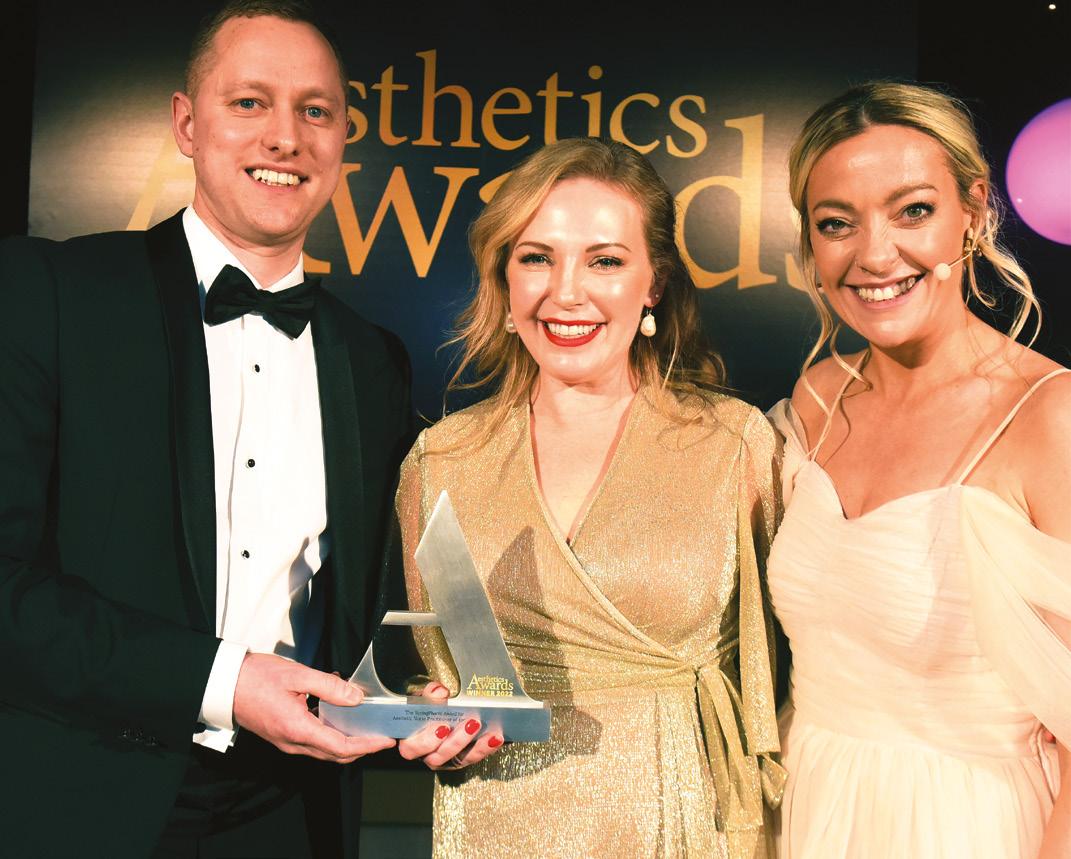
HIGHLY COMMENDED: Susan Young (Northern Institute for Facial Aesthetics)
COMMENDED: Jaqueline Naeini (Cliniva Medispa)
FINALISTS:
• Sara Cheeney (Pure Perfection)
• Yuliya Culley (Novello Skin)
• Alice Henshaw (Harley Street Injectables)
• Áine Larkin (Younique Aesthetic Clinic)
• Natali Kelly (Natali Kelly Clinic)
• Claudia McGloin (The New You Clinic)
• Lucy Millar-Hume (LA Face Consultants)
• Jenny O’Neill (Aspire Medical Group Ltd)



• Lisa Waring (FaceTherapyNI)

54 @aestheticsgroup @aestheticsjournaluk Aesthetics aestheticsjournal.com Aesthetics | April 2022
Julie Scott
Miss Rachna Murthy
THE GETHARLEY AWARD FOR MEDICAL AESTHETIC PRACTITIONER OF THE YEAR



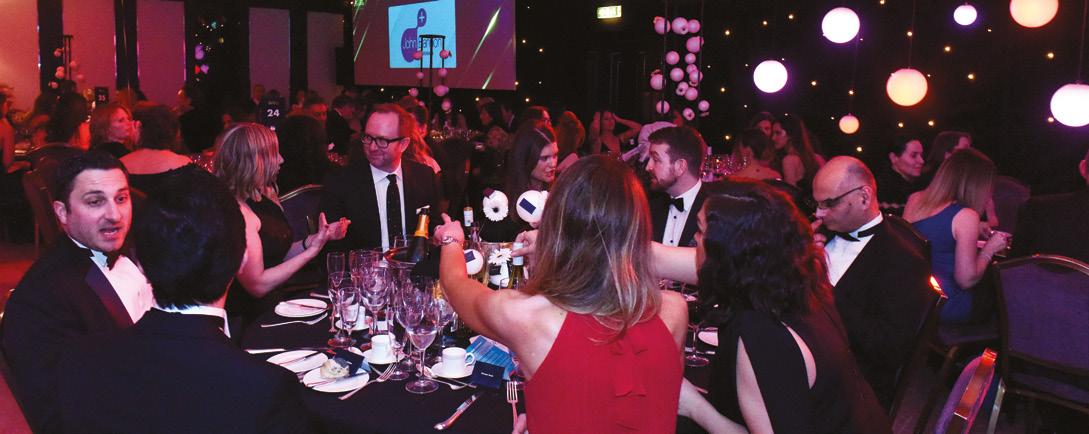
WINNER: MISS SHERINA BALARATNAM (S-THETICS)
COMMENDED:
FINALISTS:
• Dr Ifeoma Ejikeme (Adonia Medical Clinic)
• Dr Mayoni Gooneratne (The Clinic by Dr Mayoni)
• Dr Anna Hemming (Thames Skin Clinic)

• Dr Bhajvit Kaur (Health & Aesthetic Clinic)
• Dr Steven Land (Novellus Aesthetics)
• Dr Anjali Mahto (55 Harley Street)

• Dr Dev Patel (Perfect Skin Solutions)
• Dr Sophie Shotter (Illuminate Skin Clinic)

• Dr Sobia Syed (Dr Sobia Medispa)
“I’m absolutely over the moon. I just feel so proud – I’m speechless and so honoured to even be shortlisted amongst so many amazing colleagues, let alone win. This goes out to my amazing team for being a part of my world. This also goes to my mum and dad’s legacy because everything that I have done comes from them. So, this one’s for you, mum and dad.”
SEE YOU NEXT YEAR!
We thoroughly enjoyed celebrating with you all this year, and once again want to say a huge congratulations to our Winners and to all Finalists! Don’t forget to tag us on Instagram @aestheticsjournaluk in the photos of you and your team, and we’ll share them on our profile.
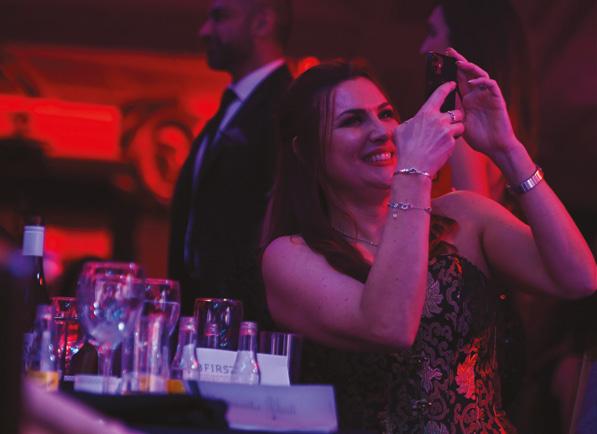
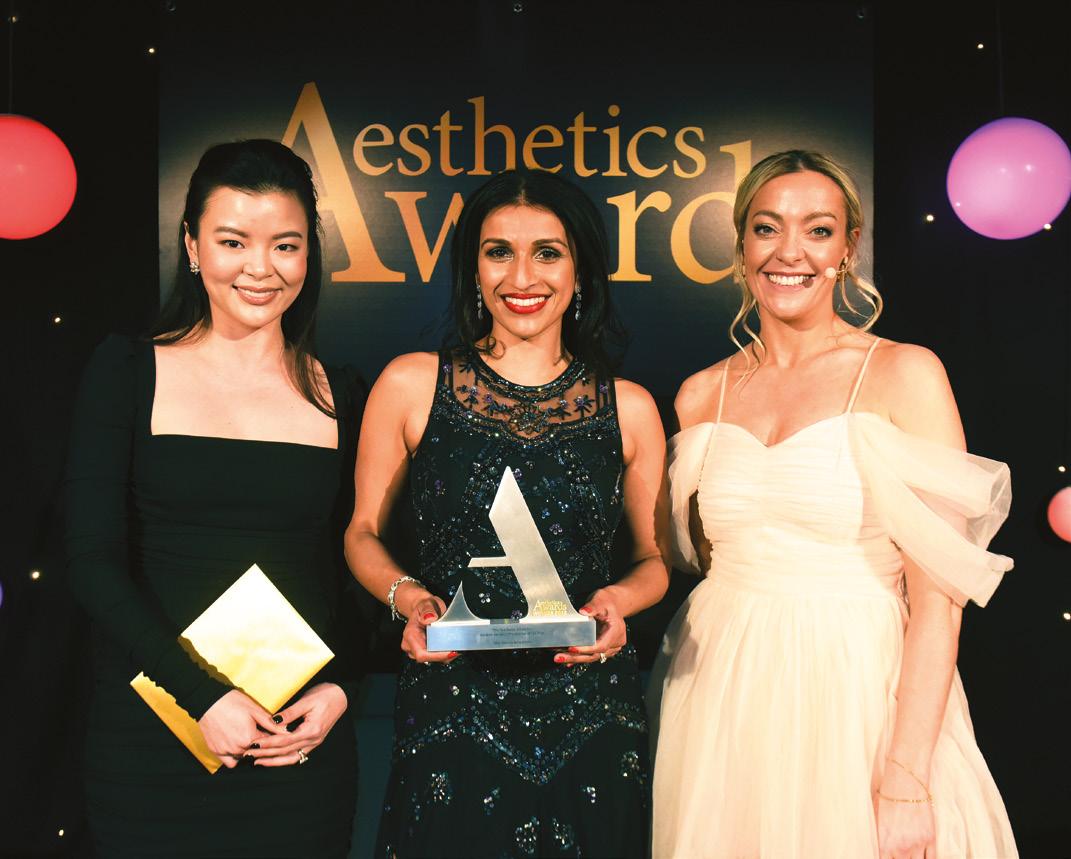
55 @aestheticsgroup @aestheticsjournaluk Aesthetics aestheticsjournal.com Aesthetics | April 2022
HIGHLY COMMENDED: Dr Uliana Gout (London Aesthetic Medicine)
Dr Beatriz Molina (Medikas Medispa) and Dr Emma Ravichandran (Clinetix)
ENTRY FOR THE AESTHETICS AWARDS 2023 OPENS IN JULY!
Miss Sherina Balaratnam
Learning in Layers Live: A
Full-face
Masterclass with REVANESSE®
Canadian powerhouse PROLLENIUM® brought facial anatomy to life at this year’s ACE conference, hosting a full-face masterclass with live demonstrations using the REVANESSE® collection
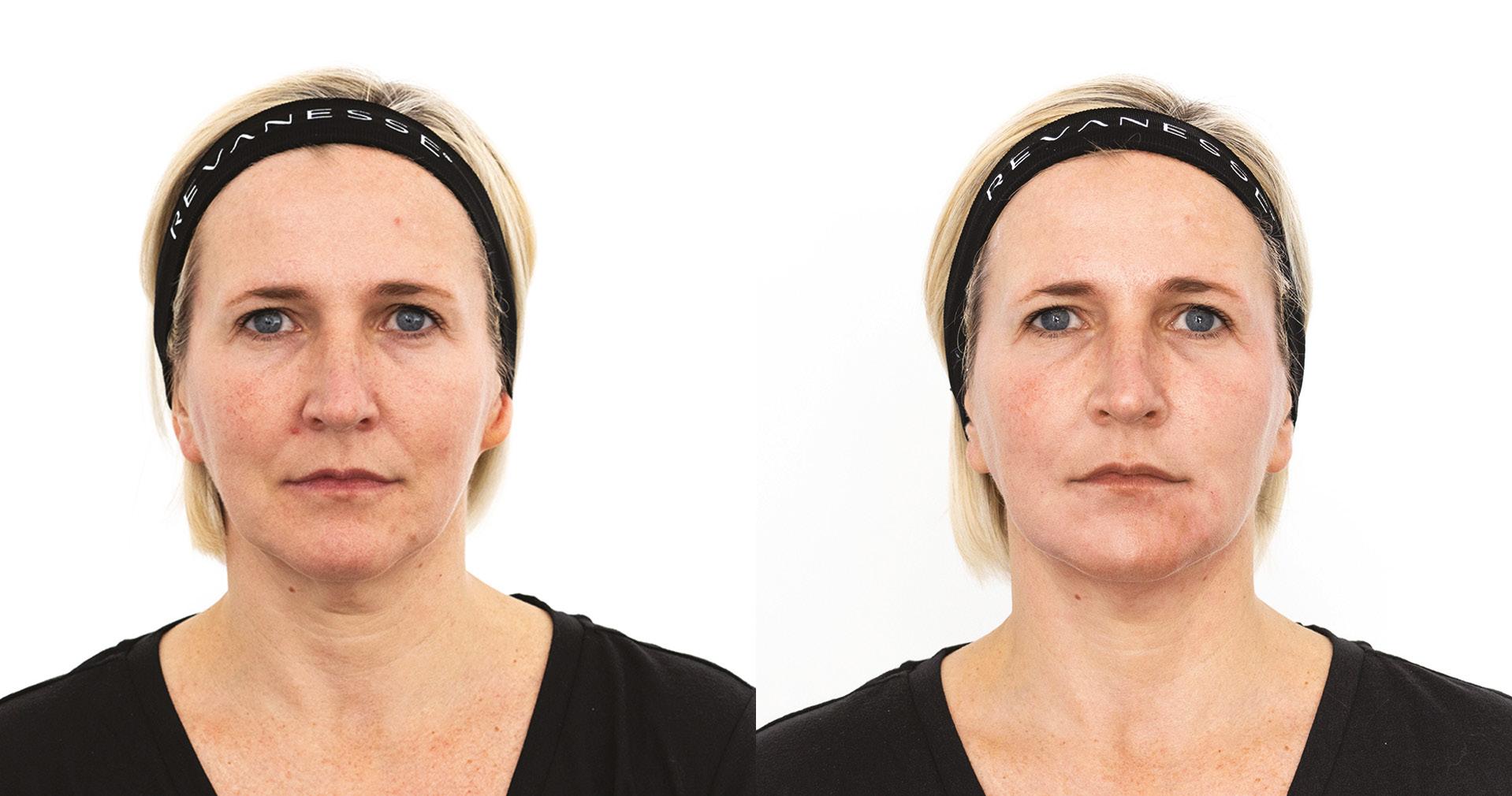
Following their explosive launch in the UK last year, the industry disrupting dermal filler made their ACE debut with an educational masterclass led by three expert speakers: consultant cleft and maxillofacial surgeon Mr Mark Devlin, Dr Johanna Ward, and aesthetic nurse Frances Turner Traill.
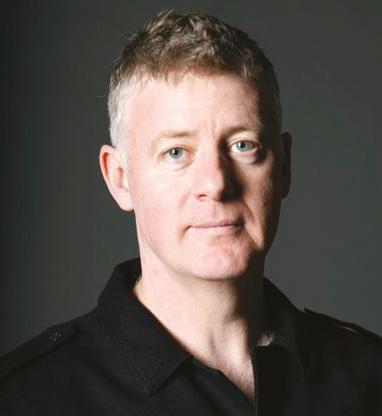
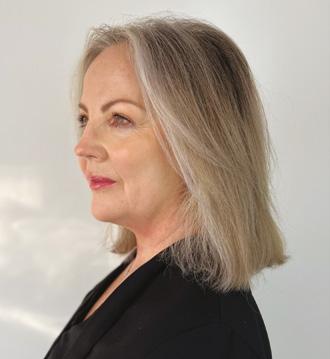


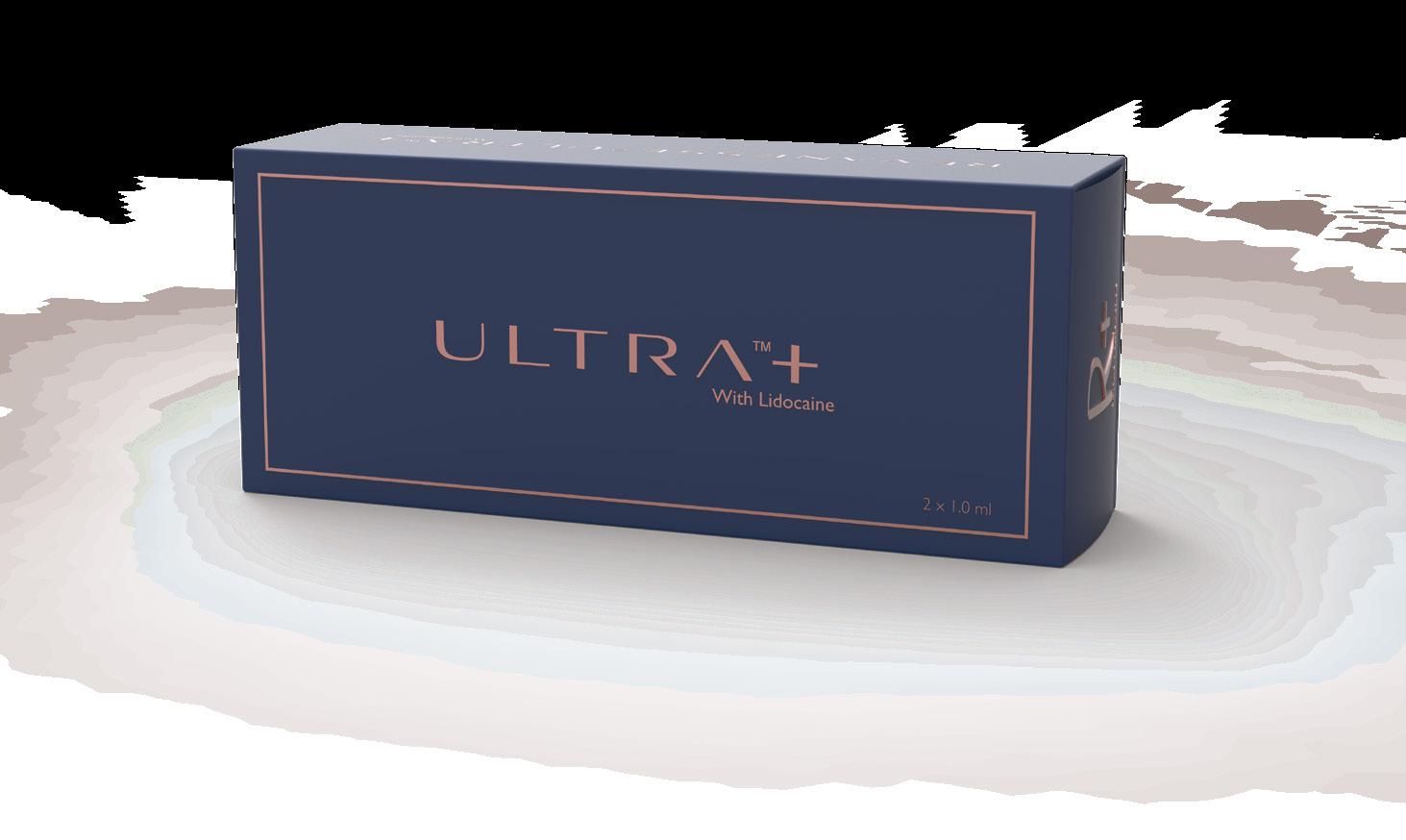
Divided into three sections, the ‘Learning in Layers’ Masterclass covered the anatomical changes and important landmarks of bone, fat pads and skin, discussing the injection techniques and product focus for each indication.
Before and after: case study one
Mr Devlin began the Masterclass by delving deep into bone resorption. With a very high lift capacity to volumise and give projection in the supra-periosteum, Dr Ward demonstrated how REVANESSE® SHAPETM and REVANESSE® CONTOURTM was the ideal combination to address the indication. Dr Ward demonstrated how the product had been used to correct temporal hollowing, reshape the patient’s jaw and significantly improve her jowls.
Aesthetics | April 2022 56 @aestheticsgroup @aestheticsjournaluk Aesthetics aestheticsjournal.com
Before After
Advertorial Prollenium
Mr Mark Devlin Dr Johanna Ward Frances Turner Traill
Before and after: case study two
The second section saw Mr Devlin provide insight into fat pad changes, covering cheeks, temples and nasolabial folds. Citing its capacity to lift and volumise in the deep dermis-to-subcutaneous layers, a combination of REVANESSE® SHAPETM and REVANESSE® ULTRATM was used by Dr Ward to show how the filler can been used to achieve fat pad volumisation for a full mid-face and jawline treatment.
Before and after: case study three
The final section focused on skin and muscle changes, bringing interesting facts on labial artery position to the fore. A case study of a lip augmentation with REVANESSE® KISSTM using a cannula, and a deep plane tear trough treatment were demonstrated to show how a soft and natural-looking result can be achieved on a younger patient.
OMGEE Live
Putting expertise into action, the three-part masterclass concluded with a live demonstration by Turner Traill of a full-face treatment using the OMGEE Curve, a mid-face treatment to create soft S shaped curves on the face. Typically, REVANESSE® SHAPETM is used periosteally in two to three boluses, depending on the patient and then REVANESSE® CONTOURTM is smoothly injected in retrograde linear threads with a cannula. The result lifts and shapes the mid-face, often improving other indications such as the tear trough and the lower face. Working alongside Turner Traill on a split screen, Mr Devlin indicated what was happening anatomically in the treatment areas. The rapt audience had the unique opportunity to ask questions throughout the injection process.
About REVANESSE®
One of only five companies to receive FDA approval, REVANESSE® has already become a big player in the US and Canada, where it has revolutionised the aesthetics market with its unique formula, commitment to high-quality ingredients, and innovative manufacturing technique.
The state-of-the-art dermal filler has spherical particles which give its key selling points of safety, performance and service. They are biocompatible due to their shape and low levels of modification, meaning reduced immune responses and inflammation. The spherical shape is developed to be accepted by the body and break down slowly over time, providing smooth, beautiful results that perform throughout the lifecycle of the skin.
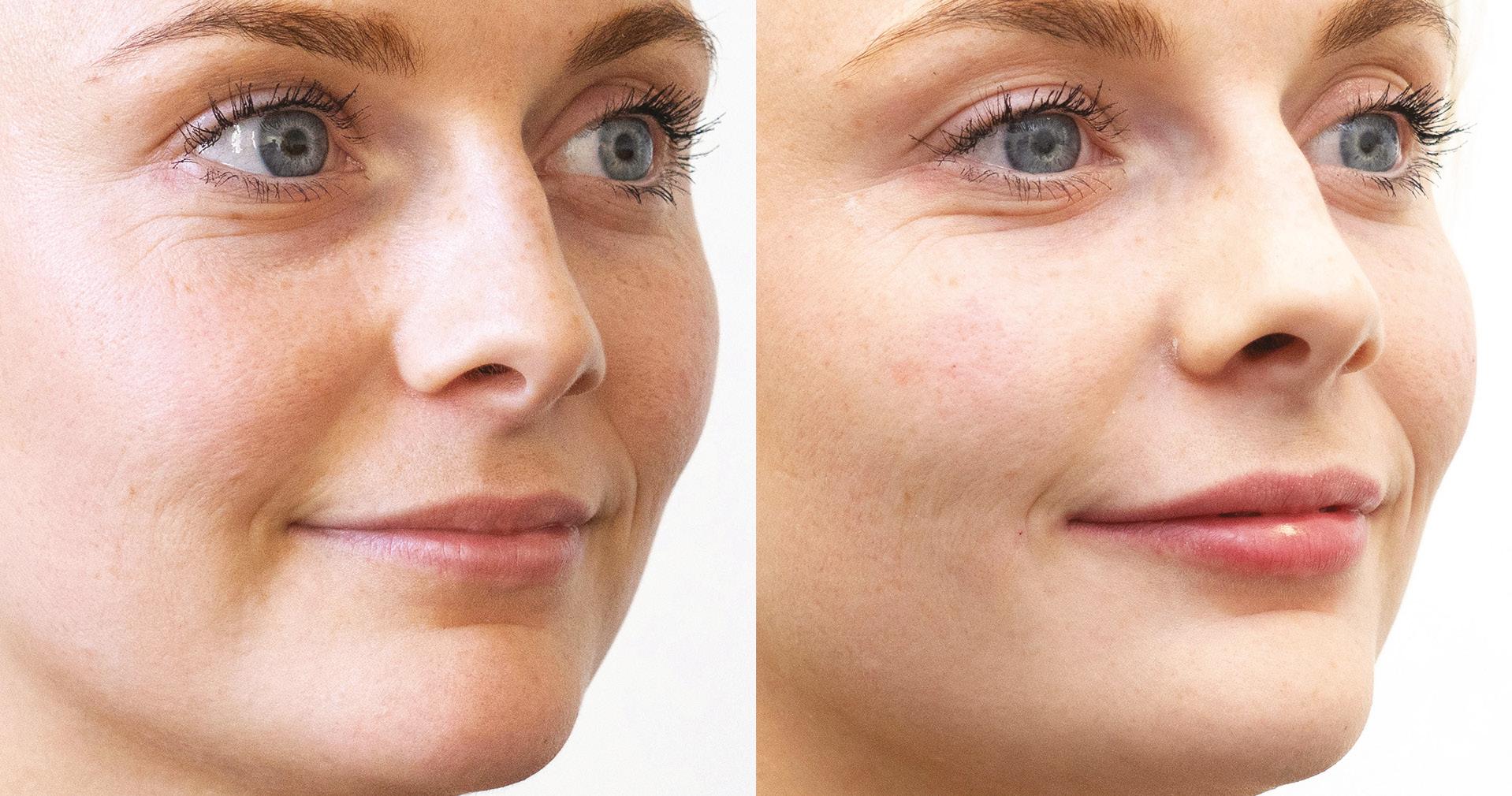
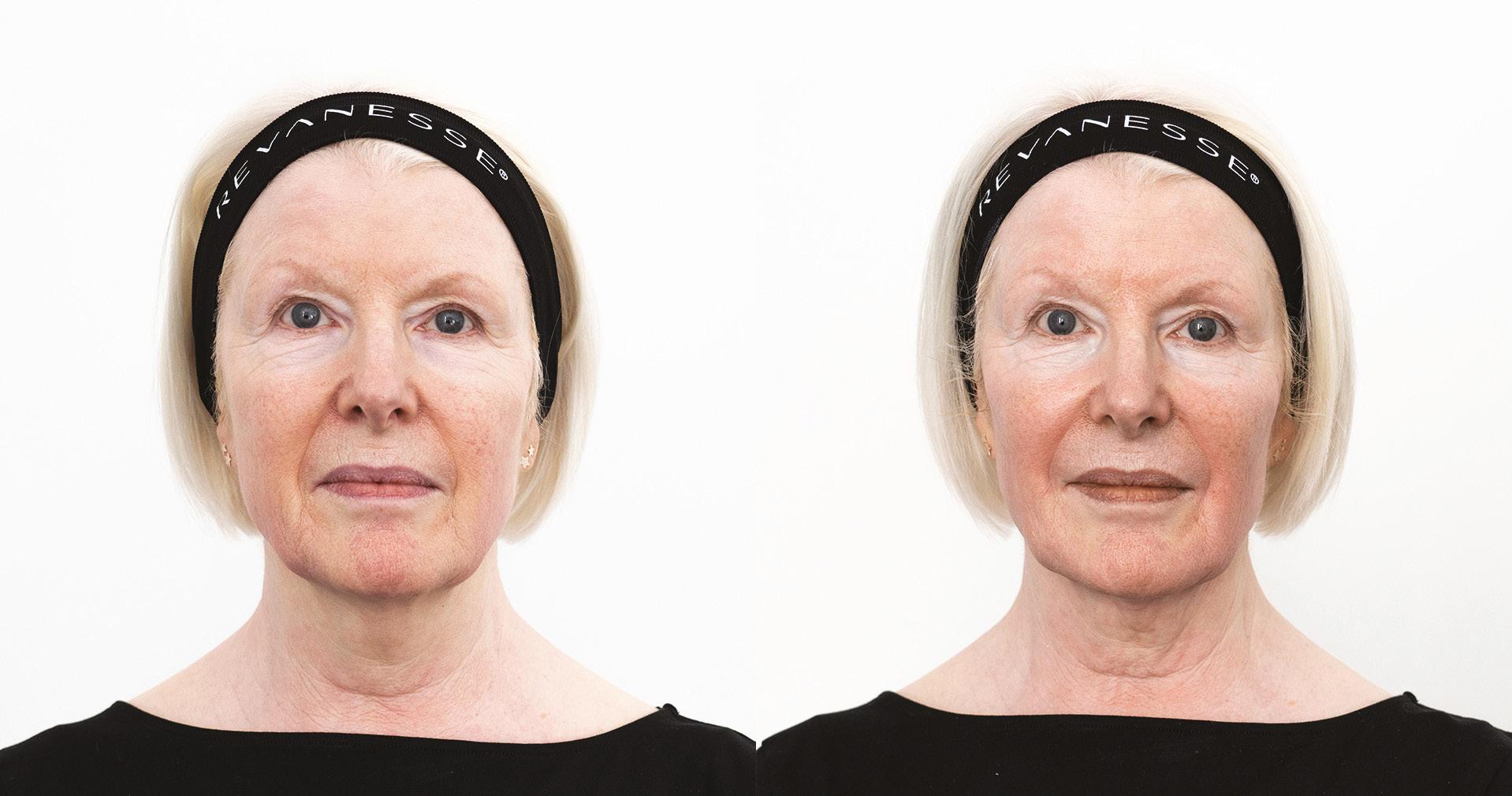
This advertorial was written and supplied by Prollenium
To find out more, please contact info@prollenium.co.uk
IG: @prolleniumuk FB: Prollenium UK
Aesthetics | April 2022 57 @aestheticsgroup @aestheticsjournaluk Aesthetics aestheticsjournal.com
Before Before After After Advertorial Prollenium


EXIT SHADOWS TAKE CONTROL OF UNDER-EYE HOLLOWS AND MASTER TEAR TROUGH TREATMENTS ENTER LIGHT 1. Nikolis et al. A Randomized, Crossover-Controlled Evaluator-Blinded Trial Evaluating Cannula - Vs Needle-Assisted Hyaluronic Acid Injections for Infraorbital Deformities. ASJ 7-2021. 2. Data on file (MA-49047). Expert recommendations on the use of hyaluronic acid filler for tear trough rejuvenation, 2021. 3. Data on file (MA-39680). Global 50 Million Restylane Treatments, 2021 (Restylane 25 years valid from September 30, 2021). 94.3% – would do the treatment again1 – would recommend the treatment to a friend1 TARGETED. RECOMMENDED. TRUSTED.1-3 Restylane and Galderma are registered trademarks. UKI-RES-2200009 DOP February 2022 #EnterLight with us on Instagram and follow @Galderma.AestheticsUK
Using HA as a Skin Booster
When a patient presents with skin characterised by fine wrinkles, reduced elasticity, or that is dry or rough, one treatment to consider is the application of a skin booster. The injection of small doses of a fine hyaluronic acid (HA) filler into the dermis can give a universal improvement in skin quality by maintaining skin hydration and reducing signs of ageing, without adding volume or lift.1
However, using HA fillers as a skin booster is quite distinct from its use in other more targeted treatments.2,3 As practitioners, it is important to ensure that we are familiar with the science, suitable products, application techniques and patient selection for skin boosting treatment so that we can offer this holistic approach to firmer, tighter skin.
Hyaluronic acid and the skin
Around half of the body’s HA is found in the skin and is produced by both fibroblasts and keratinocytes.2 HA is a non-sulfated glycosaminoglycan that is found in high levels in the dermis, epidermis and extracellular matrix (ECM).2,4 Structurally, it is a simple linear polymer which contains many repetitions of a disaccharide, creating a large hydrophilic molecule. In fact, HA can hold water molecules up to 1,000 times its weight.5
Levels of HA decrease in ageing skin and along with fragmentation of the ECM, disorganisation of dermal elastic fibres and reduced collagen production, this can result in loss of elasticity, the appearance of fine lines, thinning skin and dryness.2,3 HA fillers use the hydrating properties of HA to restore turgor and improve texture and elasticity to the skin.1,2,4 The hydrophilic properties of HA mean that when injected into the dermis, HA introduces tension into the extracellular matrix, which stretches protein fibres and stimulates fibroblasts which in turn may stimulate increased collagen production.2,6 The clinical manifestation of this is softer and firmer skin.1
HA as a skin booster vs targeted treatments
Many dermal fillers are inserted beneath the skin in the fat layers, supraperiosteal layer or even the retaining ligaments to treat deeper wrinkles, add volume, lift or to contour 1,2,7 Others are injected into the dermis.2,7 Of these, some are injected in a targeted way to treat fine lines or wrinkles while those that HA fillers used to give a universal boost to the skin are injected across a larger area using a series of micropunctures.1,2 Not only Is the application different
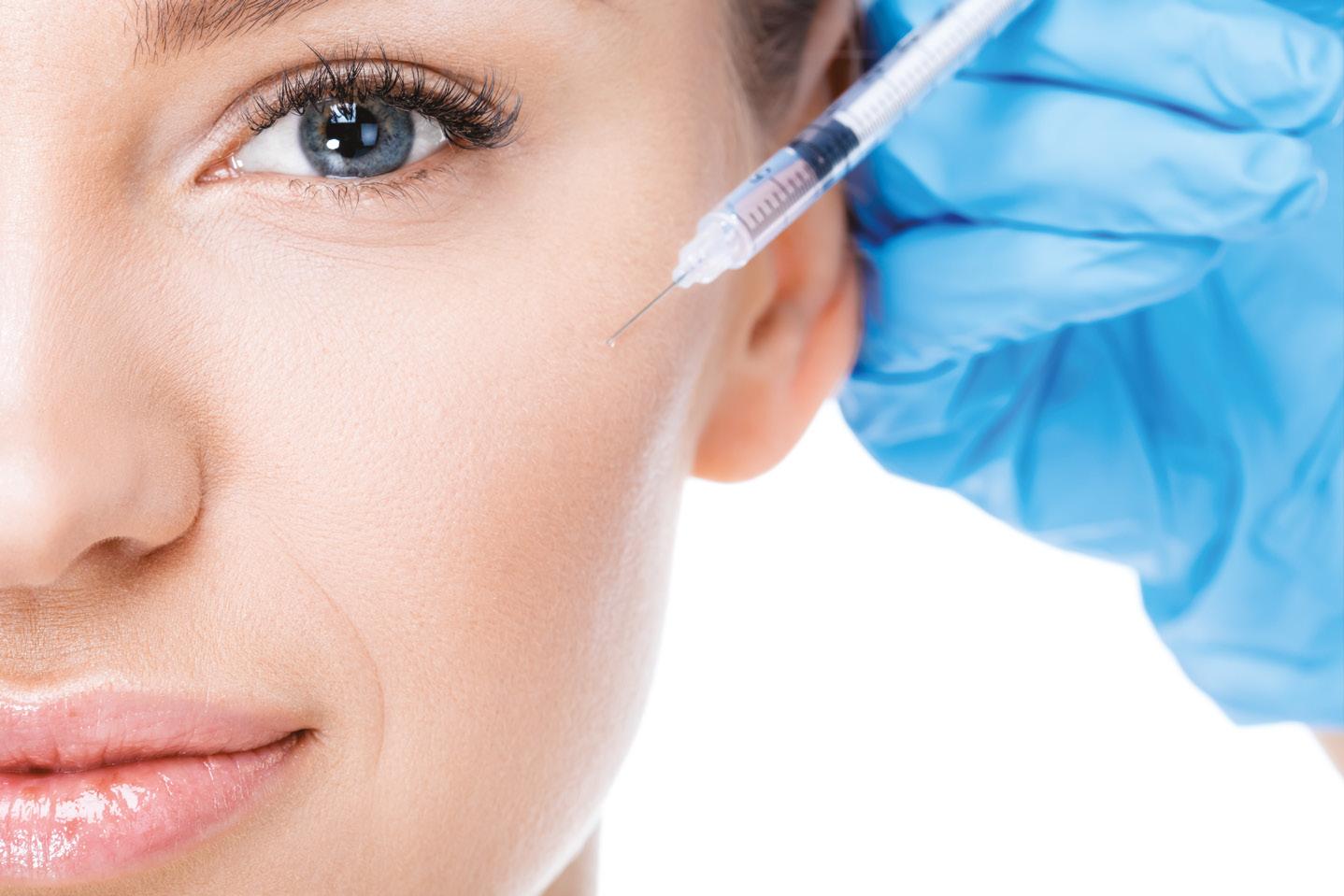
when administering a universal skin boost, but specific products should be used which have developed for the purpose.1-3 There are several available in the UK including: Belotero Revive, Juvéderm, Profhilo, Restylane Vital and Vital Light and Teosyal Puresense Redensity.1,2,8-11 It should be noted that the Restylane products have the brand name SkinBoosters but the other products listed here are also designed to boost the skin. Skin boosting products differ in terms of the level at which they are injected in the dermis and details should be checked for each product prior to use.1
One of the key differences between skin boosting injectable products and other HA fillers is the degree to which they are cross-linked. A cross-linked structure is formed by binding together two chains of HA, commonly using the molecule 1.4-butanediol diglycidyl ether (BDDE).1 This creates a three-dimensional network which results in a firm gel that retains its shape.1
The greater the level of cross-linking, the denser and firmer the gel.1 Unlike other HA injectables, those developed as skin boosters either have very low levels of cross-linking or are not cross-linked at all.2 Elasticity is determined by cross-linking and skin boosting fillers that have no or few cross-links have low elasticity.2,12
However, skin boosting fillers have been shown to restore some elasticity to the skin which may be due to the stimulation of collagen production by the HA itself.1,13 While cross-linking is the main determinant of the mechanical properties of any given filler, HA concentration and particle size also play a key role.2,7,14,15
During the manufacturing process, the cross-linked or non-cross-linked gel is further refined to produce a filler with properties appropriate to its intended use.15,16 The cohesivity of fillers, the internal adhesion between the filler particles, depends on HA concentration as well as the degree and type of cross-linking. Although the degree of HA concentration varies between products, skin boosting fillers are manufactured to have low cohesivity.1,3 They also have low viscosity.1,2 Viscosity is determined by the size and weight of the HA particles and particle size tends to be small in this type of filler.1,12 These properties are suited to the way in which skin boosting fillers are used.1,2,17 Due to their superficial injection, skin boosters are required to be softer and smoother than a filler that is injected more deeply.2 They also require the capacity to be moulded so that an even spread can be achieved and the
@aestheticsgroup @aestheticsjournaluk Aesthetics aestheticsjournal.com Reproduced from Aesthetics | Volume 9/Issue 5 - Apirl 2022
Dr Ahmed El-Houssieny explores how microinjections of hyaluronic acid fillers can boost skin quality
1cm/1.5cm
1.5cm
1.5cm
Figure 1: Micropunctures with injection sites 1-1.5cm apart
formation of any lumps avoided.2,17 Smaller particles can retain more water than larger particles and can hydrate the skin without adding significant volume.1,18 Small particle skin boosting HA fillers have been shown to be effective in hydrating the skin of the face, neck and hands.17
Cross-linking in HA fillers also has a stabilising effect and improves longevity; HA that has not been cross-linked is reported to last for a shorter period than cross-linked HA fillers, with a half-life of a few weeks after injection.1,12 However, some skin boosting HA fillers have a degree of cross-linking while others improve the duration of their hydrating effect through the inclusion of a polysaccharide such as glycerol or mannitol.1
Using skin boosting HA injectables
Skin boosters can be used on all areas of the face, including the chin and periocular areas as well as on the neck, décolletage, hands, arms and knees.1 A pre-treatment photograph is a useful way of demonstrating the results of skin boosting treatment to the patient over time, and should be taken before treatment commences.

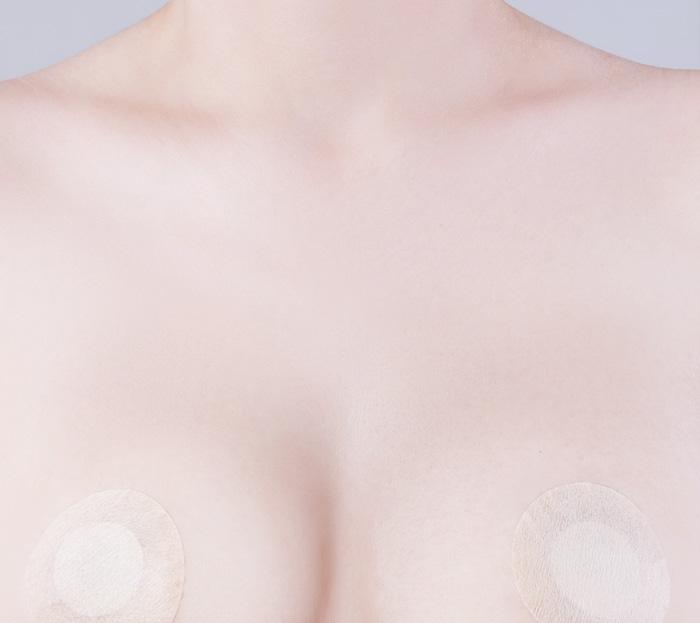
A plan of application should be drawn up with uniformly distributed injection points that cover the whole area to be treated.1
Small aliquots of product are administered: approximately 0.02ml per puncture has been used effectively in facial injections.1,13 Maximal volumes of 0.5ml per cheek, 0.3ml for each side of the neck, and 0.5ml for each hand were used effectively in another study of 20 subjects using the same product.17 Another author suggests levels of 1ml per cheek, and 1-2ml for the forehead or neck with a different filler product.19 The product dosing information should be checked prior to injection. These amounts may differ between
Figure 2: Retrograde technique with injection sites 1.5cm apart
products and product dosing information should be checked prior to injection. HA fillers for boosting skin are designed to be injected into the dermis.2 Non-cross-linked (also called non-stabilised) fillers should be injected in the superficial dermis, whereas those with low cross-linking (stabilised) into the mid- or deep dermis.1 There are further differences in approach between stabilised and non-stabilised fillers.1 For non-stabilised HA fillers, injection into the superficial dermis with a needle is recommended and should be administered as a series of punctures.1 This should leave translucent micropapules on the surface of the skin (Figure 1). These are part of the treatment process and will settle after five to seven days.1 With stabilised fillers, the appearance of such papules is considered a side effect and should be avoided by ensuring the filler is injected deeper in the dermis.1,19 With cross-linked skin boosters, the practitioner has a choice of serial punctures or retroinjection with the latter reported to be safer, easier to control and to avoid the risk of papule formation.1 Cannula use is also an option
Figure 3: Injection with a microcannula
with stabilised fillers and can be used in all facial areas but is particularly useful where the skin is very thin, such as in the periorbital area.1 A 30 to 27 gauge cannula injection is appropriate for use in the face and a 25 to 27 gauge cannula for injection in the neck and neckline area.1,3 Punctures or retroinjection points should be 1-1.5cm apart (Figure 2) and these different approaches are shown in Figure 1 and Figure 2 1,19 With a cannula, the dose is still small but the fanning technique is used to distribute the filler from a single entry point (Figure 3).1,19
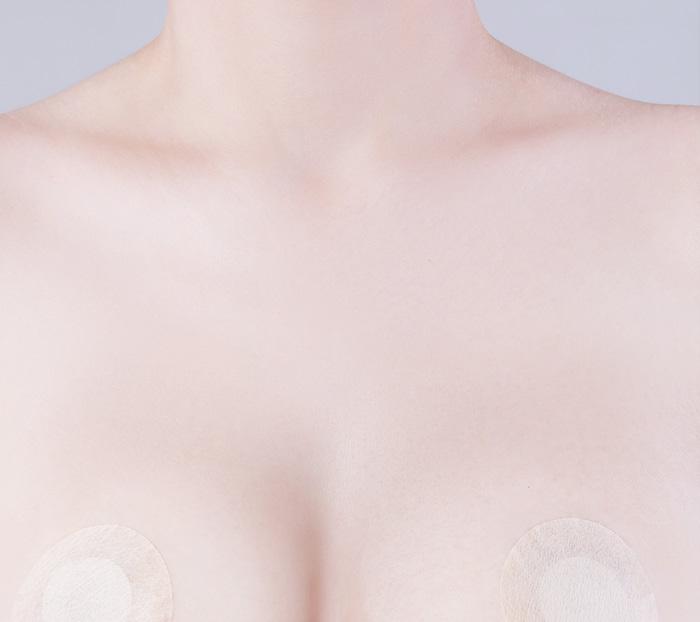
Outcomes
A regimen of three skin booster treatment sessions four weeks apart in the face, neck and hands has been shown to improve skin elasticity, roughness and skin hydration during a follow-up period of three months.13,17 A study involving 30 people aged 35-65 with a longer follow-up period found that the effects of this regimen lasted for up to 36 weeks in the face and hands.20 Two further studies, involving 131 and 40 participants respectively, with a different regimen and
Cannula use is an option with stabilised fillers and can be used in all facial areas but is particularly useful where the skin is very thin, such as in the periorbital area
@aestheticsgroup @aestheticsjournaluk Aesthetics aestheticsjournal.com Reproduced from Aesthetics | Volume 9/Issue 5 - Apirl 2022
using a different skin boosting HA filler also show improvement in skin texture and hydration lasting up to nine months in the face and hands.21,22
Safety considerations and adverse effects
Treatment with skin boosting injectable products is reported to be safe and well-tolerated with adverse effects reported to be mild to moderate and temporary.1,22 Erythema and bruising commonly occur at the injection site and usually resolve within one to two weeks.1 The use of cold or ice packs at the injection site post-treatment can minimise these side effects.1 Pain at the injection site can be mitigated by the use of anaesthesia prior to injection and the application of ice bags to the skin immediately prior to each puncture can be helpful.1 Massaging or moulding the injected area with a cotton stick after injection can help distribute the filler and to minimise any lumps.1,19 Persistent lumps should be treated with hyaluronidase.1 Vascular occlusion is not common in skin boosting treatment due to the small amounts of filler used per puncture, however, aspiration and checking for any reflux of blood are sensible precautions.1
Patient selection
HA fillers of any kind, including skin boosters, are contraindicated in pregnant and breastfeeding women due to a paucity of safety data.3,23 Equally, they should not be used in patients undergoing chemotherapy due to the effect on the immune system, nor in patients with active acne due to the link between acne, inflammation and infection.1,3,23 Active infections close to the treatment site can be exacerbated by skin filler or can cause complications by invading the filler site, therefore treatment with fillers should be avoided.1,24
A 2021 updated guideline on safety in facial filler practice recommends that fillers are avoided in many active autoimmune diseases because of potential late-onset immune-
mediated reactions.23 This is a complex area with a diversity of professional opinion.25
Patients who are taking anticoagulant medication may be more prone to bruising and should stop taking their medication before treatment with HA fillers if it is acceptable in terms of risk for them to do so.3,26 Use of a cannula to administer the filler can minimise bruising in these patients.1
Patients with body dysmorphic disorder (BDD) can have unrealistic expectations of aesthetic treatment.19 These patients may not benefit from aesthetic treatments and should be referred for further evaluation if BDD is suspected.23,27
A good treatment option
HA fillers that can be administered through superficial microinjections have been shown to restore smoothness to skin and to improve elasticity by stimulating de novo collagen production. They offer universal improvement of skin quality and levels of hydration to patients who are seeking a natural appearance but with noticeable reduction in signs of ageing.
Dr Ahmed El-Houssieny is a trained anaesthetist with a passion for aesthetics. He is an honorary lecturer at the University of Chester and an education provider on cosmetic procedures. Dr El-Houssieny is registered with the General Medical Council, as well as being a member of the British College of Aesthetic Medicine. Qual: MBBCH

REFERENCES
1. Ypiranga S, Fonseca R. Hyaluronic acid for skin booster on the face. In: Issa MCA, Tamura B, eds. Botulinum toxins, fillers and related substances. Springer International Publishing, Cham, Switzerland. 2019.
2. Kapoor KM, Saputra DI, Porter CE, et al. Treating ageing changes of facial anatomical layers with hyaluronic acid fillers. Clin Cosmet Investig Dermatol 2021;14:1105–1118.
3. de Oliveira GB, Simão JC. Hyaluronic acid for Skinbooster on the neck and v shape neckline area. In: Issa MCA, Tamura B, eds. Botulinum toxins, fillers and related substances. Springer International Publishing, Cham, Switzerland. 2019.
4. Maytin EV. Hyaluronan: More than just a wrinkle filler. Glycobiology 2016;26(6):553–559.
5. Cowman MK, Matsuoka S. Experimental approaches to hyaluronan structure. Carbohydrate Research 2005;340(5): 791–809.
6. Wang F, Garza LA, Kang S, et al. In vivo stimulation of de
novo collagen production caused by cross-linked HA dermal filler injections in photodamaged human skin. Arch Dermatol 2007;143:155–163.
7. Sundaram H, Cassuto D. Biophysical characteristics of hyaluronic acid soft-tissue fillers and their relevance to aesthetic applications. Plast Reconstr Surg 2013;132:5S–21S.
8. Q-Med, Galderma. Restylane Patient Information leaflet. Q-Med, Galderma, Watford, Herts, UK. Accessed March 2022. <https://www.mysurgerywebsite.co.uk/website/W95024/files/ Restylane_PIL.pdf>
9. Allergan. Juvéderm Volite. Accessed March 2022. <https://volite.juvederm.co.uk/?_ ga=2.216266326.1733383205.1646752528153827583.1646752528
10. Teoxane. Teosyal products. <https://www.teoxane.com/en/ dermal-fillers/teosyalr-products>
11. Merz. Merz Launches New Belotero® Revive Dermal Filler. <https://www.merz.com/blog/news/merz-launches-newbelotero-revive-dermal-filler/>
12. Issa MCA. My personal experience with fillers. In: Issa MCA, Tamura B, eds. Botulinum toxins, fillers and related substances. Springer International Publishing, Cham, Switzerland. 2019.
13. Kerscher M, Bayrhammer J, Reuther T. Rejuvenating influence of a stabilized HA–based gel of nonanimal origin on facial skin ageing. Dermatol Surg 2008;34:720–726.
14. Rohrich RJ, Bartlett EL, Dayan E. Practical Approach and Safety of Hyaluronic Acid Fillers. Plast Reconstr Surg Glob Open 2019;7(6):e2172. Published 2019 Jun 14.
15. Fagien S, Bertucci V, von Grote E, Mashburn JH. Rheologic and physicochemical properties used to differentiate injectable hyaluronic acid filler products. Plast Reconstr Surg 2019;143(4):707e–720e.
16. Ave MN, Issa MCA. Hyaluronic acid dermal filler: physical properties and its indications. In: Issa MCA, Tamura B, eds. Botulinum toxins, fillers and related substances. Springer International Publishing, Cham, Switzerland. 2019.
17. Nikolis A, Enright KM. Evaluating the role of small particle hyaluronic acid fillers using micro-droplet technique in the face, neck and hands: a retrospective chart review. Clin Cosmet Investig Dermatol 2018 Oct 10;11:467–475.
18. Succi IB, DaSilva RT, Orofino-Costa R. Rejuvenation of periorbital area: treatment with an injectable Non-animal noncrosslinked glycerol added HA preparation. Dermatol Surg 2012;38:192–198.
19. Peng JH, Peng PH. HA Filler injection and skin quality-literature minireview and injection techniques. Indian J Plast Surg 2020 Aug;53(2):198–206.
20. Streker M, Reuther T, Krueger N, Kerscher M. Stabilized hyaluronic acid-based gel of non-animal origin for skin rejuvenation: face, hand, and décolletage. J Drugs Dermatol 2013 Sep;12(9):990–4.
21. Cavallini M, Papagni M, Ryder TJ, Patalano M. Skin quality improvement with vyc-12, a new injectable hyaluronic acid: objective results using digital analysis. Dermatol Surg 2019 Dec;45(12):1598–1604.
22. Niforos F, Ogilvie P, Cavallini M, et al. VYC-12 Injectable gel is safe and effective for improvement of facial skin topography: a prospective study. Clin Cosmet Investig Dermatol 2019 Oct 24;12:791–798.
23. Heydenrych I, De Boulle K, Kapoor KM, Bertossi D. The 10-point plan 2021: updated concepts for improved procedural safety during facial filler treatments. Clin Cosmet Investig Dermatol 2021 Jul 6;14:779–814.
24. De Boulle K, Heydenrych I. Patient factors influencing dermal filler complications: prevention, assessment, and treatment. Clin Cosmet Investig Dermatol 2015 Apr 15;8:205–214.
25. Bell T, Kelso K. Hyaluronic acid dermal fillers and autoimmune disorders: a case report and discussion of a late-onset complication. J Aesthet Nurs 2021;10:28–33.
26. Bailey SH, Cohen JL, Kenkel JM. Etiology, prevention, and treatment of dermal filler complications, Aesthet Surg J 2011;31(1):110–121.
27. Lane NM. More than just filler: an empirically informed ethical analysis of non-surgical cosmetic procedures in body dysmorphic disorder. J Med Ethics. 2020 Jun 24:medethics-2019-105746.
Skin boosting fillers have been shown to restore some elasticity to the skin which may be due to the stimulation of collagen production by the HA itself
@aestheticsgroup @aestheticsjournaluk Aesthetics aestheticsjournal.com Reproduced from Aesthetics | Volume 9/Issue 5 - Apirl 2022
Understanding Dermaplaning

Treatment technique
As always, prior to undertaking any treatment, the process should be discussed with the patient to ensure an understanding of the technique and outcomes so that expectations are managed. A consent form should always be signed. If the patient has indicated that they would like the treatment to be taken to the hairline, the margins should be clearly defined; some patients may want to remove their sideburns, others may not.
A treatment trolley should be set up with gloves, cleanser (preferably an antiseptic solution such as Clinisept+ or NatraSan), one disposable blade for the procedure, a sharps’ bin to dispose of the blade, and any post-treatment products for topical application, to be covered in more detail below.
After thoroughly cleansing, skin should be allowed to dry, as moist skin can impede the movement of the blade. The area to be treated should then be divided and dermaplaned, section by section. For example, the chin, the upper lip, right cheek and the left cheek, which are the most common and most effective areas for this treatment.
A number 10 scalpel blade is used at around a 30-45 degree angle and whilst holding the skin taut, gentle, feathering strokes are used in the opposite direction of hair growth to remove the dead skin cells and hair.5
There may be mild redness immediately post-treatment for one to two hours, but the procedure is generally well tolerated with no downtime and patients are able to resume day-to-day activities immediately.
History of dermaplaning
Dermaplaning was first described in an article published in The Journal of Dermatological Surgery and Oncology in the 1970s as a possible treatment for acne vulgaris.1 It has since been particularly popular in the US, but its popularity has risen in the UK within the past few years,2 partially as patients are increasingly looking for no-downtime procedures that deliver immediate skin benefits. However, since this first description, it appears that very little research exploring its efficacy has been published.1,3 Dermaplaning is ideal for those wanting to remove vellus hair and to improve skin texture by removing rough, dry skin.4 It can also work as a good introductory option to combine with other treatments that may already be offered in-clinic, to be discussed in more detail below.
How dermaplaning works
Dermaplaning acts to superficially exfoliate the skin and remove vellus hairs, commonly referred to as ‘peach fuzz’ from the skin’s surface. A scalpel is used to gently scrape the stratum corneum, essentially ‘shaving’ the skin. This procedure has become a popular treatment as it is quick (generally around 20-30 minutes), has no downtime, few to no adverse effects and can be done on all skin types.5 There should not be any surface bleeding of the skin (if this occurs, then the treatment has gone beyond the epidermal skin layer). By removing surface debris, such as dead skin cells and hair, a smooth skin surface is created which reflects the light better, making skin appear healthier. It also allows the skin to become more receptive of skincare products as the dead skin cells have been removed. It is important to clarify with the patient which areas of the skin are to be treated; often the nose and forehead are excluded purely for patient preference as there is rarely vellus hair in this area. The neck can also be treated if desired.
Adding your topicals
After completing the treatment, skin should be cleansed again to remove any surface debris and a number of different topical solutions can be applied. If the main reason for the treatment is to remove vellus hair, a simple anti-inflammatory hyaluronic acid based hydrating serum can be applied, followed by sun protection cream.
If the treatment is performed with skin rejuvenation in mind, more active serums or enzyme-based products can be applied topically such as an antioxidant serum (containing vitamin C and E for example) as their effect is amplified following the light mechanical exfoliation that dermaplaning provides. If the patient wants to augment their results, without having any combination treatments discussed below, they should be advised on an appropriate homecare regime, incorporating an antioxidant in the morning and a vitamin A in the evening.
After thoroughly cleansing, skin should be allowed to dry, as moist skin can impede the movement of the blade
@aestheticsgroup @aestheticsjournaluk Aesthetics aestheticsjournal.com Reproduced from Aesthetics | Volume 9/Issue 5 - Apirl 2022
Dr Rabia Malik explains why dermaplaning has a place within an aesthetic practice and provides tips for best outcomes
Who can perform dermaplaning?
A combination approach
Dermaplaning can be performed to prepare the skin for other treatments such as light emitting diode (LED) therapy or chemical and enzyme peels. Due to having removed the stratum corneum, the penetration of active ingredients that are applied immediately post-treatment is enhanced.9
Superficial and medium-depth chemical peels work synergistically with dermaplaning as they are able to penetrate deeper into the skin.9 Self-neutralising peels, such as those that are lactic acid or mandelic acid based, are advisable in order to minimise the risk of potential skin irritation and uneven penetration, which can occur if the peel isn’t self-neutralising and can lead to potential damage to the dermis.10 Enzyme-based peels, for example those containing papaya or pineapple, can also be used as an alternative to alpha hydroxy acid peels, particularly if skin is sensitive.11
It is important to state here, however, that chemical peels should not be used in conjunction with dermaplaning for pregnant patients as there is the potential risk of absorption into the bloodstream and skin is generally more sensitive,6,7 therefore an antioxidant serum would be advised instead for these patients.8
In the UK, dermaplaning is usually carried out by aesthetic doctors or nurses. Until recently, training has been informal and would usually be learnt from peers, however training courses for this technique do now exist. Certain insurance providers also cover Level 3 beauty therapists for the provision of dermaplaning, however there appears to be some inconsistency with regard to the training requirements for insurance cover. As such, it is important to check the inclusion criteria with the insurance provider before offering this treatment.5 Due
post-treatment. Patients can be reassured that vellus hair removed by dermaplaning will not be thicker or darker and will grow back in the same way as it was prior to the treatment, as the hair follicle is unaffected.4
Depending on skin type, there is the potential for ingrown hairs post-treatment, particularly in patients with darker skin as it is commonly associated with curlier hair. As such, patients should be informed of how to manage their skin should this arise. Following treatment, patients should be advised to keep their skin clean with a gentle cleanser morning and night, which can reduce the risk of possible infection. They should also avoid touching their face directly after treatment and protect their skin with SPF. Patients should be advised not to use active ingredients, such as alpha hydroxy acids or vitamin A, or undertake mechanical exfoliation for 48 hours following the treatment.
Conclusion
Not only are the results of dermaplaning multi-modal, ridding the skin of unwanted peach fuzz, but it can also help to create a rejuvenated, overall healthier skin appearance. While perhaps best used in combination with other treatments such as LED therapy and chemical peels, it can be an effective standalone treatment for non-invasive exfoliation.
Dr Rabia Malik is an aesthetic practitioner and GP, with a special interest in skin health and a focus on offering alternative treatments to injectables. Since qualifying from King’s College London in 2004, Dr Malik has worked at St Mary’s Hospital, Paddington and in general practice in Notting Hill. Dr Malik was also the resident aesthetic doctor at Grace Belgravia for the past five years and is now based at 51 Harley St. Qual: MRCGP, MBBS, BSc(Med), DCH, DRCOG, DFSRH, DHMSA

REFERENCES
1. Eiseman G, Reconstruction of the acne-scarred face, The Journal of Dermatological Surgery and Oncology 3 (1977):332–338 (p.332)
2. Townsend T, The Use of Advance Dermaplaning in Clinical Skincare and Treatment, Clinical Dermatology Research Journal, 2017 <https://www.scitechnol.com/peer-review/the-use-of-advance-dermaplaning-in-clinical-skin-care-and-treatment-mXJp.pdf>
3. Pryor L Gordon CR Swanson EW Reish RG Horton-Beeman K Cohen SR, Dermaplaning, topical oxygen, and photodynamic therapy: a systematic review of the literature, Aesthetic Plastic Surgery, 2011 <https://www.ncbi.nlm.nih.gov/pubmed/21533984>
4. https://www.urmc.rochester.edu/encyclopedia/content.aspx?ContentTypeID=85&ContentID=P01108
5. EstheticianEdu.org, What you need to know about offering dermaplaning in your esthetics practice <https://www.estheticianedu.org/dermaplaning/>
6. Trivedi MK, Kroumpouzous G et al., A review of the safety of cosmetic procedures during pregnancy and lactation, International Journal of Women’s Dermatology, March 2017 <https://www.sciencedirect. com/science/article/pii/S2352647517300059>
7. Dehaven C, Using skincare during pregnancy and breastfeeding, Aesthetics journal, June 2017 <https://aestheticsjournal.com/feature/using-skincare-during-pregnancy-and-breastfeeding?authed>
8. Mistry D, Williams P, The importance of antioxidants in pregnancy, Oxidative Medicine and Cellular Longevity, September 2011 <https://www.ncbi.nlm.nih.gov/pmc/articles/PMC3171895/>
9. Alkilani A, McCrudden M et al., Transdermal Drug Delivery: Innovative Pharmaceutical Developments Based on Disruption of the Barrier Properties on the stratum corneum, Pharmaceutics, October 2015 <https://www.ncbi.nlm.nih.gov/pmc/articles/PMC4695828/>
10. Soleymani T, Lanoue J et al., A practical approach to chemical peels, The Journal of Clinical and Aesthetic Dermatology, August 2018 <https://www.ncbi.nlm.nih.gov/pmc/articles/PMC6122508/>
11. Johnson W, Polished to Perfection: Behind Exfoliation, The International Dermal Institute <http://www. dermalinstitute.com/uk/library/124_article_Polished_to_Perfection_Behind_Exfoliation.html>
Considerations
Dermaplaning is not advisable if the skin has any active acne lesions or broken skin as the procedure may disrupt the skin even more. A full medical history should also be taken and, for this particular treatment, it is important to ensure that the patient is not taking any blood-thinning medication or has a metal allergy.
The main patient concern, and common misconception, with regard to dermaplaning is whether hair will grow back thicker or darker
to
removed the stratum
@aestheticsgroup @aestheticsjournaluk Aesthetics aestheticsjournal.com Reproduced from Aesthetics | Volume 9/Issue 5 - Apirl 2022
having
corneum, the penetration of active ingredients that are applied immediately post treatment is enhanced

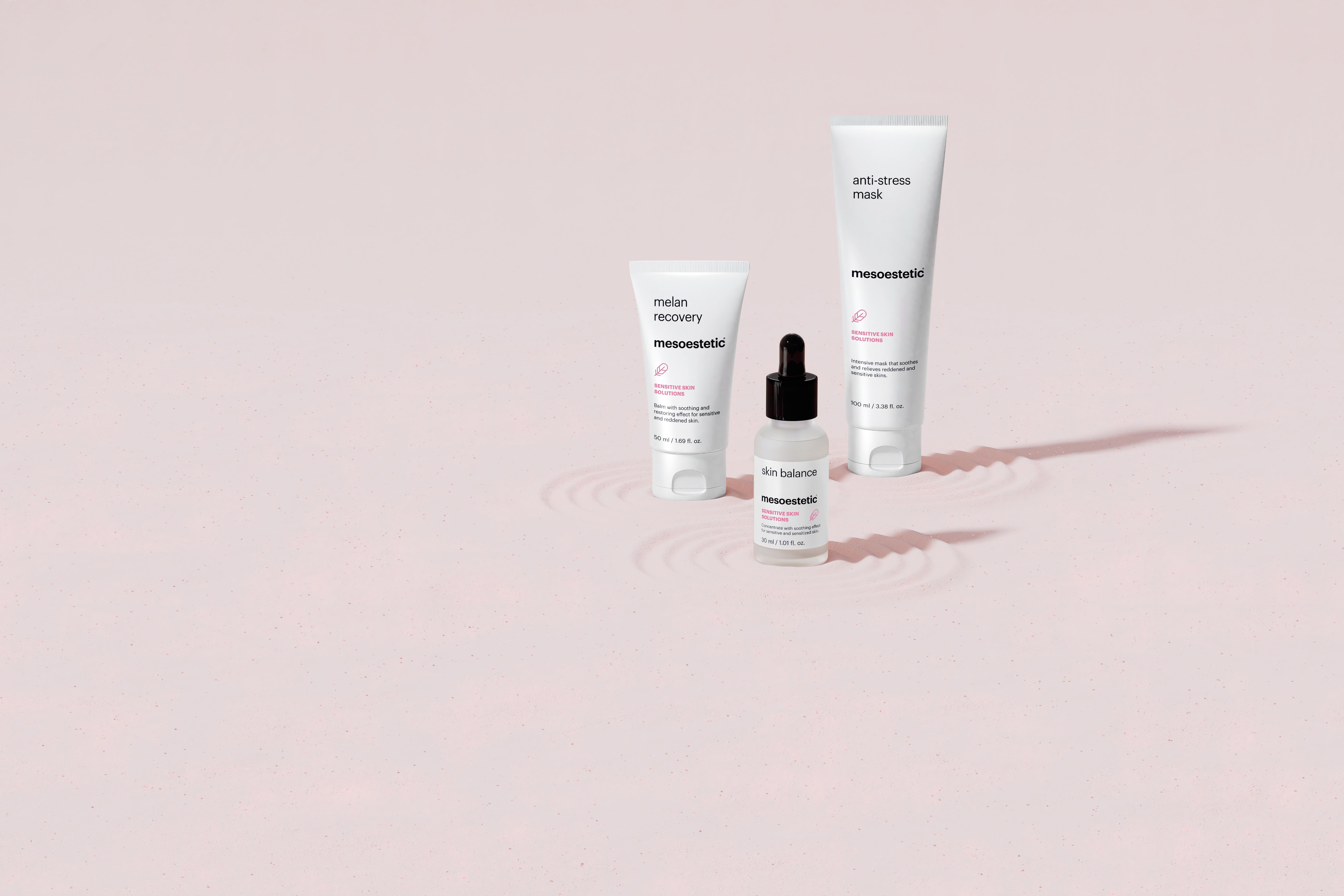
Managing Needle Phobic Patients
Nurse prescriber Claire Newman details how to deal with needle phobic patients in your clinic
It’s very common for aesthetic practitioners to meet patients with a fear of needles. Needle phobias affect between 3.5%-10% of the population.1 These patients will have varying degrees of anxiety relating to the phobia which is distressing for the patient and a challenge for the clinician. Some challenges include managing patient anxiety, minimising agitation to reduce the risk of needle injuries and ensuring a good patient experience and satisfaction. Interventions may not be straightforward such as the use of topical anaesthesia to alleviate the anxiety to aid the fear of needles.2 Treatments need to be individualised with an understanding that the efficacy of these interventions vary from patient to patient and day to day due to fluctuations in their levels of anxiety.
What is needle phobia?
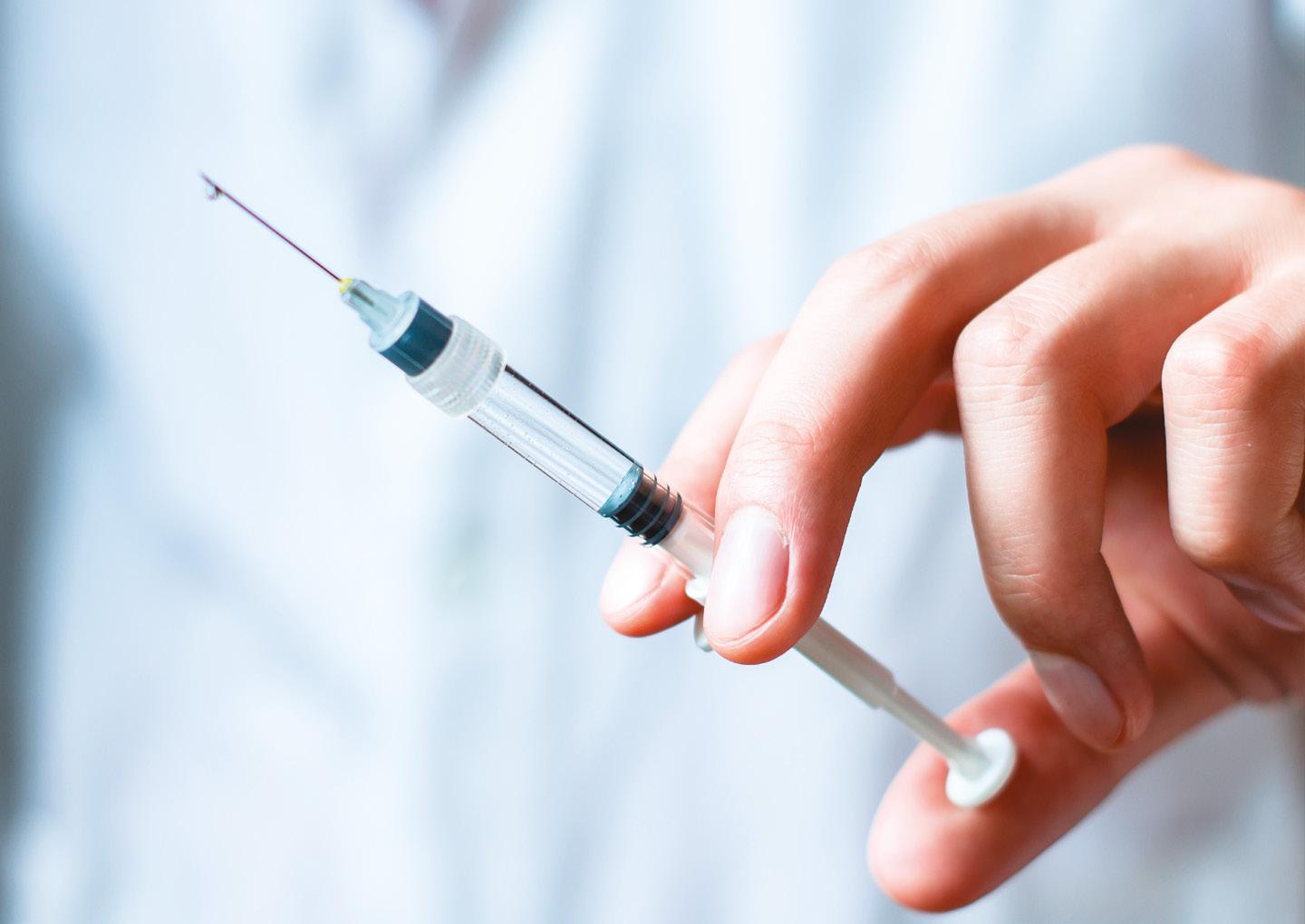
According to First Psychology Scotland, ‘a phobia is a debilitating condition which will cause the person with the phobia to arrange their life so that they can avoid the object of their phobia’.3 The severity and triggers of the phobia will vary between patients and those suffering with severe needle phobia could experience a significant negative impact on their daily lives, specifically when requiring medical interventions.1
Phobias have evolutionary roots; it is a fight or flight response for when we feel threatened or in danger. Ancestors were expected to survive if they came across a situation that evoked fear which in turn causes people to avoid situations that are seen as a threat.4 This can be applied to modern day where people may perceive needles and injections as a threat for instance; varying degrees of pain and discomfort, or fear of side effects/severe side effects due to the treatment.
How to recognise needle phobic patients
Needle phobia is often referred to as belonephobia whereas trypanophobia is the fear of injections.5 Within the literature, trypanophobia also appears to be referred to as needle phobia.5 According to Anxiety UK, phobias can arise from traumatic experiences and parental influences instilled in us from an early age.1 Needle phobic patients may result in them avoiding or seeking medical/dental interventions.6 Taking this into account it could be argued that within
aesthetic medicine patients are not avoiding the fear and therefore, do not have a phobia. However, patients may present with a degree of anxiety regarding injectable procedures, whether they are new to aesthetic interventions or returning patients.
Symptoms of needle phobia can be divided into behavioural, emotional, and cognitive traits. Characteristics include an inability to relax with feelings of tension, panic, and loss of control of the situation. Patients may present with palpitations, butterflies, excessive sweating, irrational thoughts, nightmares, and avoidance of the situation.1 In extreme cases, some patients may feel like they are going to have a heart attack or may even faint.1 It could be argued that those choosing to undergo aesthetic treatments may have a fear which varies in severity rather than an actual phobia. This is because they are confronting the situation rather than avoiding the situation. Regardless, these patients need support in clinics to manage their physical and psychological symptoms. In theory the more treatments patients have over a period, the more desensitised they will become. Since patients are ‘facing their fears’ rather than avoiding the triggering situation, the assumption is that the level of anxiety will decrease over time. Facing fears is seen to be a very successful intervention when trying to overcome a phobia.7
Interventions to help the needle phobic patient
Consultation
During the consultation it is important to understand the root cause of a patient’s fears/phobia as well as triggers. To discover if a patient has a fear/phobia, it is ideal to have this mentioned in the consultation form. Questions and further discussions can take place on how to overcome this during the initial consultation. However, for some they may not know the triggers or the root of the phobia. Some fears or phobias can be triggered by a lack of being in control where the patients may feel out of control and that something bad might happen or through a bad experience, such as going to the dentist as a child. This understanding helps clinicians work with patients individually and collaboratively to alleviate their fears and anxieties.
The clinician needs to be realistic in what they can achieve within an aesthetic setting and must also consider no treatment and/ or onward referral to a specialist for therapy.
@aestheticsgroup @aestheticsjournaluk Aesthetics aestheticsjournal.com Reproduced from Aesthetics | Volume 9/Issue 5 - Apirl 2022
Likewise, for some patients’ injectable treatments may not be an option due to their levels of distress. Alternative treatments can be offered to them, with an understanding that it may compromise outcomes. Such alternatives include skin tightening, skin rejuvenation using laser, chemical peels or using devices.
Psychological interventions such as cognitive behavioural therapy (CBT) and graded exposure are effective interventions to help the needle phobic patient.8 Graded exposure is where the patient develops a hierarchy of fears. They begin with what they perceive as being their least feared until they feel that this fear has decreased before moving up to the next situation.9 Not everyone will respond to the same interventions to manage their fears. Therefore, getting to know the patient and building a therapeutic relationship based on trust will help them feel more comfortable with the clinician, allowing them to relax and engage with interventions.
It is important to note that the patient’s level of anxiety may fluctuate depending on the treatment they are receiving. In my experience, it is not uncommon for patients to express higher levels of emotion the closer to the eye. A helpful tool to use during the consultation is a patient passport which is another layer of communication between clinician and patient. It can help to identify concerns as well as assist to empower patients to choose the best treatment for them. The passport supports the clinician in understanding what a patient likes, and dislikes whilst assisting the practitioner in formulating a collaborative treatment plan and interventions are more likely to succeed.10 This can be reviewed at each appointment in the sense of what interventions went well as well as what did not go so well so that they can be used again in the future. Building a therapeutic relationship with patients based on trust and empathy as well as clear communication is key.
Within the treatment
In-clinic treatments will depend on the severity of the patient’s phobia. Distraction techniques are particularly useful such as using squeezy balls, encouraging patients to wriggle their toes, listening to relaxing music or even music of their choice. Some patients do not like to see the needle or know too much detail about the processes as it exacerbates their anxiety, however, some might feel more secure knowing every step of the procedure. Applying a local anaesthesia even when it’s not indicated for treatments such as botulinum toxin or adding ice can help alleviate fears, especially if a patient is concerned about pain. Interventions may be trial and error, and during treatment observing how the patient is responding is imperative, and treatments should be adjusted accordingly.
For those needing some more help alleviating their anxiety, further interventions may be required. An effective coping mechanism is to help patients acquire control over their physiological symptoms. Such mechanisms involve the practitioner assisting patients to relax by using guided imagery which is described as ‘a technique that use visualisations and draws on the participants imagination and mental imagery.’11 Therefore, guided imagery is used as a distraction and encourages patients to let go of the tension they have.8 This is achieved by playing relaxing music so the practitioner can guide the patient to control their breathing slowly and deeply.8 Each time a patient breathes in deeply and out slowly with short pauses, tension is released, allowing the patient to feel more relaxed, calm, and restful each time they breathe out.
If this does not help the patient, further interventions can be added whereby patients are encouraged to relax their arms and legs so they go ‘limp’, which in turn releases any tensions that they may have. Once a patient is in a relaxed state, using guided imagery can encourage patients to focus on the music or think of a serene place such as relaxing on a beach. Giving patients the tools to relax in this way will assist them through the procedure as they will be able to alleviate the anxiety themselves with minimal interventions from the clinician.
It should be noted that this could take a lot of time and potentially have a financial impact to your clinic, so not every clinician will feel confident implementing these techniques.
Mindfulness
Mindfulness is a technique that patients can learn at home. The length of time it takes to learn will depend on the individual and the course they have booked on. There are various apps available which teach mindfulness and these techniques can be used by patients during appointments. Mindfulness stems from Buddhist meditation and is the practice of observing what is taking place currently devoid of judgement.12 This includes an awareness of what is going on with how a person is thinking (psychologically), what is going on with their body (physiological) and the environment.12 By becoming more self-aware, patients develop coping mechanisms and can react to their thoughts and emotions to feel less anxious and agitated.12 Patients can use the mechanisms they have learn with the support of the clinician if necessary to relax themselves leading up and during the procedure to alleviate anxieties and agitation.
Overcoming the fears!
Throughout our careers we will encounter patients with varying degrees of anxiety/needle phobia. Consulting patients, understanding their fears, and supporting patients by encouraging them to adopt techniques will help to decease patient anxiety and maintain patient satisfaction as well as patient safety. Of course, if the fear is too great, then you should be able to offer alternative treatment modalities to injectables and refer to a specialist for therapy.
Claire Newman is a mental health nurse prescriber and director at Soft Touches Aesthetics in Hertfordshire. She is a Level 7 assessor for Derma Medical and on the academic faculty for Intraline. She is passionate about mental health and promoting confidence and wellbeing.
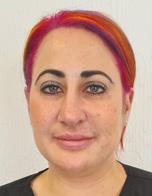
Qual: BSC (Hons) Psychology, RMN, Msc Nursing Practice, NIP, Level 7 Aesthetic Medicine Injectables
TO VIEW THE REFERENCES GO ONLINE AT WWW.AESTHETICSJOURNAL.COM
@aestheticsgroup @aestheticsjournaluk Aesthetics aestheticsjournal.com Reproduced from Aesthetics | Volume 9/Issue 5 - Apirl 2022
FEEL GOOD

LOOK GOOD
Bocouture® (botulinum toxin type A (150 kD), free from complexing proteins) 50/100 unit vials*. Prescribing information: M-BOC-UK-0432. Please refer to the Summary of Product Characteristics (SmPC) before prescribing. Presentation: 50/100 units of Clostridium Botulinum Neurotoxin type A, free from complexing proteins as a powder for solution for injection. Indications: Temporary improvement in the appearance of moderate to severe upper facial lines (glabellar frown lines, crow’s feet lines, horizontal forehead lines) in adults ≥18 and <65 years when the severity of these lines has an important psychological impact for the patient. Dosage and administration: For intramuscular use only. Unit doses recommended for Bocouture are not interchangeable with those for other preparations of botulinum toxin. BOCOUTURE should only be administered by an appropriately qualified healthcare practitioner with expertise in the treatment of the relevant indication and the use of the required equipment, in accordance with national guidelines . The intervals between treatments should not be shorter than 3 months. Reconstitute with 0.9% sodium chloride. Glabellar Frown Lines: Total recommended standard dose is 20 units. 4 units into 5 injection sites (2 injections in each corrugator muscle and 1 injection in the procerus muscle). May be increased to up to 30 units. Injections near the levator palpebrae superioris and into the cranial portion of the orbicularis oculi should be avoided. Crow’s Feet lines: Total recommended standard dosing is 12 units per side (overall total dose: 24 units); 4 units injected bilaterally into each of the 3 injection sites. Injections too close to the Zygomaticus major muscle should be avoided to prevent lip ptosis. Horizontal Forehead Lines: The recommended total dose range is 10 to 20 units; a total injection volume of 10 units to 20 units is injected into the frontalis muscle in five horizontally aligned injection sites at least 2 cm above the orbital rim. An injection volume of 2 units, 3 units or 4 units is applied per injection point, respectively. Contraindications: Hypersensitivity to the active substance or to any of the excipients. Generalised disorders of muscle activity (e.g. myasthenia gravis, Lambert-Eaton syndrome). Infection or inflammation at the proposed injection site. Special warnings and precautions: It should be taken into consideration that horizontal forehead lines may not only be dynamic, but may also result from the loss of dermal elasticity (e.g. associated with ageing or photo damage). In this case, patients may not respond to botulinum toxin products. Should not be injected into a blood vessel. Not recommended for patients with a history of dysphagia and aspiration. Caution in patients with botulinum toxin hypersensitivity, amyotrophic lateral sclerosis, peripheral neuromuscular dysfunction, or in targeted muscles displaying pronounced weakness or atrophy. Bocouture should be used with caution in patients receiving therapy that could have an anticoagulant effect, or if bleeding disorders of any type occur. Too frequent or too high dosing of botulinum toxin type A may increase the risk of antibodies forming. Should not be used during pregnancy unless clearly necessary. Should not be used
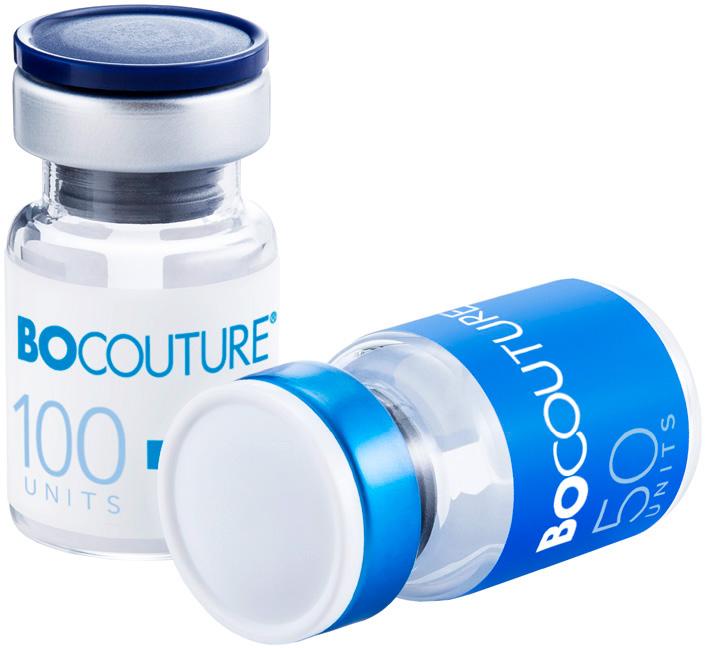
during breastfeeding. Interactions: Concomitant use with aminoglycosides or spectinomycin requires special care. Peripheral muscle relaxants should be used with caution. 4-aminoquinolines may reduce the effect. Undesirable effects: Usually, undesirable effects are observed within the first week after treatment and are temporary in nature. Undesirable effects independent of indication include; application related undesirable effects (localised pain, inflammation, swelling), class related undesirable effects (localised muscle weakness, blepharoptosis), and toxin spread (very rare - exaggerated muscle weakness, dysphagia, aspiration pneumonia). Hypersensitivity reactions have been reported with botulinum toxin products. Glabellar Frown Lines: Common: headache, muscle disorders (elevation of eyebrow). Crow’s Feet Lines: Common: eyelid oedema, dry eye, injection site haematoma. Upper Facial Lines: Very common: headache. Common: hypoaesthesia, injection site haematoma, application site pain, application site erythema, discomfort (heavy feeling of frontal area), eyelid ptosis, dry eye, facial asymmetry, nausea. For a full list of adverse reactions, please consult the SmPC. Overdose: May result in pronounced neuromuscular paralysis distant from the injection site. Symptoms are not immediately apparent post-injection. Legal Category: POM. List Price: 50 U/vial £72.00, 50 U twin pack £144.00, 100 U/vial £229.90, 100 U twin pack £459.80. Product Licence Number: PL 29978/0002, PL 29978/0005 Marketing Authorisation Holder: Merz Pharmaceuticals GmbH, Eckenheimer Landstraße 100,60318 Frankfurt/Main, Germany. Date of Preparation:August 2021. Further information available from:. Ground Floor Suite B, Breakspear Park, Breakspear Way, Hemel Hempstead, Hertfordshire, HP2 4TZ Tel: +44 (0) 333 200 4143
Adverse events should be reported. Reporting forms and information can be found at www.mhra.gov.uk/yellowcard for the UK. Adverse events should also be reported to Merz Pharma UK Ltd at the address above or by email to UKdrugsafety@merz.com or on +44 (0) 333 200 4143.
*Botulinumtoxin type A, purified from cultures of Clostridium Botulinum (Hall strain)1
References: 1. BOCOUTURE® (incobotulinumtoxinA) Summary of Product Characteristics. Merz Pharmaceuticals GmbH. 2. Vistabel® (onabotulinumtoxinA) Summary of Product Characteristics. Allergan Ltd. 3. Dysport® (abobotulinumtoxinA) Summary of Product Characteristics. Ipsen Ltd. M-BOC-UK-0443 Date of Preparation: December 2021
BOCOUTURE®
is the only toxin that can be transported and stored prior to reconstitution without the need for cold chain1–3

(Botulinum
type A)
toxin
Free from complexing proteins
Integrating Skincare into Your Patient’s Treatment Journey
Dr Jonquille Chantrey comments on her experience integrating skincare into her clinic

Born from decades of research, SkinCeuticals’ high potency formulas are proven to be absorbed optimally into the skin.
Centered around three main pillars: Prevent, Correct, Protect, we provide advanced skincare, backed by science, research and innovation. Our products work synergistically together to provide effective results. The benefits are long-lasting results and healthier, youthful looking skin.
Practitioner perspective
Dr Jonquille Chantrey, global key opinion leader for SkinCeuticals and multi award-winning surgeon and lecturer, comments on her experience on integrating skincare into her clinic, ØNE Aesthetic Studiø:
How important is retail to your clinic?
Retail is essential to maximising my patient results. I take an integrated approach to my whole practice. Injectables, devices and in-clinic chemical peels are then optimised by at home strategic skincare routines.
Has this changed in recent years and if so, explain how?
I have always had a very busy skincare element to my practice as my patients tend to be keen to learn how to take control of their skin health – I have a savvy skintellectual market. However, patient motivations for improved skin outcomes are evolving as is their understanding of active ingredients as well as having higher expectations. This has meant that more patients are seeking comprehensive skincare protocols. This has certainly been the case since the pandemic.
Benefits
Combining clinical procedures with professional treatments and advanced home care delivers comprehensive results:
• Professional pre-conditioning and recovery post treatment helps to reduce downtime and feelings of discomfort
• Advanced home care aids in prolonging and protecting results due to the additional benefits of antioxidants
Is there a difference between skincare you retail and skincare you use in clinic?
All the skincare I retail is clinical and contains active ingredients. Some are on prescription. For bespoke medical facials, chemical peels, microneedling and post device, the skincare is for professional use only.
What do you look for in a skincare brand?
Firstly, safety and efficacy. Is there highquality scientific data to support the claims? Secondly inclusivity – are there products that meet the needs of my highly diverse ethnic and gender patient demographics so we can tailor the protocol for everyone safely and effectively? Thirdly, tolerability. This has become increasingly more important in my practice as patients are wanting less downtime of erythema and peeling but are still wanting the best results.
For me, being an advanced practitioner of SkinCeuticals allows me to increase efficacy and tolerability simultaneously.
What do you personally use for your skincare regime?
Blemish & Age Cleanser & Toner, Silymarin CF, H.A. Intensifier, A.G.E. Eye Complex, Oil Shield UV Defense SPF 50, Tripeptide R Neck Repair, Retinol 0.3% and Resveratrol B E.
Which treatments benefit from pre, during and post skincare?
All in-clinic treatments, from pre and post bar none. Adequate skin prep pre-chemical peels and device-led skin resurfacing and tightening is essential for not only optimised results but also management of the melanocytes and sebaceous glands. Multiple integrative studies with device-led procedures such as laser and microneedling paired with SkinCeuticals topical application during the treatment, have shown both safety and efficacy.
Have you had any feedback from patients or success stories surrounding an integrated skincare regime?
Absolutely – all my patients see improved results and longevity from their procedures when they follow the dedicated skincare routine that we personally prescribe for them. Those patients that have always been sceptical about skincare for years notice a huge difference in their skin quality. Once they start, they don’t look back.
What advice do you have for other clinics wanting to integrate skincare into treatment protocols?
Look for supportive data around the products you want to introduce.
This
was written and supplied by
Aesthetics | April 2022 70 @aestheticsgroup @aestheticsjournaluk Aesthetics aestheticsjournal.com Advertorial SkinCeuticals
advertorial
SkinCeuticals Speak to your SkinCeuticals representative for more information about the range. If you do not have a dedicated contact please email Contact@SkinCeuticals.co.uk
A summary of the latest clinical studies
Title: Surgical Performance Anxiety and Wellbeing Among Surgeons
Authors: R Miller, et al
Published: Annals of Surgery, April 2022


Keywords: Mental Health, Anxiety, Wellbeing
Abstract: Despite a growing awareness that human factors, nontechnical skills and wellbeing in healthcare affect patient outcomes, an area that has remained unexplored is surgical performance anxiety (SPA). A prospectively registered, cross-sectional study using mixed methods was conducted across the United Kingdom. Data captured demographics, surgical specialty, trait anxiety, trait perfectionism, SPA, and surgical perfectionism scores. Wellbeing was assessed using The Short Warwick-Edinburgh Mental Wellbeing Scale, whereas qualitative data were collected regarding surgeons’ experiences of SPA. A total of 631 responses were collected. Mean age 41·2 years and mean surgical experience 15·3 years. A total of 62% were male and 52% of consultant/attending grade. A total of 100% felt that SPA affected surgeons, with 87% having experienced it themselves. A total of 65% reported SPA negatively impacted surgical performance and 96% felt SPA negatively impacted surgeons’ wellbeing. Male surgeons reported significantly better wellbeing than female surgeons. Surgeons with SPA reported significantly worse wellbeing compared with surgeons who did not experience SPA. Surgeons experienced significantly lower mental wellbeing compared with norms. A more open culture of sharing has been identified to be beneficial.
Title: A Prospective, Multicenter Trial on the Efficacy and Safety of Poly-L-Lactic Acid for the Treatment of Contour Deformities of the Buttock Regions
Authors: Nikolis A, et al.
Published: Journal of Drugs in Dermatology, March 2022
Keywords: Body Contouring, Skin Hydration, Elasticity
Abstract: Poly-L-lactic acid (PLLA) to the face is already well known, however there are very few publications on its use in other corporeal regions. This study aims to extend previous findings by evaluating the efficacy and safety of PLLA in the treatment of contour deformities of the buttock region. This was a prospective, multicentre, single cohort, open-label clinical trial. Thirty female subjects were treated with PLLA in the bilateral buttocks, with three treatment sessions, each spaced one month apart and followed for six months after completion of the treatment regimen. At each visit, various safety and clinical efficacy parameters were collected, these included: Global Assessment of Improvement Scale (GAIS), subject satisfaction, skin hydration, elasticity, scaliness, roughness, and 3-dimensional imagery. Six months following the last treatment, 84% of patients were rated as having improved; or more on the physician assessed GAIS, accompanied by a 96% patient satisfaction rate. There were no serious adverse events throughout the duration of the trial. Objective improvements were persistent after treatment in measurements of skin elasticity, hydration, roughness, and scaliness. PLLA is safe and effective for the indication of buttock contouring and improving parameters of skin health.
Title: Aesthetic Enhancement of the Brow using Hydroxyapatite
Authors: L Minelli, et al.
Published: Aesthetic Plastic Surgery, March 2022
Keywords: Hydroxyapatite, Skeletal Augmentation, Volumizing
Abstract: An aesthetically pleasing appearance of the ‘eyes’ usually includes good projection of the outer brow. Congenital lack of skeletal volume is exacerbated by ageing due to lipoatrophy and soft tissue laxity. A series of patients having augmentation of the superolateral orbital rim, using the technique described, were evaluated. A forehead crease incision was used, then a precise subperiosteal pocket developed in the lateral brow region between the supraorbital foramen and the superior temporal septum. The hydroxyapatite granule mixture was incrementally placed using modified syringes. Two hundred and fifty patients, 80% women, underwent supraorbital rim augmentation using subperiosteal hydroxyapatite granules, during a 12-year period, commencing in 2007. The follow-up was 41 months (range 1-12 years). The mean volume used for augmentation was 1.0 mL per side (range 0.4-2.3 mL). The upper lateral periorbital prominence was effectively increased, resulting in enhancement of the brow position and shape. Twenty-seven patients (11%) had an under correction, requiring additional volume augmentation, all during the first three years of the experience. Twelve patients (5%) required correction of contour irregularities. Patients who have skeletal deficiency of the zygomatic process of the frontal bone should be considered for hydroxyapatite augmentation of the bone as a complement to upper lid blepharoplasty and brow elevation.
Title: Distal Internal Maxillary Artery Occlusion with Palatal Necrosis following Cheek Injection with Calcium Hydroxylapatite
Authors: D J Soares, et al.
Published: Plastic and Reconstructive Surgery, March 2022
Keywords: Cosmetic fillers, Aesthetic Medicine
Abstract: The rapid growth in the utilization of dermal fillers globally has led to a substantial increase in the number of reported cases of severe injuries resulting from accidental intravascular injection and embolization of filler. Accidental intravascular injection of cosmetic fillers resulting in dermal infarction represents one of the most feared complications in aesthetic medicine. Despite the infrequency of these injuries, the rapid rise in filler use has caused a sudden increase in the incidence of filler-induced skin necrosis. Because the complex vascular anatomy of the face subserves a wide range of cutaneous and mucosal tissues, it has been surmised that occult injuries affecting the oronasal cavities could occur as a result of accidental intravascular injection of dermal fillers. We report an instance of ischemic skin injury of the infraorbital territory of the face with hemi-palatal mucosal necrosis secondary to vascular occlusion with calcium hydroxylapatite.
@aestheticsgroup @aestheticsjournaluk Aesthetics aestheticsjournal.com Reproduced from Aesthetics | Volume 9/Issue 5 - Apirl 2022
Understanding Personality Types
Have you ever categorised your patients?
Yes, I hear you say! You probably sort patients into categories such as what treatments they have, their demographics, perhaps income level. But have you ever thought about their personality type?
Psychology may not always be at the forefront of an aesthetic practitioner’s mind, but after 20+ years in this industry, recently applying knowledge of psychometric testing to my business has been transformational. Some tools I’ve used for this are Insights Discovery,1 16 Personalities,2 and Talent Dynamics,3 though there are dozens out there to choose from. What many of these testing tools have in common is that they often organise all personality types into a small number of wider categories, followed by any number of sub-categories and specific named personality types. Knowing this, I now mentally combine multiple tests and utilise a general framework of four categories by which to address my patients. So whilst I’m not advocating testing each patient, that comes through your door, what I can say is that having a basic understanding of the merits of psychometric testing, and mirroring its function by rudimentarily dividing your patients into a small number of categories, can
really help your practice both in consultation and during treatment. Each practitioner’s framework or understanding will be unique, but I really encourage doing this exercise for yourself. Whether you utilise an existing test’s categories or combine multiple theories into one will be up to you and your understanding, but to better explain the benefits of this, let me give an example of the categories I use (the main tenants of which I have completely taken from the tests I named above).
Different personality types
In general – and again, this is my own simplified framework so I really do encourage you to look into one of these official psychometric tests for yourself – I tend to think of my patients as belonging to one of four categories. Obviously, there is far more nuance to each individual, and it’s impossible to really know a person from just one brief meeting. However, I have found that these four communication styles tend to cover 99% of new patients coming through my door, and it’s far more effective than just having one approach for everybody. I don’t sit each patient down with an iPad and make them fill out a personality questionnaire along with
their medical history form, but between their body language and their response to “How can I help you today?”, I usually have enough information to adapt my consultation accordingly.
Nurturers
Firstly, there are what I call nurturers; these are gentle patients who expect a gentle approach from their practitioner in return. You’ll know they’re a nurturer if they try to find an affinity with you from the offset, because ultimately they’ll do anything to avoid conflict. They’ll often start a conversation with a compliment, and will try to make sure you’re at ease even when it should be the other way around!
Questioners
The next type is a group I call questioners, but ‘cautious Cathys’ is another term I’ve heard used in this industry – and every practitioner will know who I mean by this! These patients need copious amounts of objective information before making a decision. They’ll probably start the conversation by asking about your qualifications and experience, and you’ll definitely need the full amount of time that you schedule in with these patients, if not more. Lastly, their body language can often be quite closed until they begin to trust you, but as they do, you can often see them physically open up – this is quite rewarding.
Social butterflies
Next are the social butterflies, talkative and excitable patients who value a personal connection as much as your qualifications and approach to treatment. If you’ve ever had a patient try to hug you on your first meeting, they’re probably this type! They’ll often ask you how you are before you can ask them, and they’ll be genuinely interested in the answer. When you ask during the consultation how you can help them, they’ll often tell you everything – everything going on in their lives, everything they’ve been thinking that’s led them to your clinic and so on.
Executives
Then lastly are the direct and straightforward executive types. Unlike the social butterflies, they won’t ask you about your day, and unlike the cautious Cathys, they’ll be brief with their questions. They will never be afraid of holding very direct eye contact, but can be quite closed with their body language otherwise. If you ask them during the consultation how you can best help them, they’ll tell you exactly what they want from you, usually in very few words.
Nurse prescriber Julie Scott explains how to identify different personality types in your patients and adapt your communication style accordingly @aestheticsgroup @aestheticsjournaluk Aesthetics aestheticsjournal.com Reproduced from Aesthetics | Volume 9/Issue 5 - Apirl 2022
Using types in the patient journey
So why do I find this so useful? A patient’s personality type affects how they retain information, how they like to be communicated with, and what kind of information they will be receptive to. These three factors will determine whether your consultation is successful and you gain a new patient, or whether that patient leaves and goes elsewhere – or nowhere at all. Ask yourself the following: have you ever gone into a consult with a new patient and felt that you’re just not connecting with the person opposite you? I certainly have – in the past I have had patients who leave my clinic and I think, ‘did I do something wrong? Why do I feel like they haven’t taken in anything I’ve just said?’
Often for me these patients are quite short, and want to move on to the next topic as soon as I answer their question. In the past I may have mistaken their bluntness for rudeness, or at best, thought they just weren’t my cup of tea.
Now, with experience and the help of psychometric testing, I know that they are most likely just the opposite side of the personality spectrum from me. It’s not that they’re rude or that they dislike me, it’s simply that they are direct, to the point, and don’t need lots of ‘fluff’ surrounding the key information they’re seeking. They benefit from bullet points. They seek simplicity. I am not the same, but that doesn’t mean I don’t know how to meet their needs, now that I know what kind of personality they have.
Communicating with each personality type
So, now I’ve identified what my patient needs, how do I communicate with them?
The example patient above, who I may have once incorrectly identified as rude or blunt, is a good example of an executive type. They need straightforward answers and simple solutions, and are often direct and to the point. Consultations must be efficient and treatments don’t require any fluff either. I can often schedule these patients for 10 minutes less than the other types because they’re not likely to want to stick around after treatment discussing the weather – they like to be in and out.
As for the other personality types, for the gentle nurturers, I make sure to listen at least as much as I talk. Any information I provide is expressly tailored to what
they have expressed concern about. Until they trust you, these patients may feel especially offended if you address something outside the realm of what they’ve specifically come to you for. A conveyor belt approach will not work with these patients, as they need to feel invested in and treated like an individual. Flattery, on the other hand, goes a long way with these patients and conflict must be avoided at all costs. Say you have a patient who asks for something they’re simply not clinically indicated for – an executive may be fine with a straightforward and firm ‘no’, but a nurturer will need letting down gently. Questioners may take more than a consultation before they come on board. I always send a summary email following each consultation, and this personality type will usually reply to this email with five more questions, often listed in order of personal relevance to them. Answering these questions may even lead to further questions, but once they have made their decision they tend to be very loyal patients. Just be careful that the questions they’re asking are for clarification and not indicating a red flag patient. Once you earn these patients trust though, repeat treatments usually become very straightforward. For initial treatments, they’ll probably benefit from you explaining each step of the process and everything you’re doing as you’re doing it. Social butterflies will require more of a personal chat before I can get into the fundamentals of the consultation and start talking aesthetics with them. They may value a personal connection with you just as much as they value your professional qualifications or experience, so don’t skip the small talk with these patients, during consultation or treatment. You’ll need to walk the line between being friendly without being their friend, and this will mean controlling the conversation so they aren’t chatting when you need them to be quiet – like injecting their lips!
Knowing your own personality type
It’s equally important to note that you should start this process of utilising personality types in practice by finding out which personality type you are, because this will influence how you see the other types and how best to interact with them.

Personally, I’ve found that knowing my own
personality type through different types of tests (they all tend to align quite clearly) has been hugely important in helping me communicate with my patients. By my own combined framework, I tend to nurture people, and therefore I need to work extra hard to overcome dealing with those direct, blunt patients. Similarly, I don’t have to try quite as hard to connect with my questioners or social butterflies and dealing with other nurturers comes naturally to me. This is relevant because knowing where to expend a bit more effort and where one can be more relaxed is crucial to a busy practitioner and a clinic’s growth.
Define your types!
Your ideal patient is a larger group than who your personality type is. So, because you can’t only have patients who are like you, you need to be able to adapt. I know many practitioners who think of themselves as chameleons, able to change how they come across based on the patient they have in front of them, and that’s exactly what I’m advocating. Being a chameleon is a great skill as a practitioner! Understanding personality theory is just one tool to help you become one. So, what’s your personality type?
Julie Scott is an NMC registered independent nurse prescriber and Level 7 qualified aesthetic injector with more than 25 years’ experience in skin rejuvenation. She has run her successful clinic, Facial Aesthetics Ltd, since 2003 and more recently has begun teaching and mentoring new practitioners in the aesthetics industry at Interface Aesthetics. Qual: INP
REFERENCES
1. Insights, Insights Discovery, 2021, <https://www.insights.com/ products/insights-discovery/>
2. Talent Dynamics, What is Your Natural Talent, 2012, <https:// www.tdprofiletest.com/home/>
3. 16 Personalities, Free Personality Test, 2011, <https:// www.16personalities.com/>
@aestheticsgroup @aestheticsjournaluk Aesthetics aestheticsjournal.com Reproduced from Aesthetics | Volume 9/Issue 5 - Apirl 2022
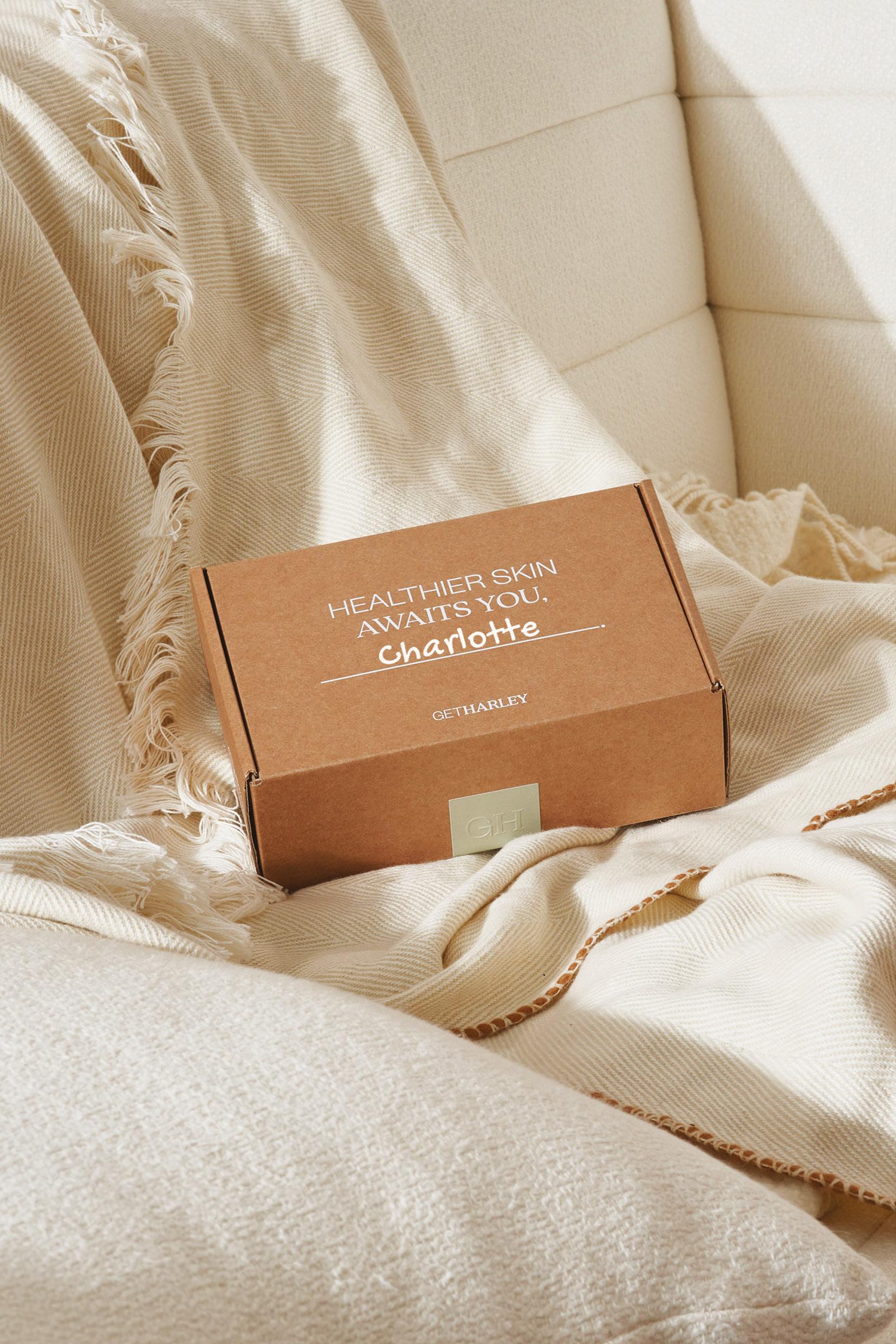
Setting up a Weight Loss Clinic
Language Matters guide produced by Obesity UK– this helps avoid using stigmatising phrases.1 You may notice that initially you’re rebuffed when trying to talk about the topic. So, it’s something that you need to persist with in a polite, friendly, non-intimidating manner for patients to be open and to get to the core of the matter. Once you’re there, just like a medical consultation where you’re trying to get clues and edge closer to what the underlying problem is, hopefully the patient will open up and say, ‘This has been bothering me for a little while, I’ve tried XYZ, and doing a regimented weight loss programme with a personal trainer and nutritionist is something I’m willing to look into because I’ve tried many other things before’. Therefore, even before you get to the stage of discussing it with the patient, the patient journey should be mapped out before they even know it, and this is where adequate staff training and clinic planning makes sense.
Dr Kam Lally and Dr
Mayoni Gooneratne
discuss the considerations for adding weight loss services to your clinic
During the last couple of years, we have seen a huge disruption to our routines and for many people this also meant their activity levels. Currently, we are seeing a surge in interest for patients seeking weight loss treatments. This needs to be approached in a sensitive and holistic manner incorporating education, in addition to potential pharmacological intervention. A weight loss clinic offers medical weight loss programmes by having services such as mental health support with an experienced professional to develop confidence and deal with any psychological issues, as well as specific weight management treatments and plans. This article will explore our experiences setting up weight loss services in our aesthetic clinics and the considerations you should make should you be considering branching into this area.
The benefits of starting a weight loss clinic
Setting up a weight loss clinic can help to continue to push the message of primary prevention as there are disease processes that are associated with it rather than just the aesthetic impact. Being able to empower people to improve their self-view is a part of the aesthetics industry. So, if you can help somebody have a higher opinion of themselves, then they will be more accepting of their outward appearance. It’s the aesthetic boost on the inside for their self-confidence. Another positive is becoming a clinic of reference outside the NHS. Of course, there are business benefits to this as you are adding another service and revenue stream to your practice, but we also believe it helps you return to why you trained to be a healthcare professional and take a more holistic approach. As a healthcare professional, being able to evaluate data and look at medical services that you’re adding from a safety perspective, as well as a business proposition, is satisfying.
What to consider before setting up a weight loss clinic
Consultation
Before you get to the stage where you are asking the patient about weight loss, there should have been an acknowledgment that it’s not a topic which is comfortable to talk about. Therefore, your staff need to be appropriately trained when it comes to the right language you use when broaching such a sensitive topic. A great starting point is the
Consider if it’s needed
Not every clinic will have a demographic of patients who will use or need services such as weight loss programmes. Therefore, before you start to embark on this journey do your research via patient surveys; ask them if they feel they would benefit from this and understand whether this would benefit your business from a profit point of view as well as from a patient point of view.
In our experience, there is only one purely ‘weight-loss’ person in every 20 generic aesthetic patients which is around 5%. If you look at the numbers, 95% will come with an aesthetic concern or request. This significant majority will get to know you and the clinic over time and become more comfortable with talking about other aspects that bother them. The numbers are relatively low to start off with, but in our experience 60% of interested patients during the second visit will be comfortable to talk more about other concerns and consider a weight loss journey. Of the remainder, approximately 80% by the third visit will have broached the topic of weight loss.
In our clinics, we see a wide variety of patients exploring their weight loss options. This can vary from self-conscious students finishing university to a dad in his 50s who has noticed his weight increasing gradually over the years. One of the commonest demographics we see are middle-aged
@aestheticsgroup @aestheticsjournaluk Aesthetics aestheticsjournal.com Reproduced from Aesthetics | Volume 9/Issue 5 - Apirl 2022




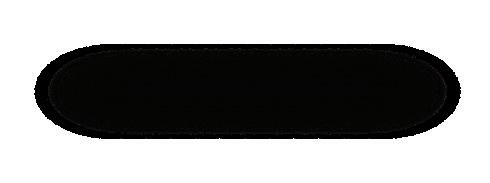

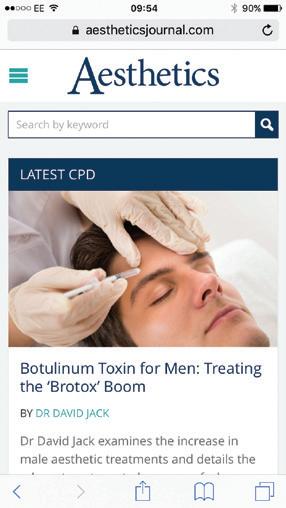
AESTHETICSJOURNAL.COM Keep up-to-date with the latest aesthetic developments and best practice guidance on your desktop, tablet or phone AESTHETICSJOURNAL.COM @aestheticsjournaluk Aesthetics @aestheticsgroup
mothers. The children are at an age where they’re less reliant on their parents and the mother has always put other people before herself. They are usually between their late 30s to mid-to-late 50s. Disposable income is also important. These are women who are working or returning to work, and they will have this income. You need to recognise who you are marketing to. Before introducing treatments, we ask them to fill out a consultation form to discover what areas are of concern.
Sometimes, it may take a while for patients to be interested in weight loss services. Many patients will know about it and have heard of it; however, they’re likely to discuss body contouring treatments like cryolipolysis before they speak about a regimented weight loss programme. Therefore, it is important to continue building a rapport with them and offer weight loss support following appropriate cues from the patient.
Cost to the business
We strongly advocate a multidisciplinary team approach to effectively have a roster of professionals that can be referred to on a self-employed basis (e.g. nutritionist, personal trainer, psychologist). You will also need to invest in staff training/upskilling and equipment costs. For example, making sure that your chairs have no arms or they’re slightly broader, so a potential patient isn’t embarrassed if they are unable to fit comfortably, weighing scales that go above the usual sort of numbers, large blood pressure cuffs and double doors. These are some of the actual costs that practitioners need to weigh up prior to setting up.
For example, you need to be registered with the Care Quality Commission (CQC) in England, the Regulation and Quality Improvement Authority in Ireland, Care Inspectorate Wales, or Healthcare Improvement Scotland to carry out procedures such as blood tests.
Analyse your business capacity
As a practitioner, you’ve got to have the time and the ability to invest in new treatments and devices. This is talking to your real ‘raison d’etre’ for becoming a healthcare professional. You’ve got to want to spend the time to get to know the new treatments and the human beings having the treatments. If you don’t, things slip and not just medically. We believe psychologically you lose, and we think you
can arguably do even more damage than good. Therefore, only start a new treatment if you have the time to train and invest in the treatment and the capacity for your team to support these people.
Growing your business
Starting to grow your business in relation to weight loss could be as simple as walking into your local gyms and giving them your number and saying, ‘This is the service I’m offering; we would love you to offer your members an initial complimentary consultation to see if this works for them’. By doing this, you’re not losing out financially but opening yourself up to a market that you might not have been able to access. Also, you may be able to access services that they have within their gyms, such as a nutritionist or personal trainer. We don’t advocate offering discounts (because the weight loss journey often requires the use of prescription-only medicines) but offering added value instead. For example, a free light treatment or a welcome skin peel to everyone who refers in. You should be careful when advertising weight loss services and ensure you do your research – practitioners should be familiar with the Advertising Standards Authority (ASA) guide for prescription medicines.2,3
Be aware of your preconceptions
The literature suggests that medical professionals bring a lot of their own biases to a consultation.4 We believe that patients think XYZ and that they should be doing XYZ to help their weight. A study showed that most doctors inherently believe that if patients are overweight, then they’re probably lazy.4 Therefore, there’s a bigger picture surrounding education and we think for the purposes of aesthetics, maybe we need to do more.
For example, you may think that people with a BMI of 35+ will be the ones coming in for treatments, but in our experience, they’re commonly individuals who are just entering the realm of obesity. So, how do we speak to them? Maybe we will never have those high BMI patients unless you set it up completely separately and market in a different way. Although we need to be ready for them, we’re not always going to be seeing our preconceived ideas of someone who is obese. It’s the impact on their self-image and their confidence
that we’re effectively dealing with here. There is also an educational need for practitioners to recognise underlying psychological issues and then refer to a psychologist for support.
A rewarding journey!
Setting up a weight management service requires a certain amount of activation energy, patience and persistence from the healthcare practitioner (and their patients!). Once you have built adequate momentum, watching your patients evolve into happier and healthier humans is incredibly rewarding. However, this journey is not for everyone and if that is the case for you, the best thing you can do for your patient is refer them on.
Dr Kam Lally graduated from the University of Oxford, went on to qualify as a GP and is the RCGP national aesthetic medicine lead. He runs a weight management service in his Aestheticology clinics based the Midlands and is an obesity consultant for Novo Nordisk. He is also a KOL for Teoxane and HansBiomed International.

Qual: BMBCh (Oxon), BA (Hons), MRCGP (UK), PG Dip Aes Med
Dr Mayoni Gooneratne is a former NHS general surgeon and the founder of Human Health and Skinfit. These are a range of functional medicine and aesthetic services that help her offer whole person transformations. She has a well-established weight management clinic BODYFIT and is a KOL and advisory consultant for Novo Nordisk.

Qual: MBBS, BSc, MRCS, MBCAM, AFMCP
REFERENCES
1. Obesity UK, ‘Language Matters: Obesity’, 2020, <https://cdn. easo.org/wp-content/uploads/2020/07/31073423/ObesityLanguage-Matters-_FINAL.pdf>
2. Lally K, ‘Advertising Weight Loss Services’, Aesthetics journal 2021, <https://aestheticsjournal.com/feature/advertising-weightloss-services>
3. Advertising Standards Authority, ‘Enforcement Notice: Advertising of Prescription-only weight loss treatments’, 2021, <https://www.asa.org.uk/resource/enforcement-noticeadvertising-of-prescription-only-weight-loss-treatments.html>
4. Caterson I, et al., ‘Gaps to Bridge: Misalignment between perception, reality and actions in obesity’, Diabetes, Obesity and Metabolism, 2019,
@aestheticsgroup @aestheticsjournaluk Aesthetics aestheticsjournal.com Reproduced from Aesthetics | Volume 9/Issue 5 - Apirl 2022
Building the Mindset of a Successful Clinic Owner
Business
Have you ever stopped to wonder why some clinic owners have a huge list of happy patients, make a healthy profit, and do it all seemingly with ease, whilst others struggle to grow their portfolio, can’t build a loyal customer base, and face a crippling workload? The aesthetic sector is more competitive than ever, making it even more difficult for clinic owners to stay ahead of the game and remain profitable. Every single one of the challenges faced has likely been solved many, many times before – from retaining loyal customers, to increasing prices and communicating effectively. It always starts with the owner, and the requirement for them to work on their business rather than be a slave to it. Many of my clients have experienced some struggles in one or all of these areas, which is why I worked to develop a system which helped them navigate their way through it and come out the other side.
In this article, I share my five-step plan to developing DEPTH (Destination, Exploration, Plan, Tactics, Health), from building a success-focused mindset, to setting out plans and the tactics you’ll use to achieve your goals.
Destination
This is the ‘why’ and it comes first because it’s the most important part for any industry professional who’s going it alone. It focuses on the owner – you, your lifestyle, your dreams, and the life you want to build for you and your potential family. It’s about the big dream – the house you want to live in, the holidays you want to go on, the car you’ll be driving, and everything in-between. It’s vital that we all have a very clear picture of our end goal, not just to keep us motivated when we’re enroute, but to help us understand where we are at any one point and what we ultimately need to do to get to our final destination. If you aren’t sure what your destination is, try by the other way – your life in one year, five years, 10 years, and so on.
Without a destination in mind, it’s going to be difficult to track your progress – you may be headed in a completely random direction. It’s like getting into a car and driving without checking a map, working out how long the journey will take, and whether there’s anywhere to stop for fuel.
More than half of the business owners I first meet are hazy about what success looks like to them and many are building businesses that feel more like a bully to them than a great place to work. I’m always shocked by how many aren’t the highest hourly paid person in their own clinic either. It’s vital that as part of your business’s growth journey, you focus on what success really looks and feels like to you.
Exploration
Understand the options and resources available to help you get to your destination most effectively. At your disposal are your skills, expertise, and/ or your product. But it’s also important to identify what you don’t have or know –which is where external business support and outsourcing comes in.
It’s a good idea to build a team of trusted advisors around you to support you when you need it. Outsourcing and calling on expertise is a fantastic way to streamline costs and free up time to focus on what you love and what makes you profitable and should be considered in terms of return on investment. Firstly, you need to recognise where you feel you need some additional support in your clinic, and this can help you determine the right person/
to build a clinic that will survive and thrive
coach Alan Adams explains how
@aestheticsgroup @aestheticsjournaluk Aesthetics aestheticsjournal.com Reproduced from Aesthetics | Volume 9/Issue 5 - Apirl 2022
Industry events such as the Aesthetics Conference & Exhibition and CCR are a great way to meet experts in your field
company for the job.
For example, reception, marketing and PR, call answering services and accountancy are all areas which can be easily outsourced. Or if you need assistance on revenue growth planning, then perhaps a business coach can guide you on the small changes that will make a difference to the growth of your business whilst supporting you in creating a resilient business plan.
Before you engage with any professional or company, do your research and ask questions that will give insight into their suitability for your needs, as not everyone will be ideal for your business. Perhaps ask your colleagues who they use and can recommend, attend events to meet more relevant people in the industry or watch business talks at conferences and take away contacts from those.
Conferences and industry events such as the Aesthetics Conference and Exhibition and CCR are a great way to meet experts in your field, gain insider knowledge of the business side of the aesthetics industry, and make valuable connections.
Plan
When creating a business plan, it’s vital you consider how to manage and treat your business’s growth and ensure that your plan can guide you on what to do if a challenge (or risk) presents itself. Take the pandemic for example – none of us would have expected to face numerous lockdowns and being prevented from seeing family let alone attending our usual appointments – it has given us all a lesson to expect the unexpected. And crucially, to prepare for it.
Even with a destination in mind and processes in place to make them happen, you still need to define what steps need to be taken to help you get there. With any plan, practitioners need to cover all areas from a 360-degree view:
• What’s your plan for growth and can you track it to make sure you’re going in the right direction? For example, if you’re aiming to grow number of patients, you will need to track things like number of new leads gained and the conversion rate of these into new patients
• What are your business’s weaknesses? And how can you mitigate them? For example, natural occurrences such as flooding which can cause damage to your property and equipment, or
outstanding invoices owed to you
• What risks could your business face? For example, if a key member of staff were to leave your business, would you or others know how to do their tasks? Writing a list of the processes on everything everyone does can mitigate this risk

• What might stop you from achieving your growth? For example, are you likely to face issues in recruiting staff? Look at what stage you need to start the recruitment process before it becomes urgent and workload is unmanageable
Tactics
Next, you need to deliver on the plan, and that’s where the tactics come in. These are specific actions that you and your team need to take to make sure that you hit every milestone and that you continue to make progress towards your destination. Organisational tools such as Slack can streamline internal communications and remove a lot of unnecessary emails, while platforms such as Monday.com or Trello can support with planning and prioritisation.
Break each task down into bitesize chunks to make each one more manageable –like daily, weekly, monthly, and quarterly to-do lists. Adding deadlines can add some added clarity and keep you and your staff focused, while assigning roles to specific individuals can help to keep others accountable – remember, it’s not all on you. For example, if you are launching a new and improved website, and you’re aiming for a go-live date in six months’ time, you need to prioritise each required task according to your timescales and that of your website provider – from drafting the content for the website and writing staff biographies, to service descriptions and arranging professional photography.
Health
The last part to creating DEPTH in your clinic is to monitor its financial health. Track and measure the numbers regularly, and make sure you know your margins and break even. While business may be good on the surface, it’s important to take a deeper dive into what your figures mean too. For example, what capacity are you and your team running at and what are you doing to increase this? Are you profitable enough, or do you need to think about
raising your prices? Again, if finances aren’t your strong point, outsourcing an accountant or financial advisor may be a great way to remove this burden and provide you with more confidence in the financial performance of your clinic. Knowing your shortfalls is vital in order to make improvements that will make a tangible difference to your bottomline. Don’t make the mistake of thinking expensive new machines or services will fix your problems – yes, you could cross-sell, but I’ve seen plenty of clinics purchase new machines just for them to sit there doing nothing. If the issue is about generating new leads, new machines or services isn’t always going to fix that.
Making success easy
A business’s success starts with the owner. DEPTH is an effective tool I use with many clients to help them understand what their success looks like, and it lays out a structured focus on each important area to ensure they work on their business rather than becoming too embroiled in it. After all, working in aesthetics really can be a beautiful business, and we all deserve to have a business which serves us, where we enjoy going each day, and where we can live our dreams.
Alan S. Adams is an awardwinning business coach, professional speaker, and bestselling author. His third book, The Beautiful Business: Secrets to Sculpting Your Ultimate Clinic focuses on the medical, cosmetic, and aesthetic clinic sector. He was a finalist in The Association of Professional Coaches, Trainers and Consultants’ Coach of the Year Awards and has been recognised by Enterprise Nation in 2020 and 2021 as a Top 50 Advisor in the UK (Sales).
@aestheticsgroup @aestheticsjournaluk Aesthetics aestheticsjournal.com Reproduced from Aesthetics | Volume 9/Issue 5 - Apirl 2022
After following a career path to become an ENT surgeon, Dr Simon Ravichandran began to discover aesthetics when he noticed the impact his procedures had on a patient’s quality of life.

After graduating from Glasgow University in 2002, Dr Ravichandran worked in a variety of hospital posts throughout his medical education. He reflects, “We needed to have completed at least four different surgical specialities before we could be eligible for sitting our surgical entrance exams, so I gained exposure in orthopaedic surgery, cardiothoracic surgery, ear nose and throat surgery and emergency medicine. I found from this that I had a passion for facial plastics and so continued my training in ENT surgery for a further four years, before taking a staff post in ENT with a specialist interest in facial plastics.”
Whilst working in the ENT department, Dr Ravichandran discovered the use of aesthetic treatments when treating patients with facial palsies. He explains, “We would traditionally perform facial sling or facelift procedures to try and improve our patient’s symmetry, but the procedures involved a long recovery for patients, the inconvenience of the swelling and bruising, and quite often the results didn’t really live up to our patients’ expectations. The use of aesthetic treatments often allowed us a simpler, more tolerable procedure that improved the quality of life for our patients”
The shift into aesthetics began when a patient returned to Dr Ravichandran to thank him for restoring her lost confidence. He notes, “I had a patient in her 60s who had suffered from a stroke 20 years ago. At her review appointment she showed me some photographs of her granddaughters birthday party. The patient explained that they were the first photos she had taken since the stroke, and that the treatment we had performed had given her back a confidence that allowed her to live her life the way she wanted to, without constantly feeling self-conscious about her
appearance. My eyes were truly opened up to the impact we could have on our patients without them having to go through prolonged procedures with lengthy downtime.”
In 2007, Dr Ravichandran began training in aesthetic medicine and during 2010 he opened his first aesthetic clinic, Clinetix in Glasgow, with his wife Dr Emma Ravichandran. He reflects, “My goal was to always strive to be better, push boundaries and ensure I was constantly developing my skill set. In NHS surgery I felt I had reached the point where my skills were starting to plateau, so I began to look to aesthetics, where I was continually finding new skills and developing techniques. Setting up our first clinic allowed us to explore these opportunities and start a new challenge of being business owners. It has been a long journey and we’ve made mistakes along the way, but looking back there’s nothing I would want to change or do differently.”
Since the opening of their first clinic, the pair have opened three additional clinics in Scotland as well starting their own training academy in 2015, The Aesthetic Training Academy, in Glasgow. “I’m proud of what we, as a team, have achieved with the academy. We focus on high quality training with small groups of typically four or five delegates. We can provide one to one training and can be more involved in their learning processes. The end goal is to give our delegates the confidence and skills to independently perform procedures and continue to grow as practitioners. We aren’t as busy as other training academies, but we have a very high level of satisfaction among delegates, and this is what means the most to us,” Dr Ravichandran adds.
As well as running his academy and clinics, Dr Ravichandran is a global key opinion leader and a Merz Innovation Board member where he develops education and training for the company. “Personally, I think Merz Aesthetics is one of the most ethical pharmaceutical companies. Patient safety is a priority and the way they instil this through
developing educational programmes is pivotal,” he notes. Teaching and educating future aesthetic practitioners is something I am very passionate about, and my relationship with Merz gives me the perfect platform for doing that in a way that feels right,” he continues. Looking back at his career thus far, Dr Ravichandran believes that educating yourself and continuing to learn is key to starting and maintaining a career in aesthetics. He reflects, “For anyone interested in getting involved in aesthetics, I would say have a look at the bigger picture. Look at the holistic improvements you will see in the patient and if that’s something which interests you, try it! Attend some courses and learn new skills but don’t commit until you’re sure it is something you really want to do, as you will soon realise it is a lot harder than it looks!”
Best piece of career advice…
One of my surgical mentors told me to keep your head down, work hard, do your best and stay patient!
Industry pet hate…
I don’t like pictures of freshly treated lips on social media. I think they contribute to a negative view of what our specialty is about and the goal of making patients feel confident.
Treatment you enjoy performing…
My passion lies in the process of consulting a patient, finding out what they really need and creating a bespoke treatment plan which meets individual needs.
“My goal was to strive to be better, push boundaries and ensure I was developing my skillset”
Aesthetic practitioner Dr Simon Ravichandran details his career into aesthetics and how he became a part of the Merz Innovation Board
This article is sponsored by Merz Aesthetics
Aesthetics | April 2022 80 @aestheticsgroup @aestheticsjournaluk Aesthetics aestheticsjournal.com Advertorial Merz Aesthetics
M-MA-UKI-2072 – Date of Preparation: March 2022
In The Life Of Dr Manav Bawa

A typical working day…
Since reading the book The 5am Club: Own Your Morning. Elevate Your Life by Robin Sharma last year in order to work on my wellness, I try my best to wake up early each morning, at around 5-5:30am. During this time, I will try to do some yoga and meditation, as this is the only opportunity I have to myself before the children wake up. After this time, it gets a bit crazy! I will have either porridge or eggs for breakfast before heading to the clinic.
My week is varied, and I split my time between my own clinic Time Clinic Medical Aesthetics and Wellness in Essex, PHI Clinic with Dr Tapan Patel, or teaching as an injectable trainer at Medical and Aesthetics Training Academy (MATA) which both take place in Harley Street. If I am working at my clinic, I will usually begin at 9-9:30am. I would love to have a cup of tea before I start seeing patients, but I usually don’t have enough time for this! I see patients back-to-back until 1pm-2pm, where I try to grab a quick lunch. I can see up to 15 patients a day, with 45-minute consultations as some treatments are combination or multi-syringe which can take time. I like to provide dedicated time to my patients to ensure they receive the best care possible.
Typically, I finish work between 5pm6pm, unless it’s a Monday when I finish at 8pm. However, as many healthcare professionals and business owners know, it doesn’t stop there! After work, I like to spend time with my family and once the children are asleep, my wife Yogeeta and I use the time to catch up on the day and settle down to a good TV show such as The Apprentice, although we have got into audio books at the moment too! We are particularly enjoying the new Will Smith autobiography.
Other work commitments…
Last year, I became an Allergan Faculty member which is extremely exciting! In this role, I hope to train fellow healthcare
Career if you weren’t in aesthetics...
Acting! My little secret is that I was in a film called Happy Retirement a few years ago, so I’m officially on the IMDB database.
Any hobbies...
I am a big football and cricket fan, so I enjoy watching games and attempting to play once in a blue moon!
Currently reading...
I’ve just finished Can’t Hurt Us by David Goggins. What a phenomenal and inspiring book, I recommend to all.
professionals in injectable treatments in a range of advanced procedures, including non-surgical rhinoplasty and tear troughs. I am also on the Save Face Advisory Board with the aim of promoting safety in the industry, which is something I feel strongly
about, especially in an unregulated industry such as aesthetics.
My role with MATA is also something I am proud of! I teach the V300 Nurse Prescribing course along with other injectable courses every month. Through this role, I enjoy teaching delegates facial anatomy, advanced botulinum toxin and dermal filler procedures and teach about the range of drugs that they will be able to prescribe on completion of the training and what they can be used for. This course allows delegates to become an independent nurse prescriber by the end. I find this a rewarding role as it enables me to pass on my own knowledge and to meet other practitioners who are practising aesthetics and hear about their personal experiences.
As well as being an injectables trainer, I also train GPs in minor surgery and joint injections on behalf of MATA for the Royal College of General Practitioners, which keeps my working life varied and enables me to enhance education within aesthetics.
Most memorable day...
My most memorable day was 100% when when I won The AlumierMD Award for Rising Star of the Year at this year’s Aesthetics Awards on March 12. It still hasn’t sunk in yet that I have won! Winning this Award was a huge achievement for me as the Finalists in this category are all great at their work, so it was a privilege to win.
As this is my first Aesthetics Awards win, it feels even more special as these Awards are the most well-recognised throughout the industry and to have one to bring back to Essex with me feels like an honour. The evening was amazing, everyone was in high spirits, and it was great to see the aesthetic specialty reunited once again under one roof to celebrate the achievements over the past year.
I can’t wait to see what the future brings as there is still so much I would love to achieve in the next few years.
Aesthetic practitioner Dr Manav Bawa describes his typical working day and how excited he was to win his first Aesthetics Award
@aestheticsgroup @aestheticsjournaluk Aesthetics aestheticsjournal.com Reproduced from Aesthetics | Volume 9/Issue 5 - Apirl 2022
The Last Word
It’s a weekend, the sun is shining, and you’re finally enjoying some stress-free quality time with your family after a busy week in-clinic. Then, the phone rings – an unknown number. You answer… “Do you have any availability for a filler appointment on the 24th?” chirps the voice on the other side of the phone. Suddenly, you’re brought right back down to earth.
Patients contacting you in your personal time – I’m sure we’ve all been there at some stage in our career. I know I have! When you give your private phone number to patients, it happens – people think they can access you at all hours, at all times. While this is hard to deal with and some people may opt out of it, we do also have a duty of care to always ensure our patients have a point of contact should they need us. So, what do we do?

The pros
The General Medical Council (GMC) outlines that one of the duties of being a doctor is to make the care of your patient the first concern.1 As healthcare professionals, aesthetic practitioners have the same responsibility to look after our patients, and I believe that this duty of care includes ensuring our patients always have a phone number they can contact. This means that we are able to provide our patients with access to information, aftercare, and to someone who can help, particularly if a patient experiences a delayed complication. It is also a source of comfort for the patient, knowing
that they do have someone they can rely on and they are not being abandoned by us once treatment ends.
The cons
The problems come when a patient abuses the relationship and the point of contact, and they take advantage of your trust. For the practitioner, there is the risk of having your private lives invaded and losing a work-life balance by giving patients too much access. For example, I’ve had people call my personal phone during my free time as they think it’s the quickest way to book an appointment. As a treating clinician, you don’t want to be used as a call handler or a booking service. Currently I do not give my personal number out to patients, and I think if I did it would actually be doing them a disservice. This is because I wouldn’t actually be able to get back to them in a good amount of time due to my busy work schedule. It’s no use to my patient if I’m unable to reply to them until I finish at 9pm!
The solution
I believe that the most important thing is always ensuring that the patient has a point of contact should they be experiencing an emergency or have an urgent question. The duty of care we have to our patients must remain the priority. However, a personal phone number doesn’t necessarily have to be the way to do this.
As a clinic owner I utilise my team. I enlist their help to ensure that there is always
someone available to pick up the phone between 8am and 9pm every day of the week. This way people know they can reach the clinic at any time throughout the day, which helps to instill their confidence in you. I also ensure that every patient receives a routine follow-up call from a member of my team after their treatment. However, I appreciate not everyone has the capacity for this, in which case I would recommend seeking the help of call handling support companies such as Aesthetic Response or MoneyPenny. These services mean there will still be someone who can answer the patient, and provide them with information or take care of admin. Of course, if the issue is serious, they should be directed towards the treating clinician for help immediately.
If you do choose to hand out your private phone number to patients, or are unable to do either of the above, I believe you should always make it clear during the consultation stage what the boundaries are, and in what circumstances the patient is able to call you. Make it clear that they should only be calling that number if they are experiencing an emergency/abnormal side effects, and then state clearly what constitutes those – explain what a vascular occlusion is and what the main indicators would be, and have this written down so they can refer back to it later. This will help to cut down the volume of calls, and make patients aware that you are not responsible for bookings or general enquiries.
Provide a point of contact
Whatever phone number you give, the important thing is that they have a point of contact that can be reached in the event of a complication. If you are uncomfortable giving your number out then considering options such as a call handling service can be extremely beneficial for both parties. All in all, the most important thing is establishing a relationship of trust and respect and adhering to your regulators guidelines for patient care.
Miss Sherina Balaratnam is an aesthetic practitioner and key opinion leader for Allergan and iS Clinical. She is a member of the British College of Aesthetic Medicine (BCAM), and owner of S-Thetics in Beaconsfield, Buckinghamshire.

Qual: MBBS, MRCS, MSc
REFERENCES
1. General Medical Council, Good Medical Practice, 2019, <https:// www.gmc-uk.org/ethical-guidance/ethical-guidance-for-doctors/ good-medical-practice>
Miss Sherina Balaratnam evaluates whether practitioners should give their personal phone numbers out to patients
@aestheticsgroup @aestheticsjournaluk Aesthetics aestheticsjournal.com Reproduced from Aesthetics | Volume 9/Issue 5 - Apirl 2022

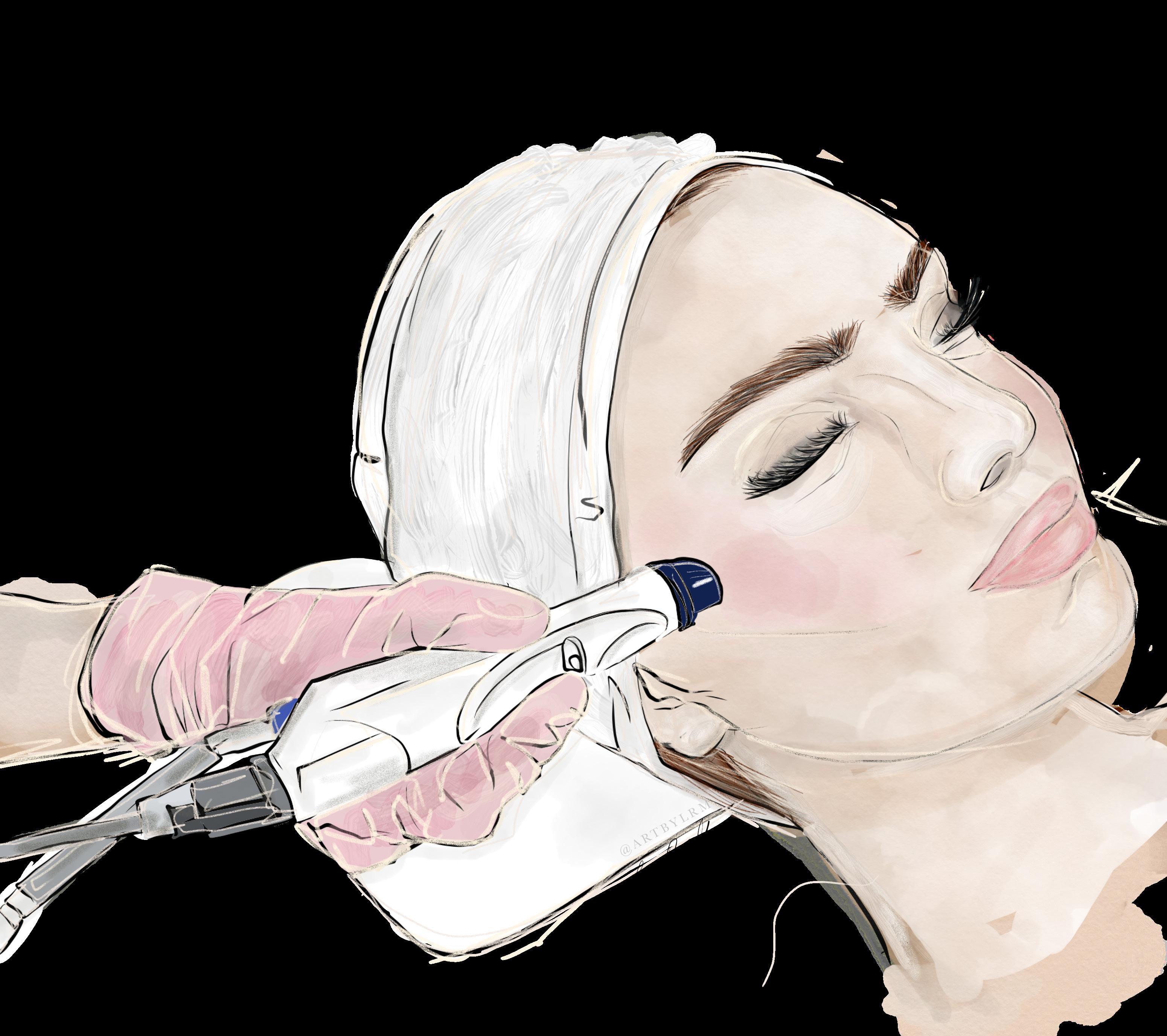
@beautyuncovereduk Discover the latest consumer trends and see aesthetics through your patient’s eyes. Scan the QR code to get your free VIP ticket. Limited availability. Get your FREE VIP ticket
A True Reflection of Aesthetic Refinement
Harnessing the power of the world’s first OxiFreeTM technology, this innovative HA filler brings an exclusive combination of unparalleled projection power and supreme suppleness.
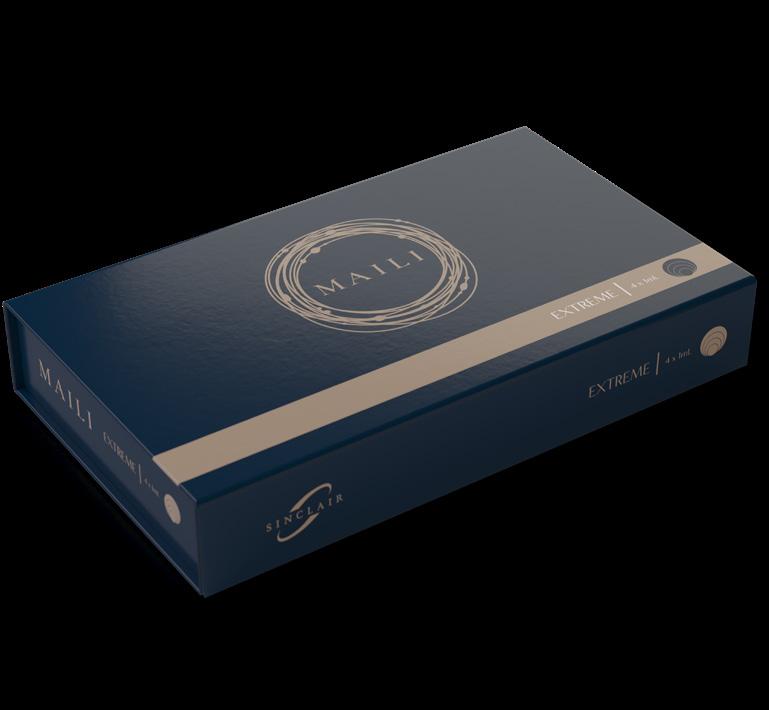

Discover a range of 4 variants incorporating lidocaine designed for gifted professionals to refine their craft with precision and care.
MaiLi.com
CE mark CE2797. MaiLi devices are intended for correction of facial wrinkles or folds, for the definition or enhancement of the lips, and for the restoration or enhancement of the facial volume. MaiLi is also indicated for treatment of scars and volume lost by HIV associated lipoatrophy. Information is supplied with each MaiLi variant. MA-PA-032021-Rev A.


























































































































 Skincare
Skincare
































































 Sam Eidukas, S Aesthetics
Sam Eidukas, S Aesthetics














































































































































































